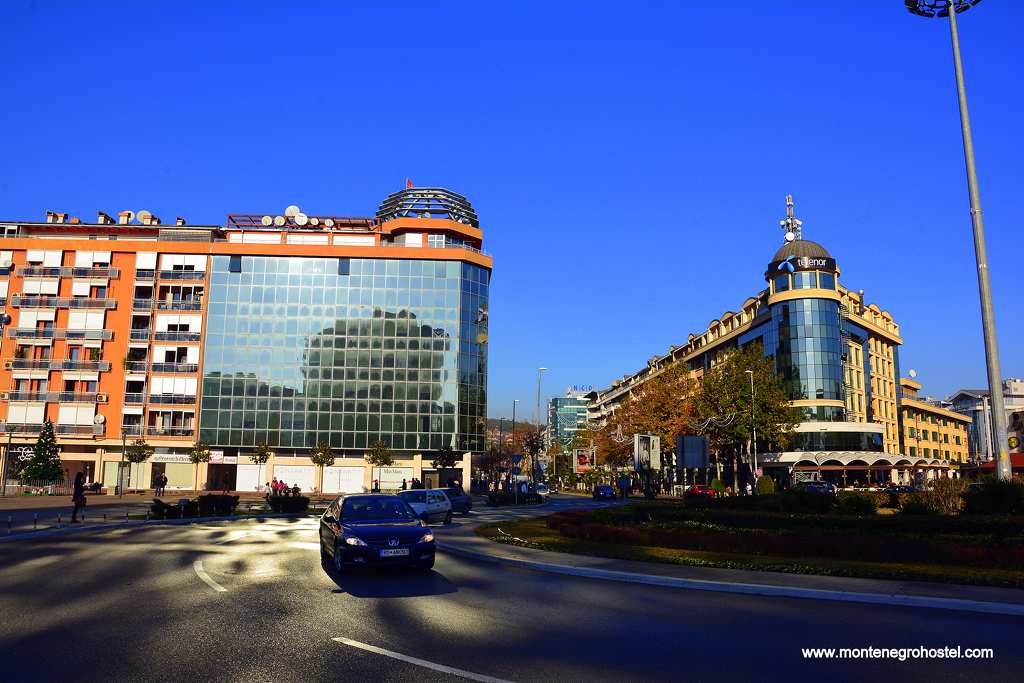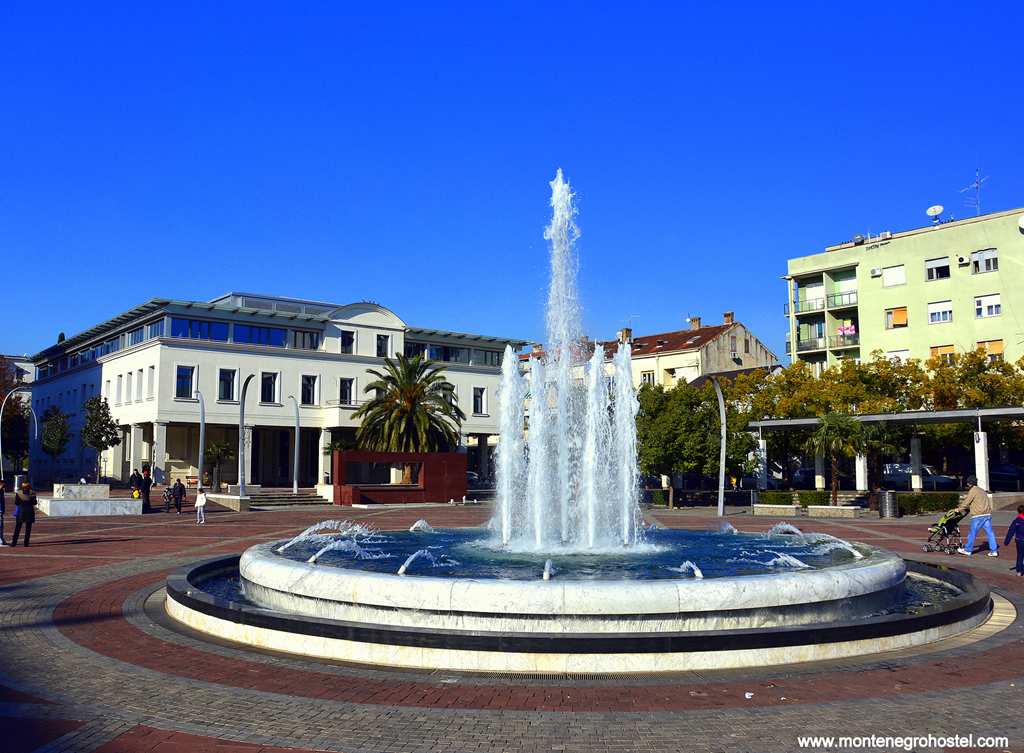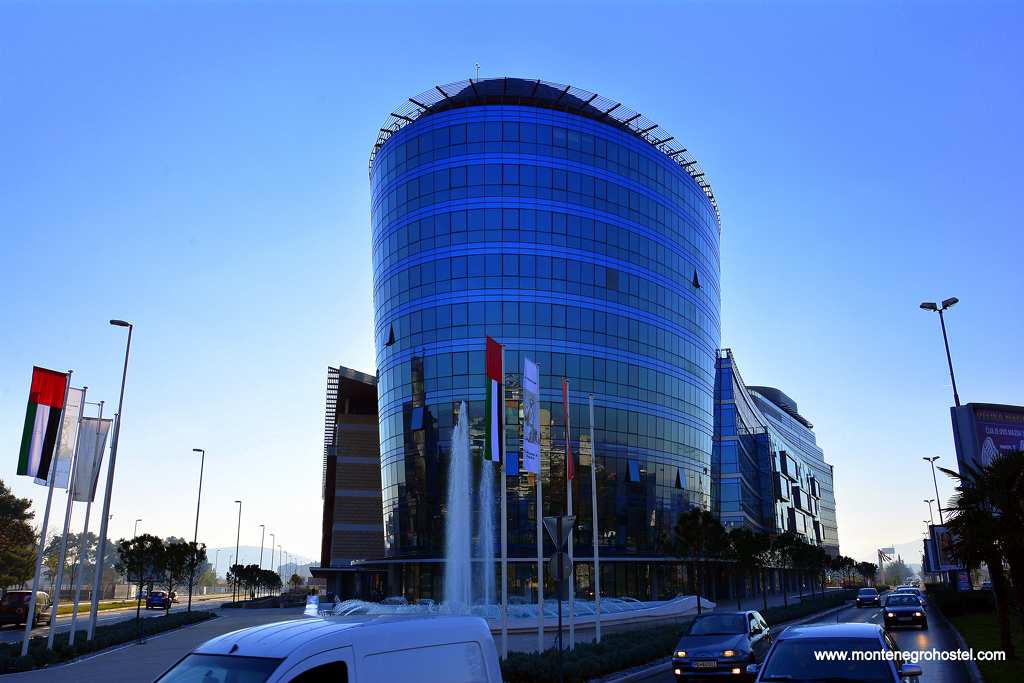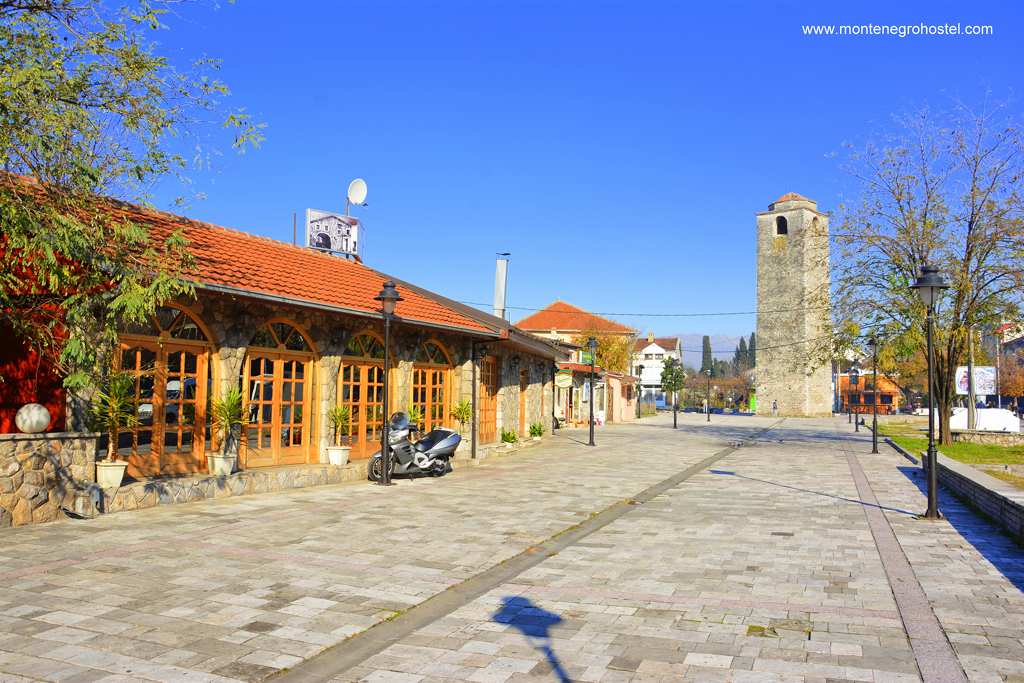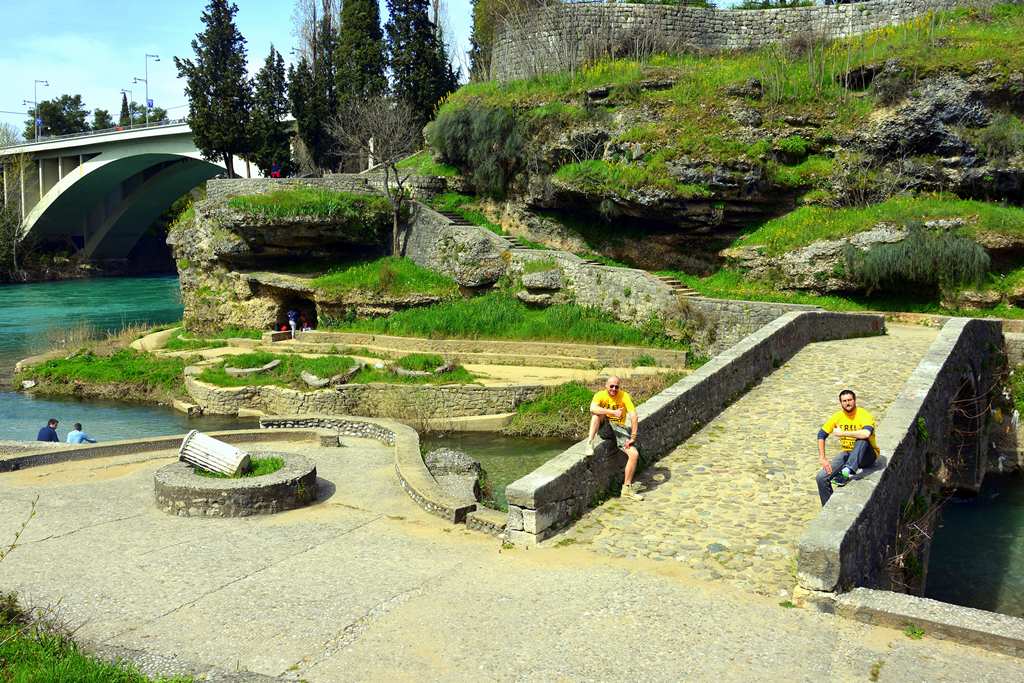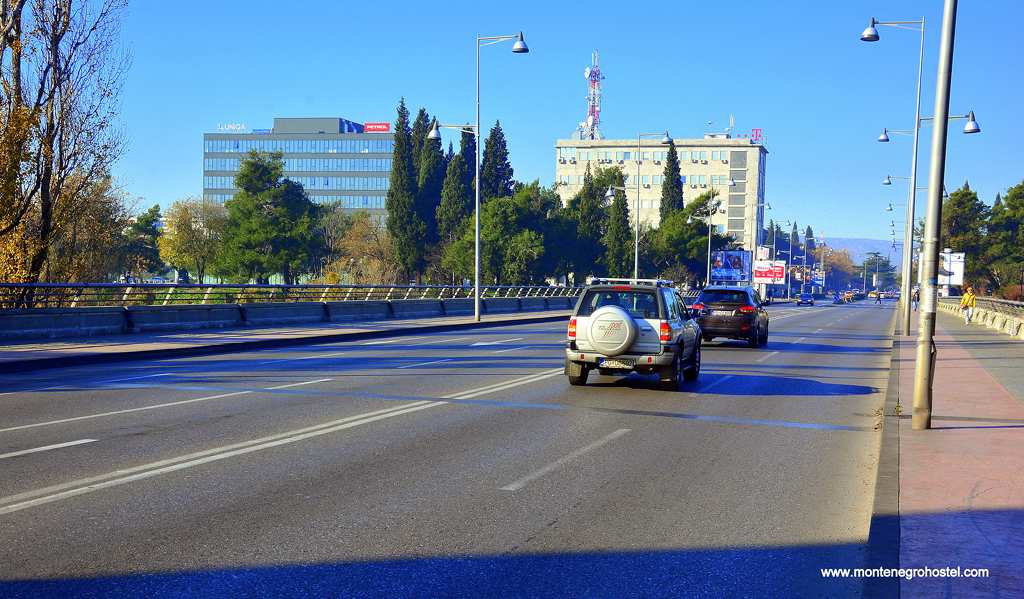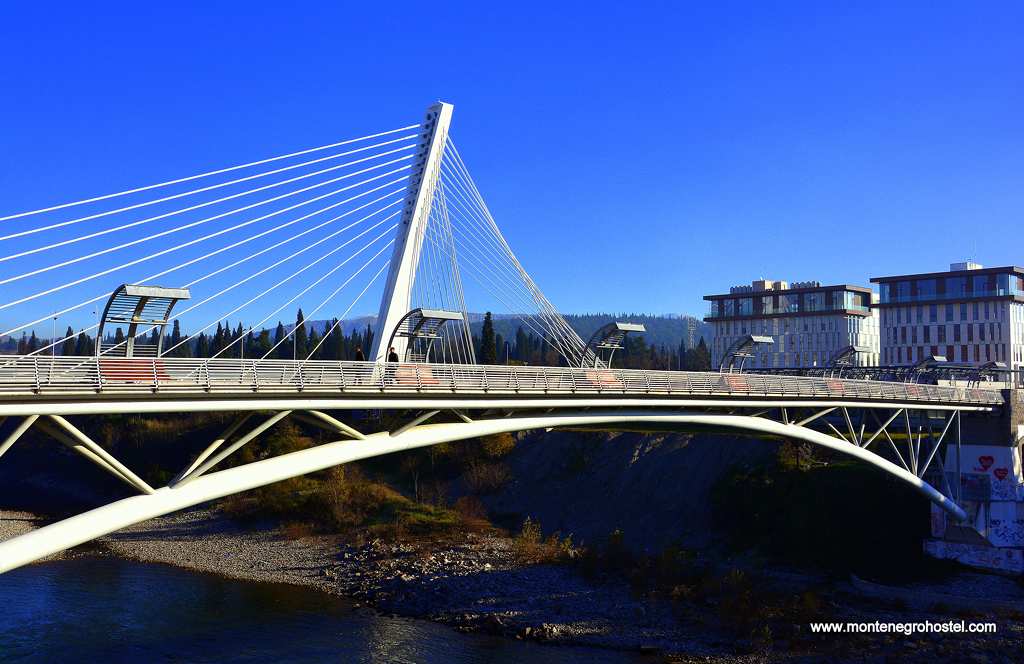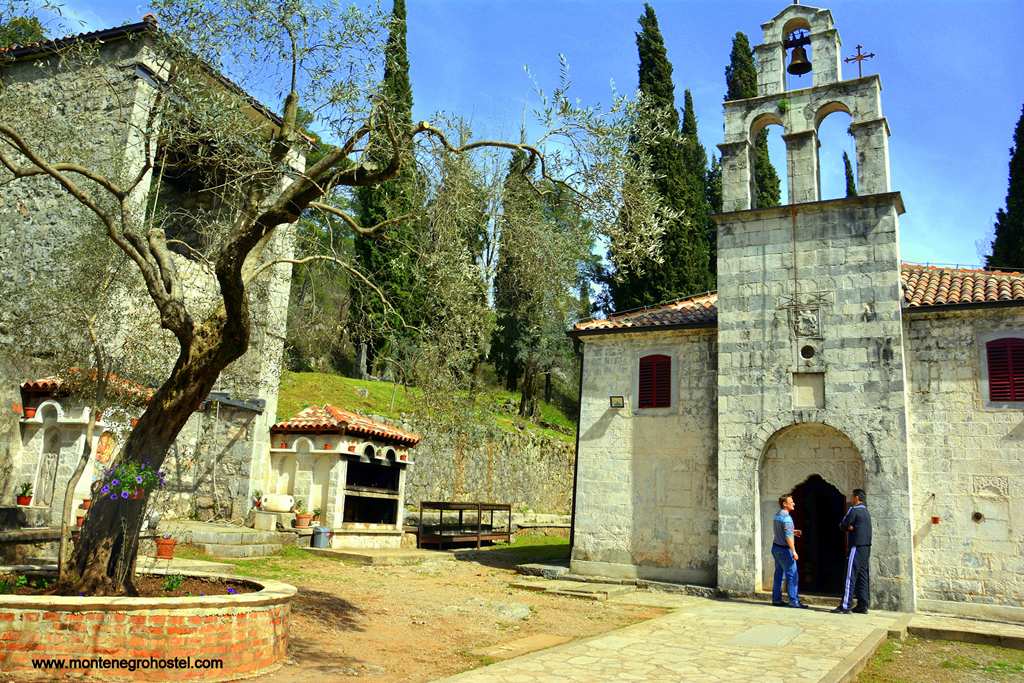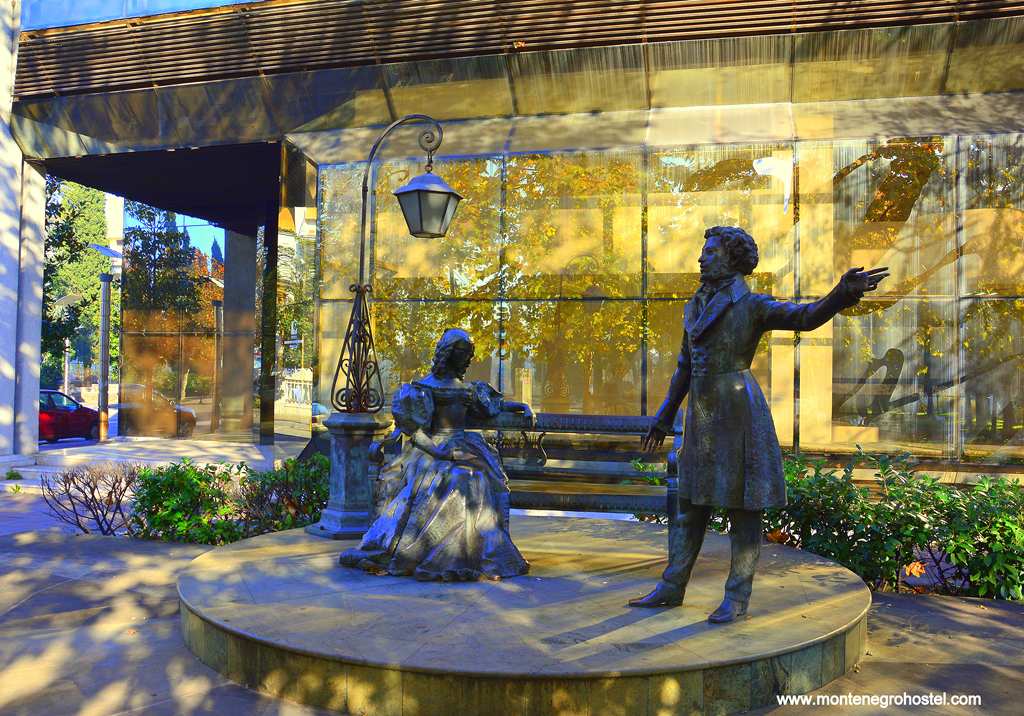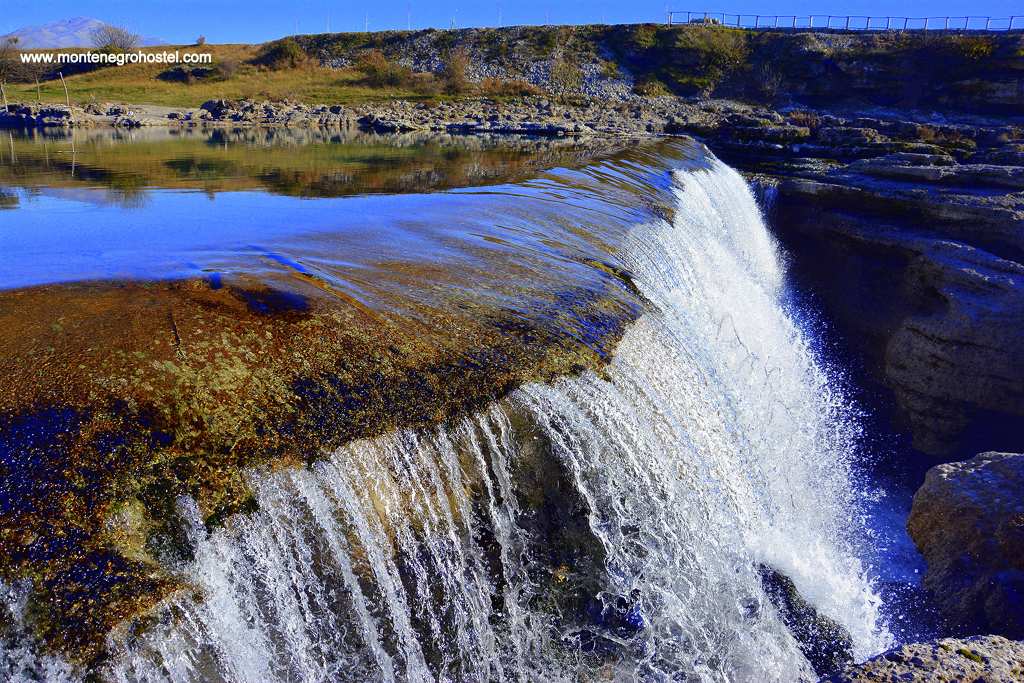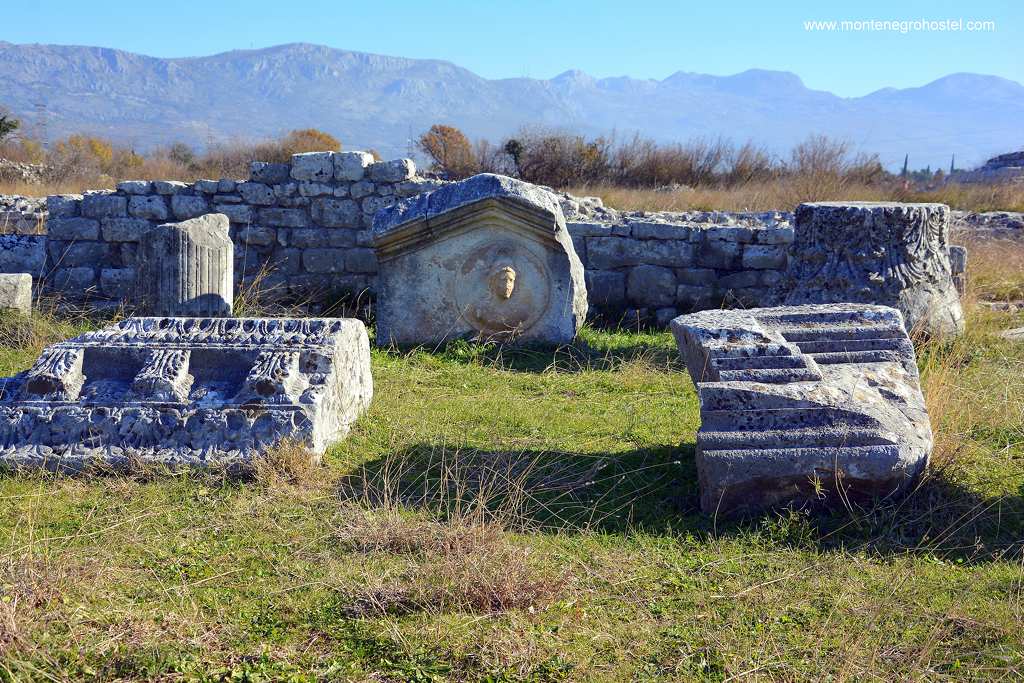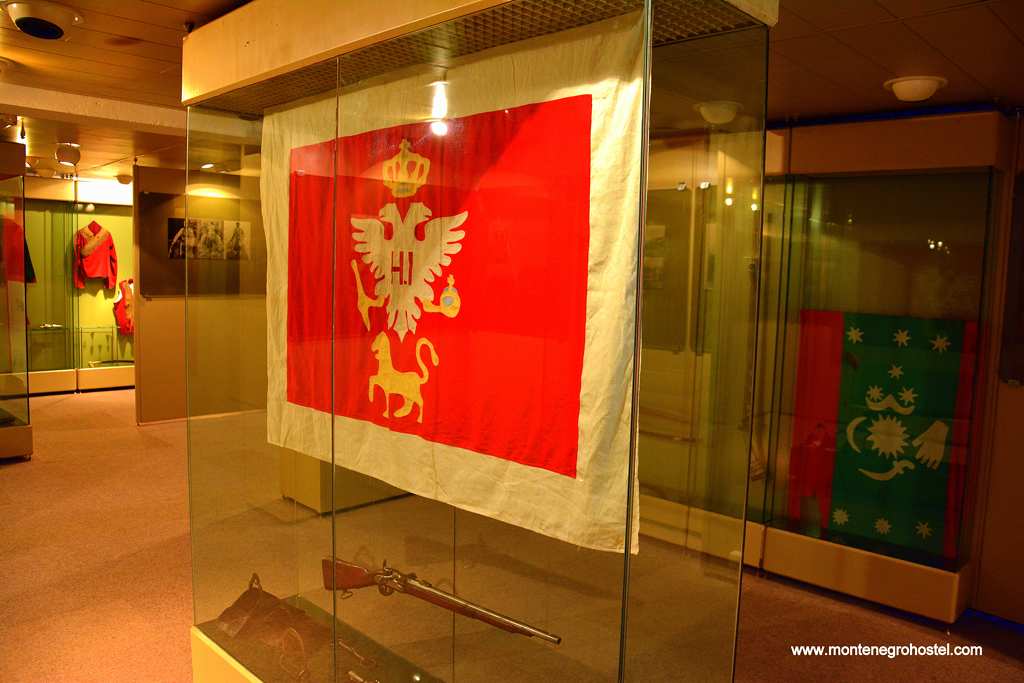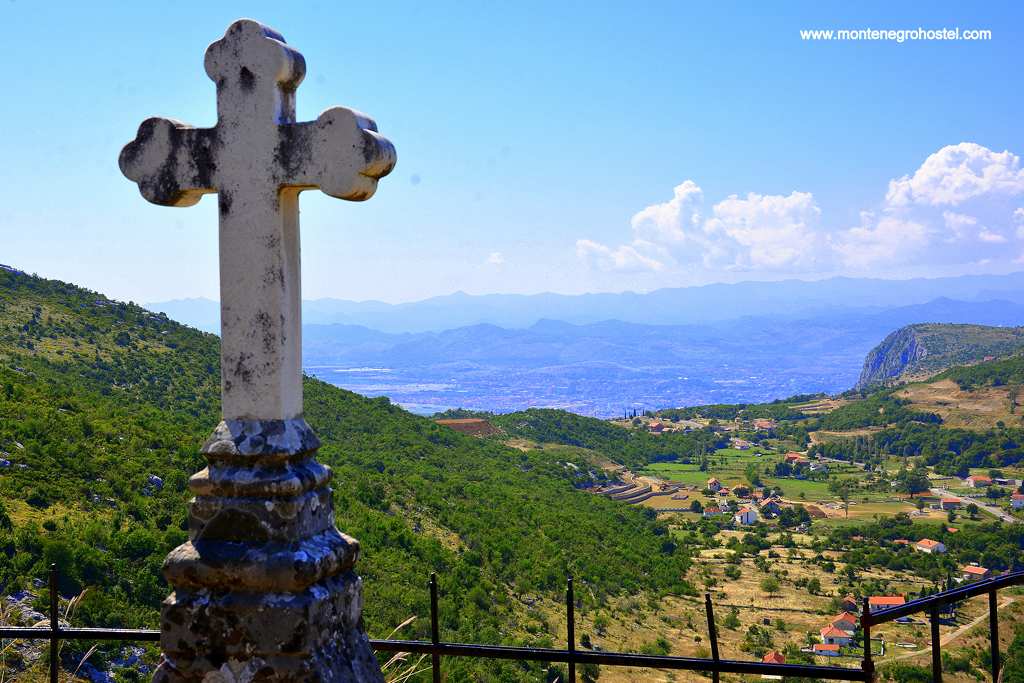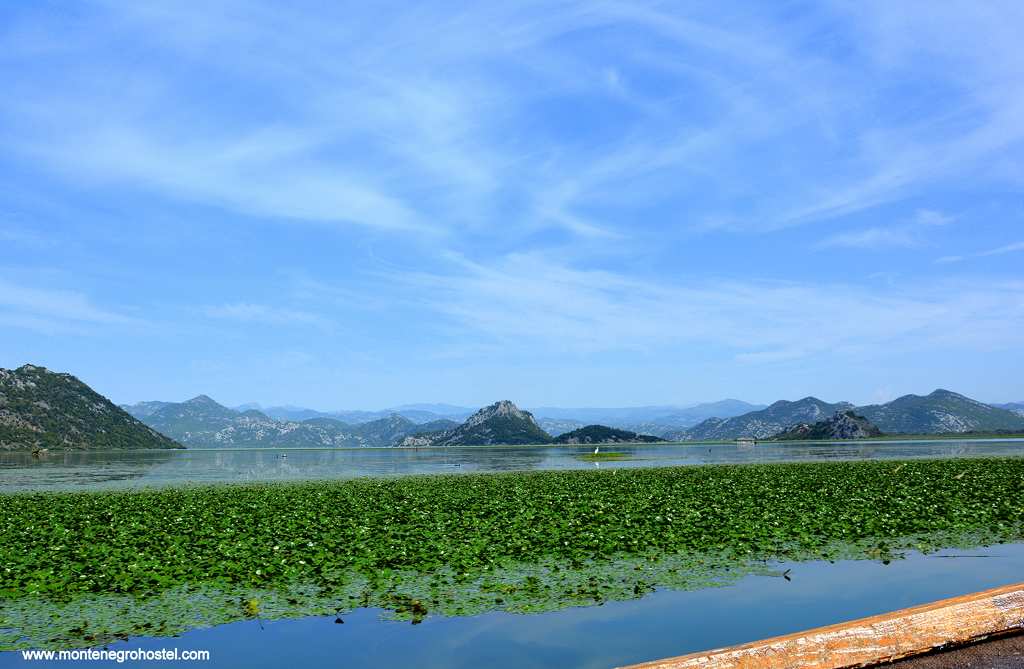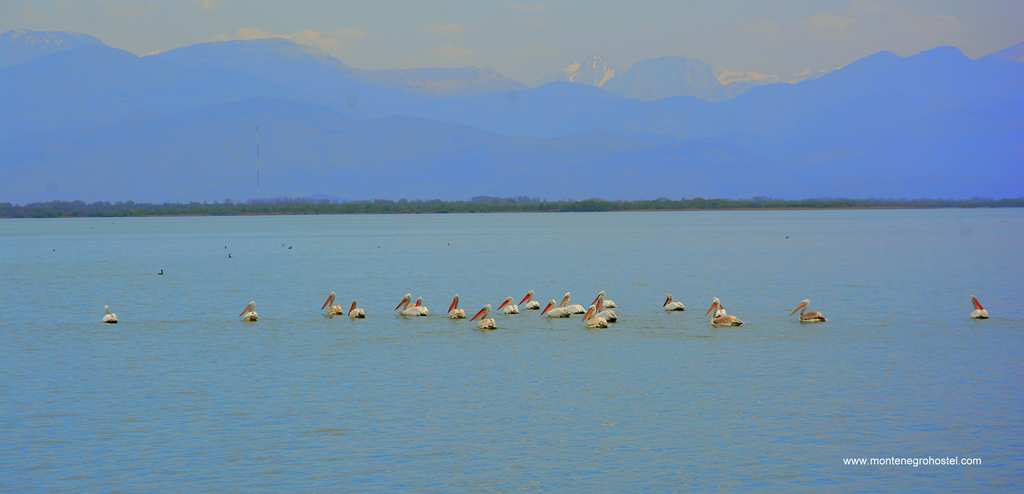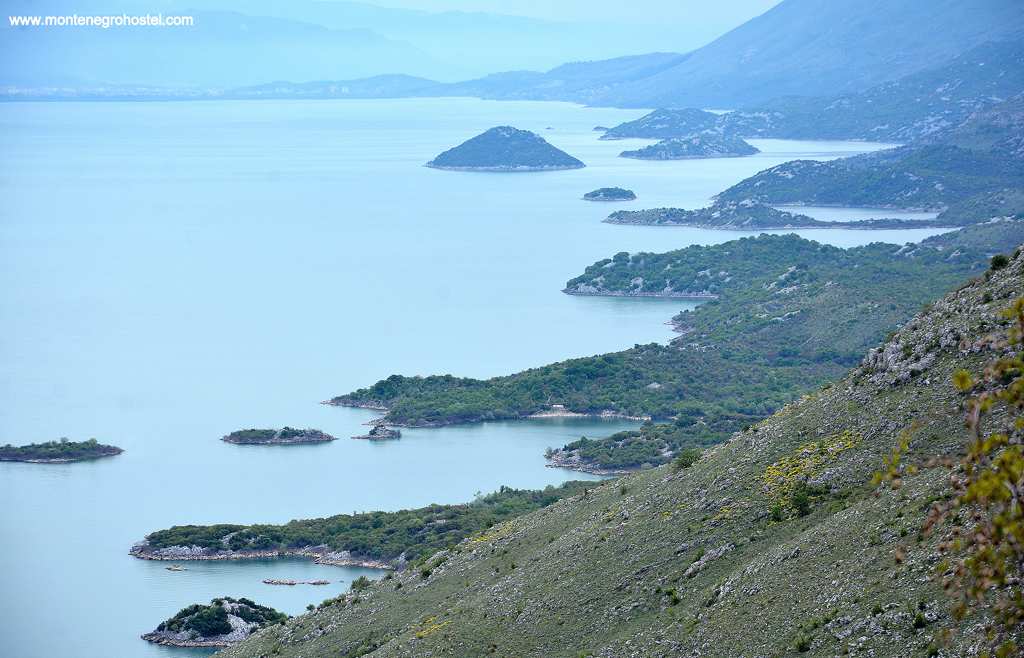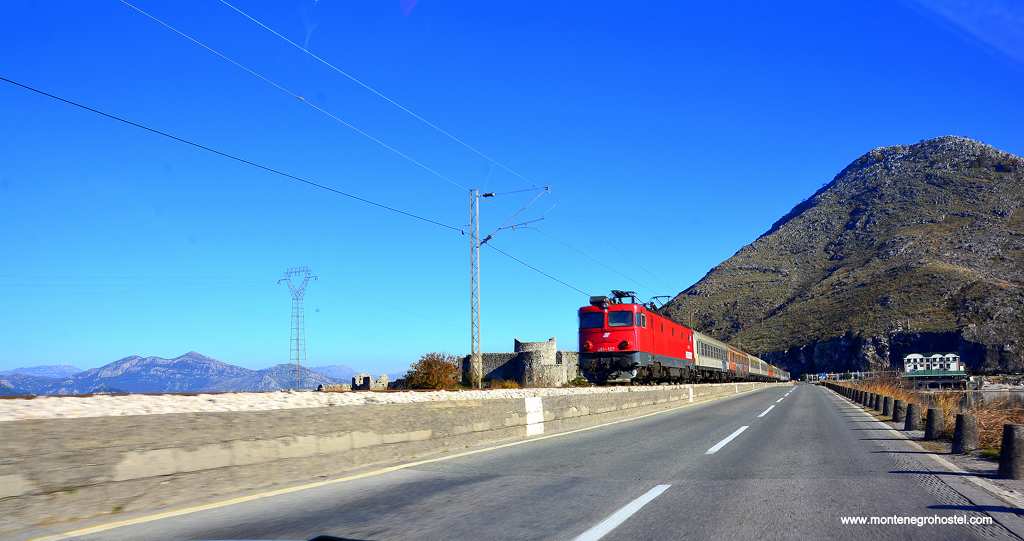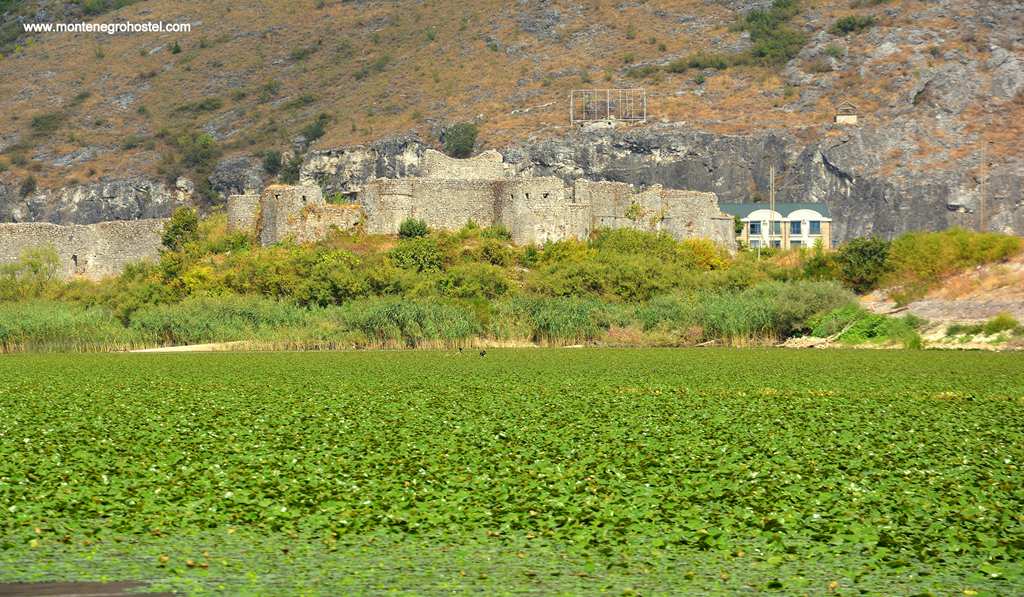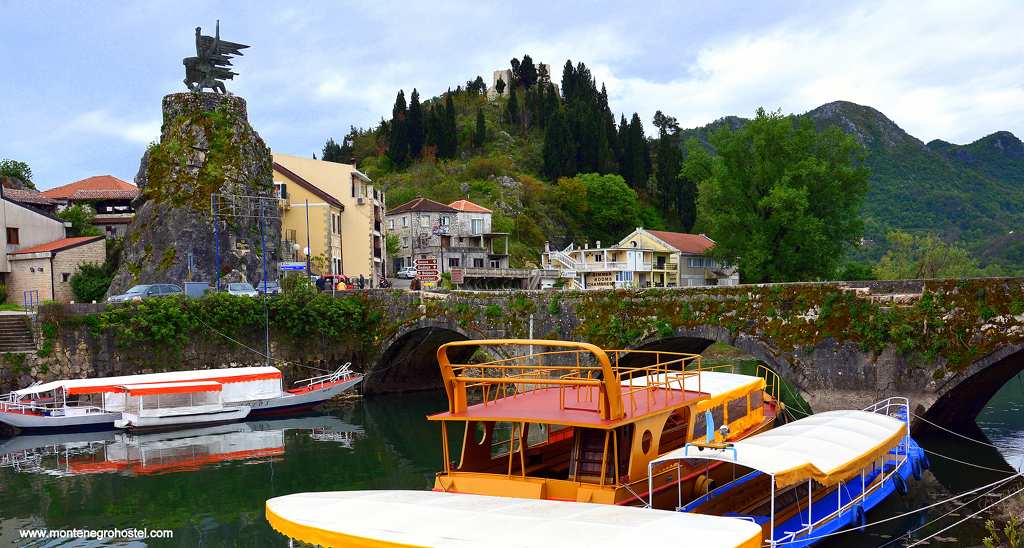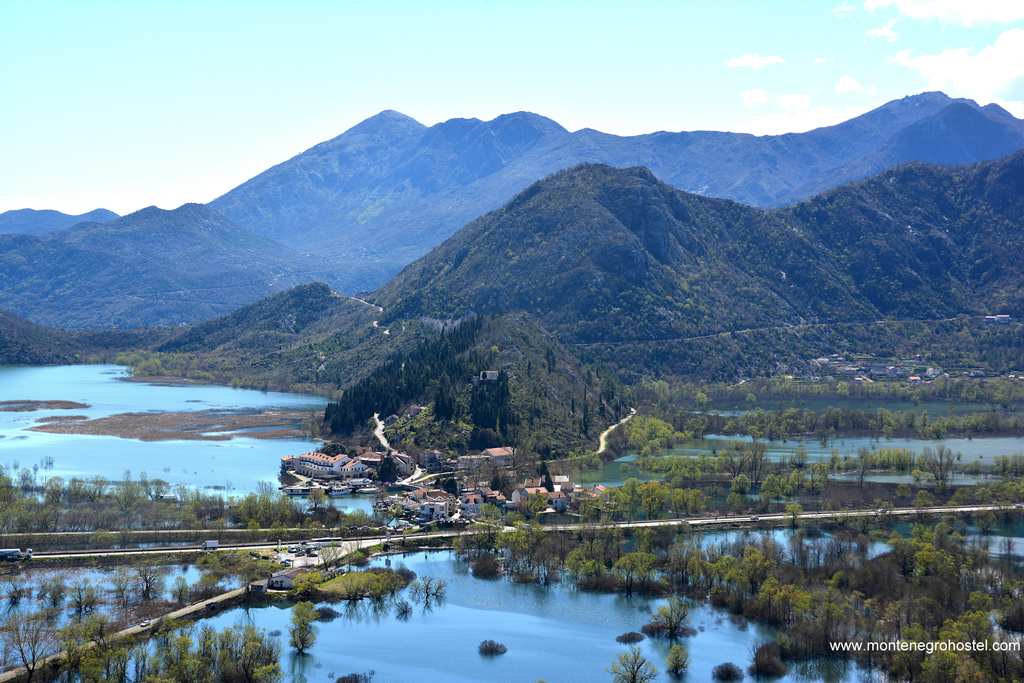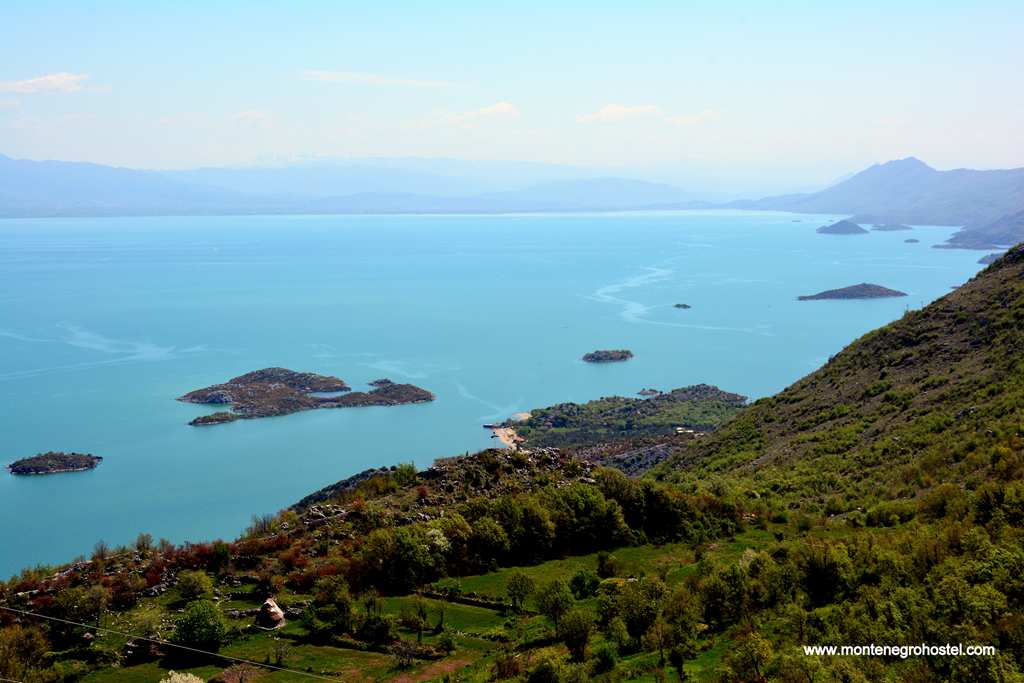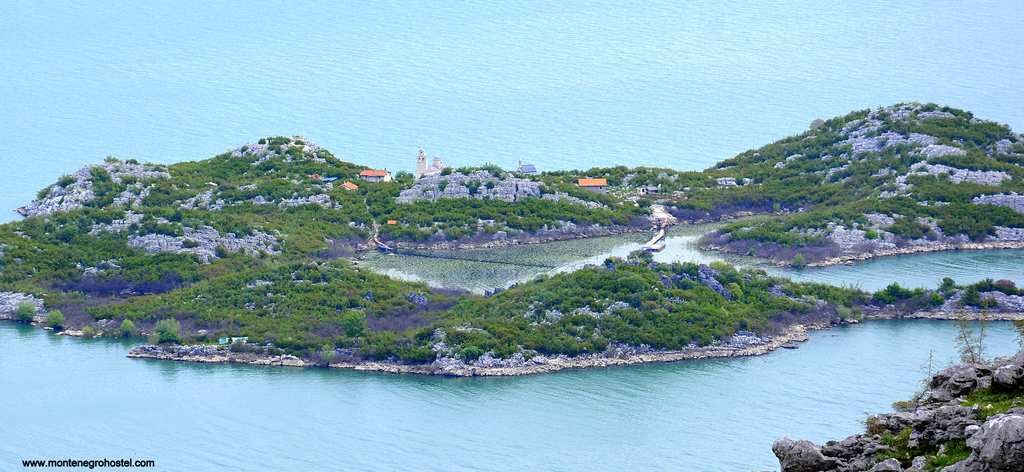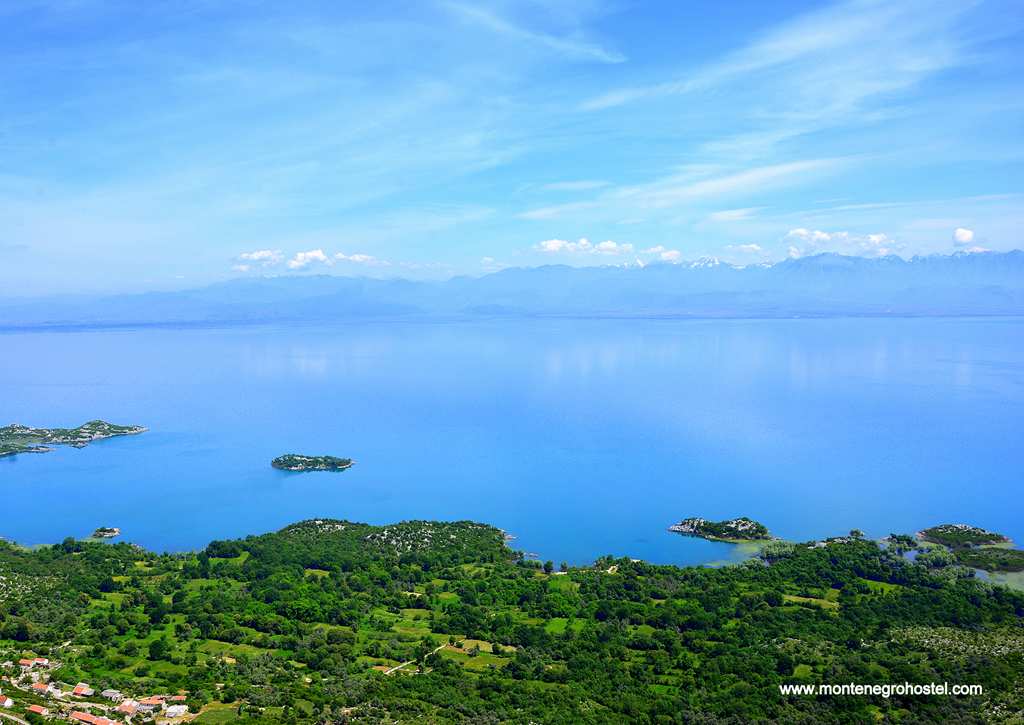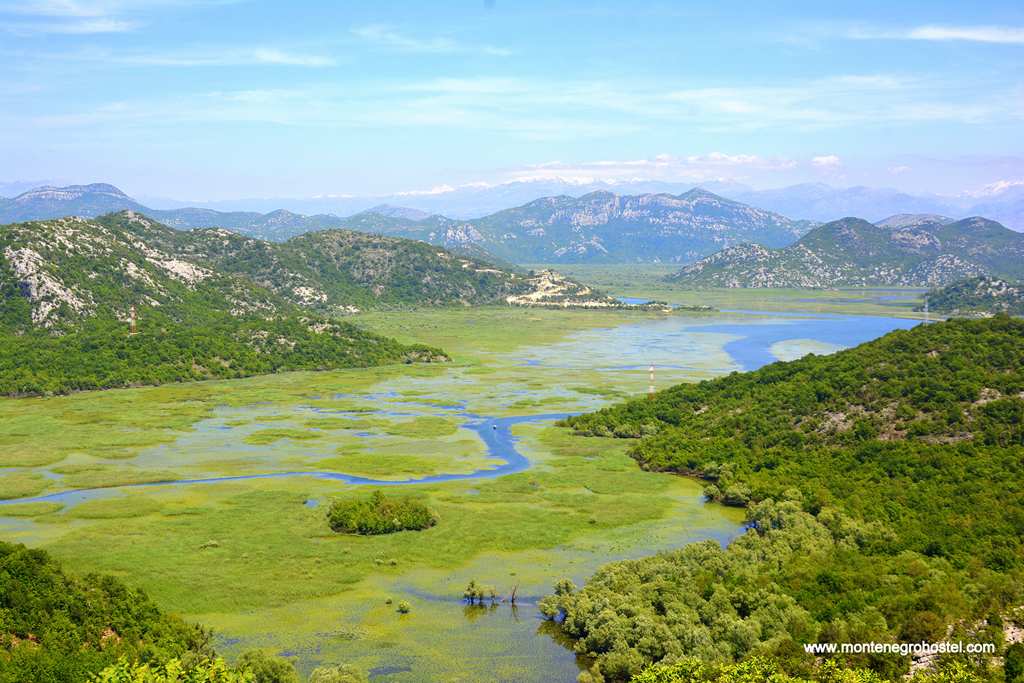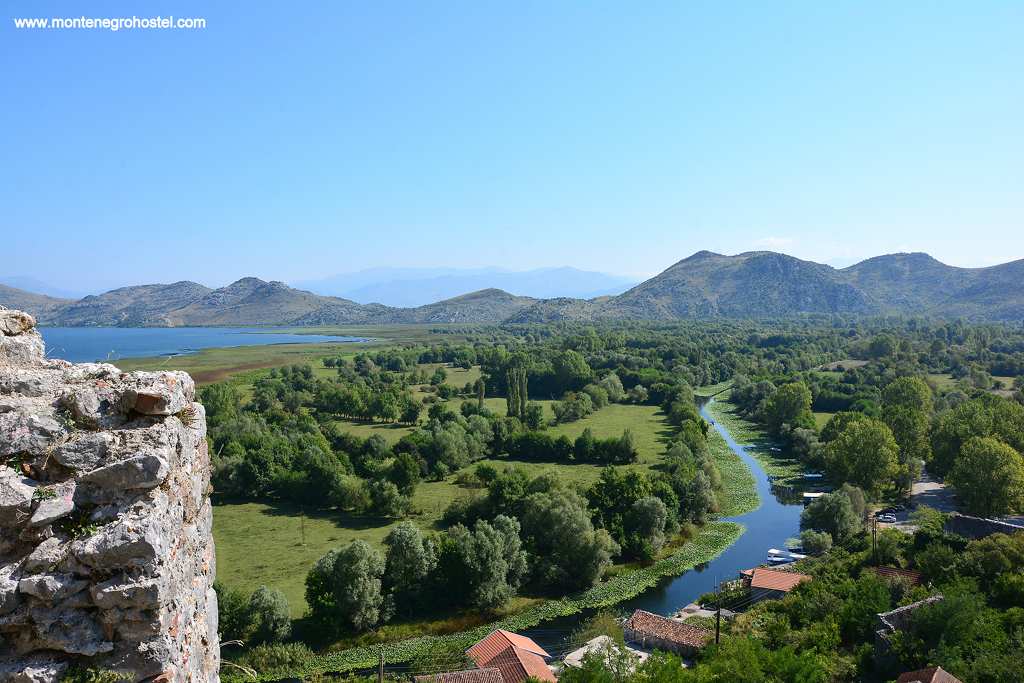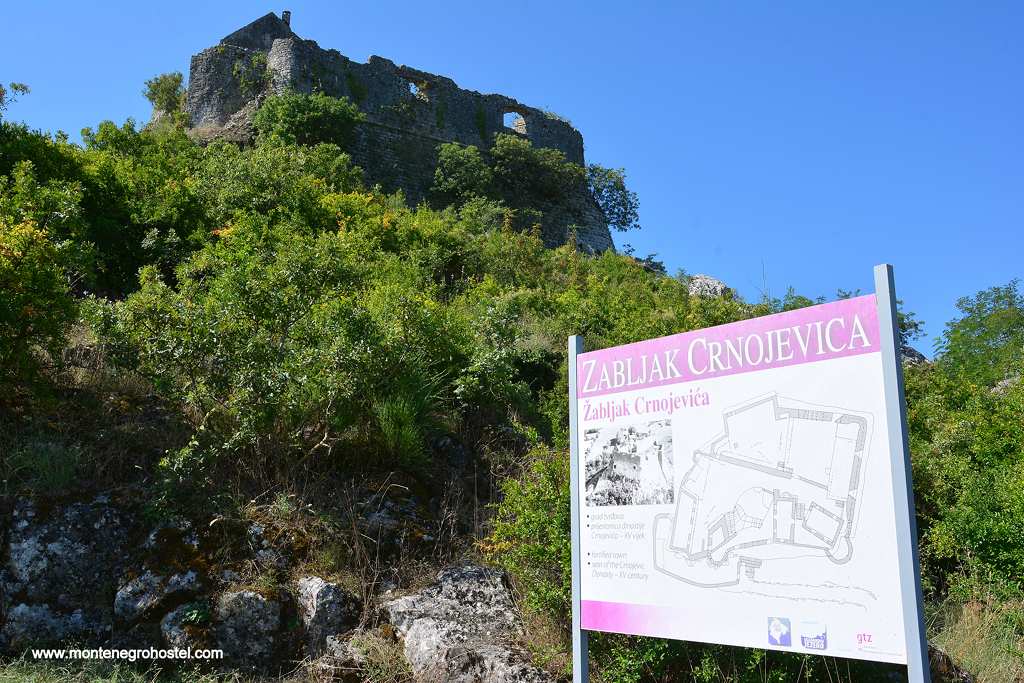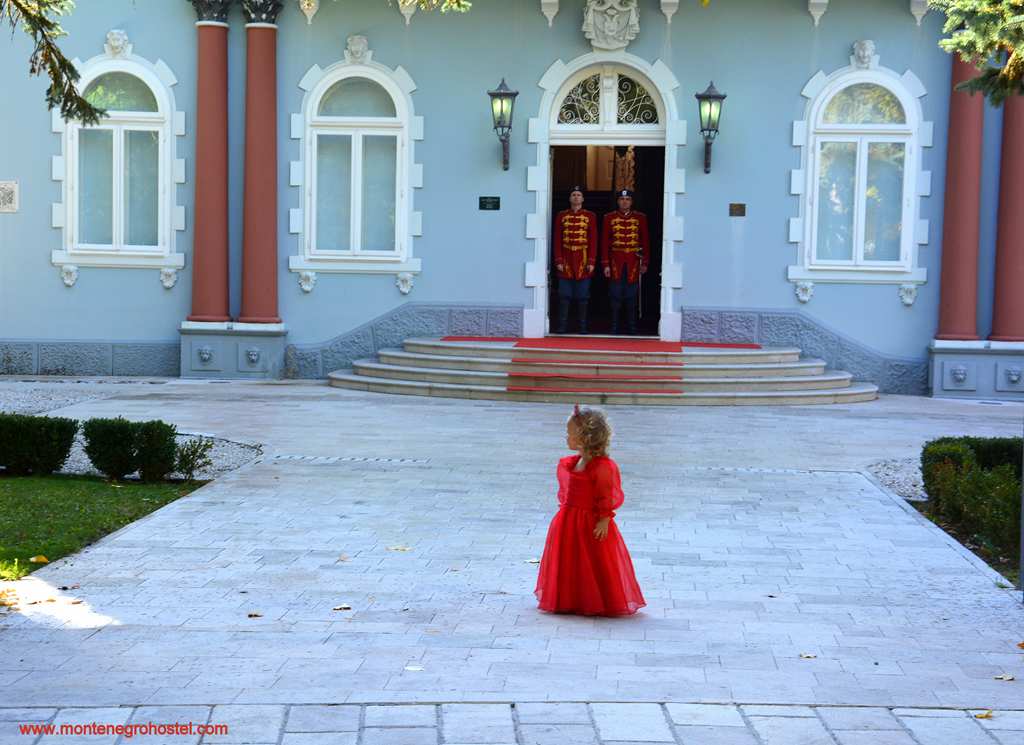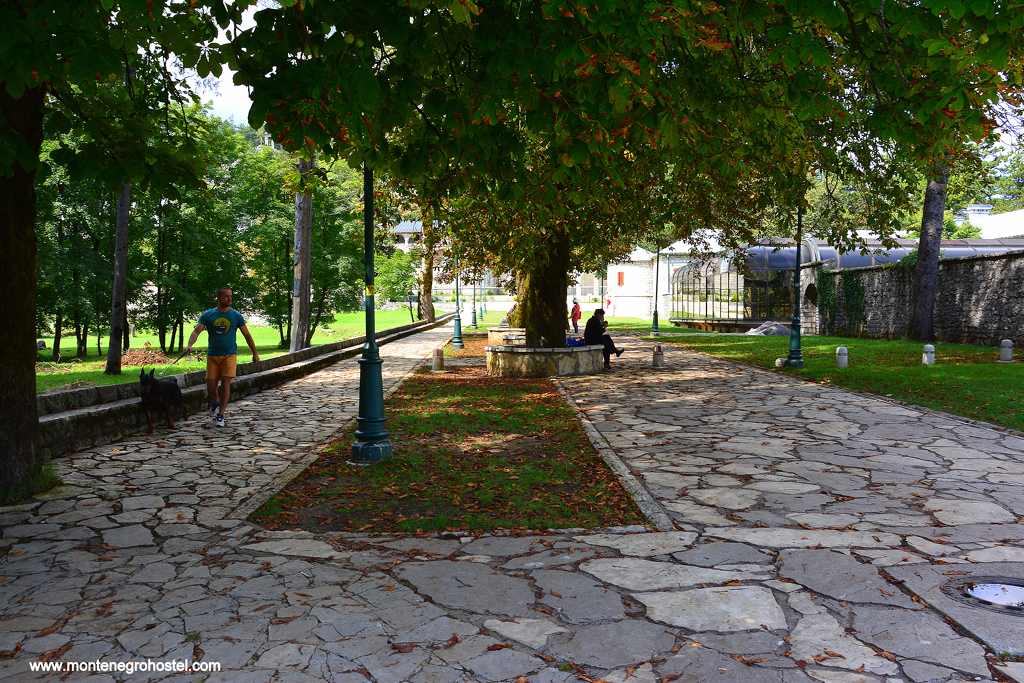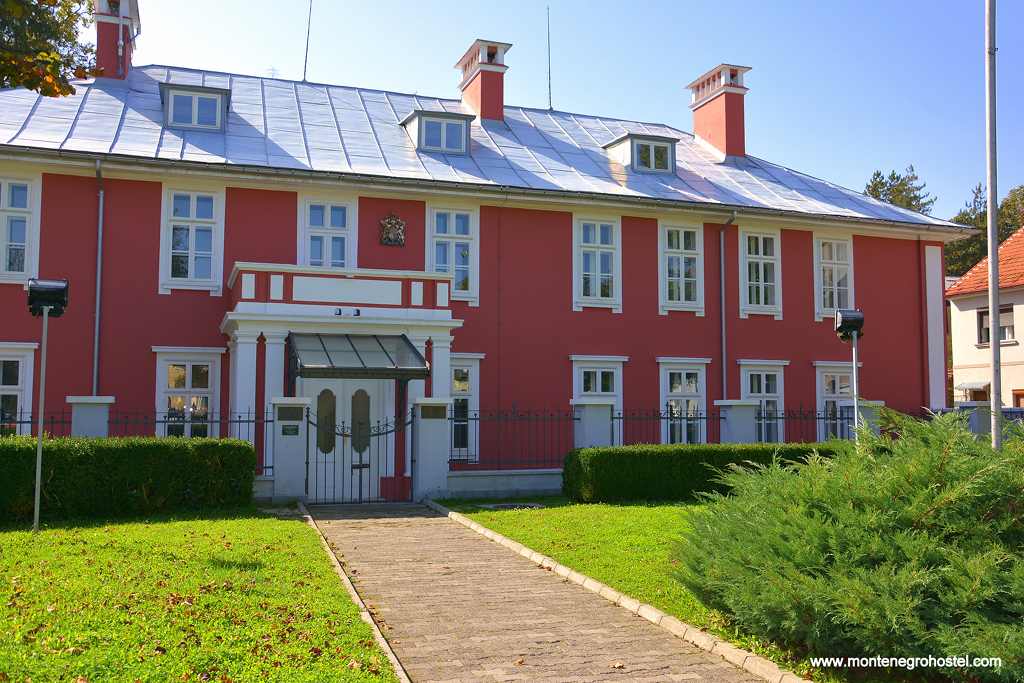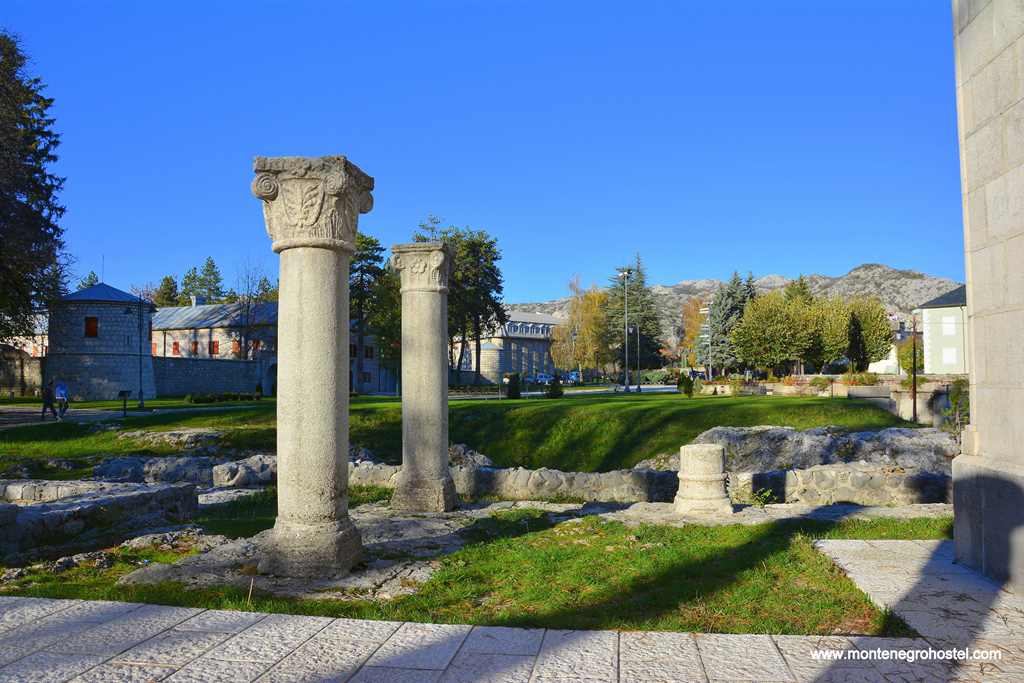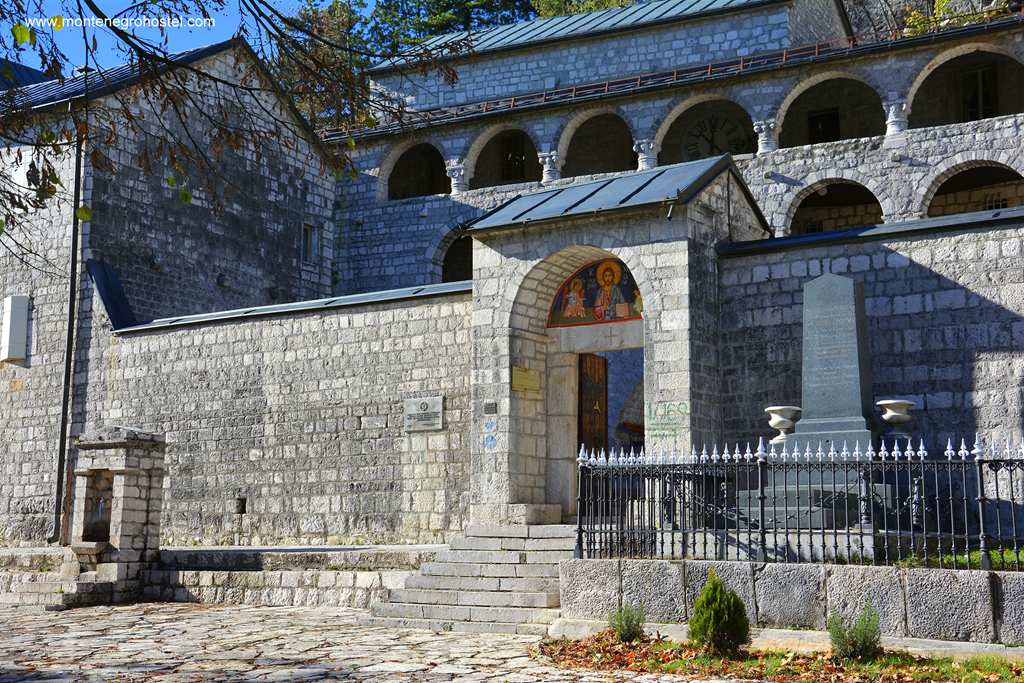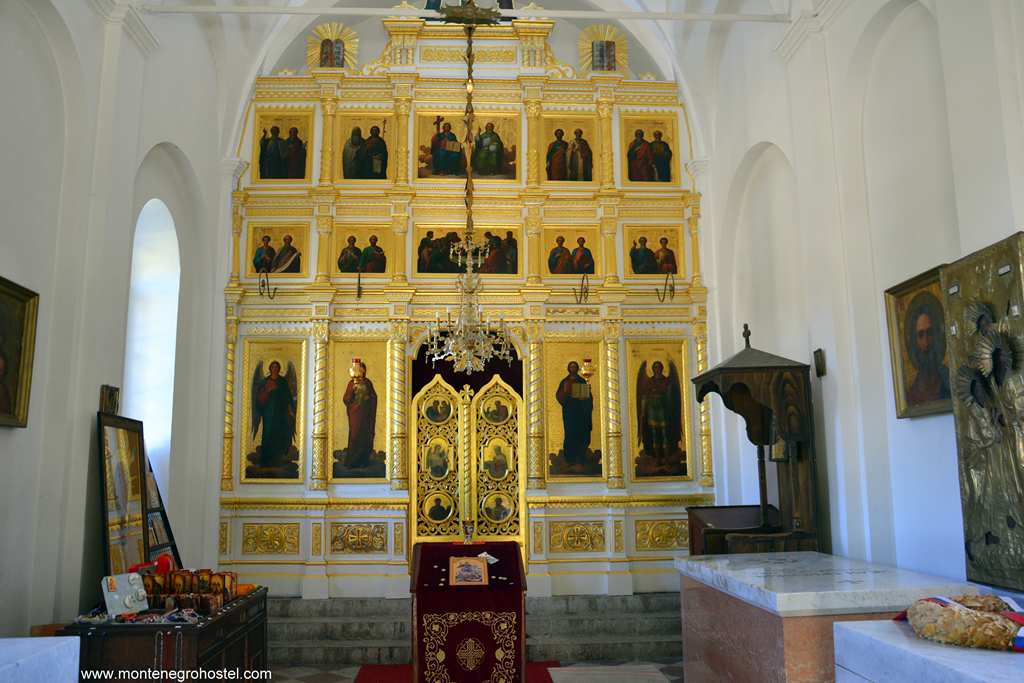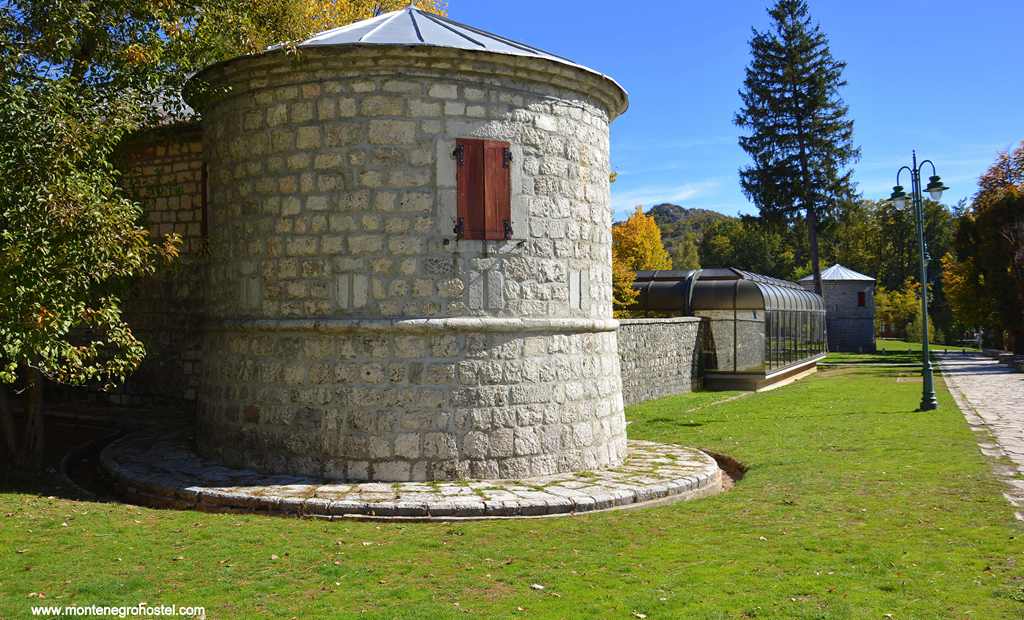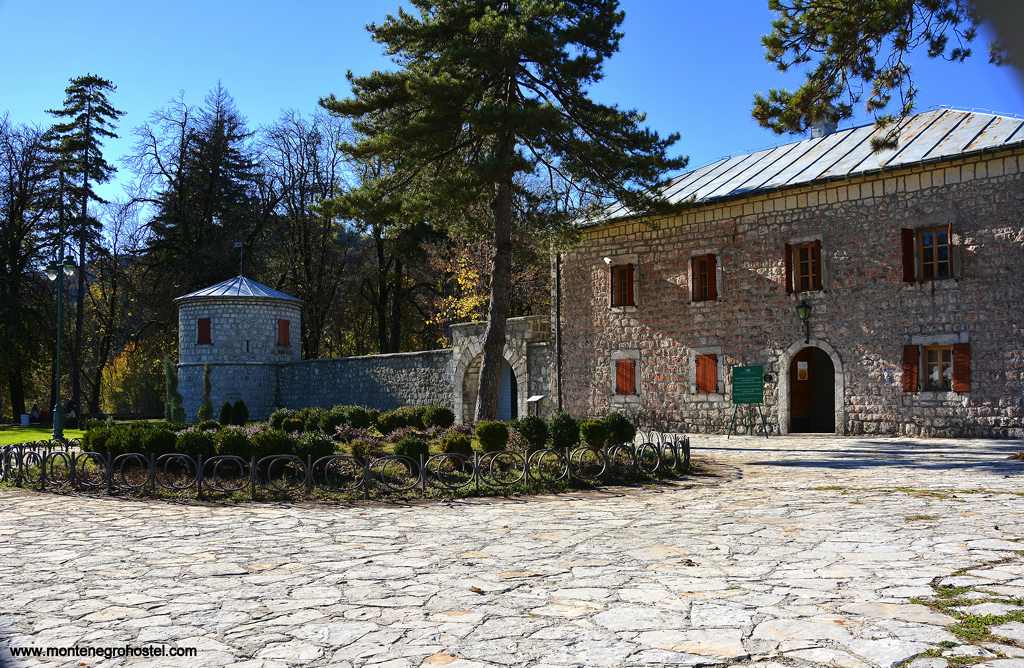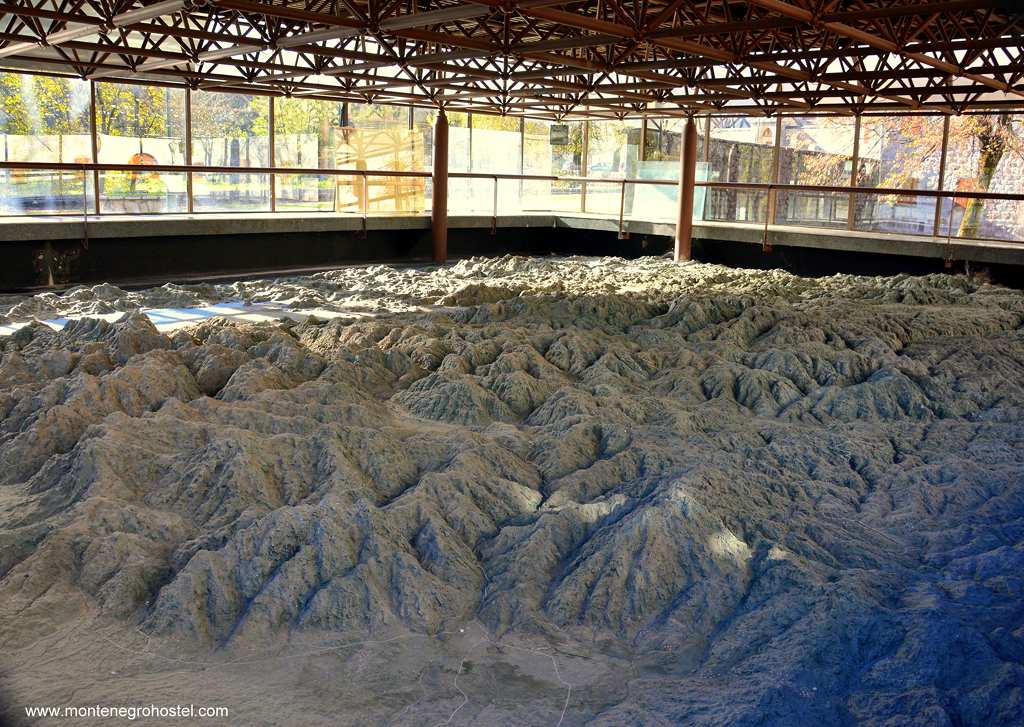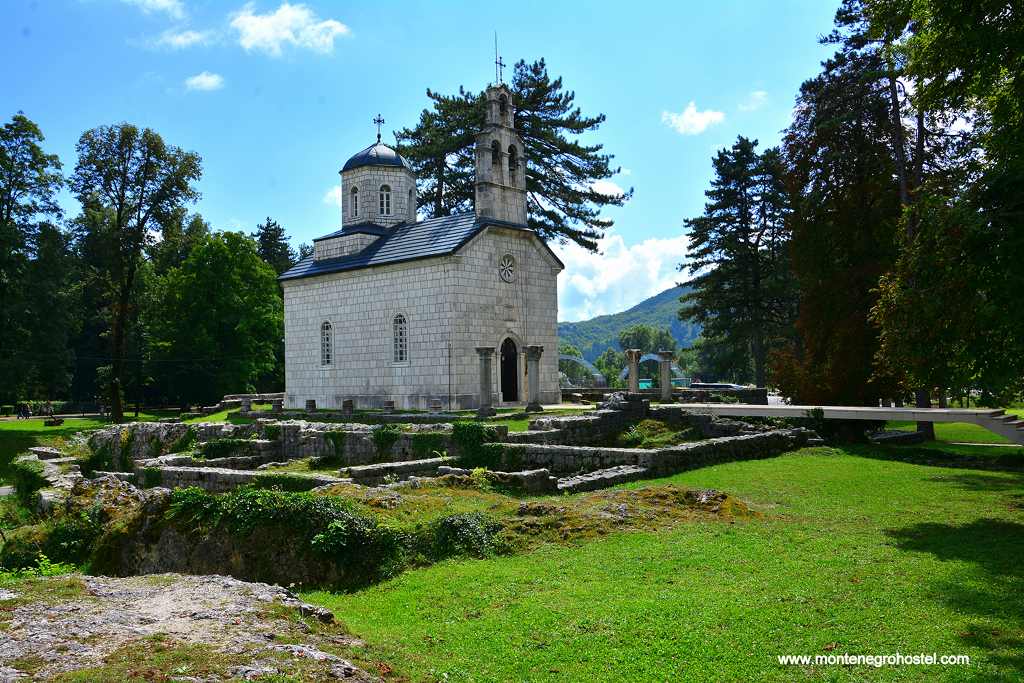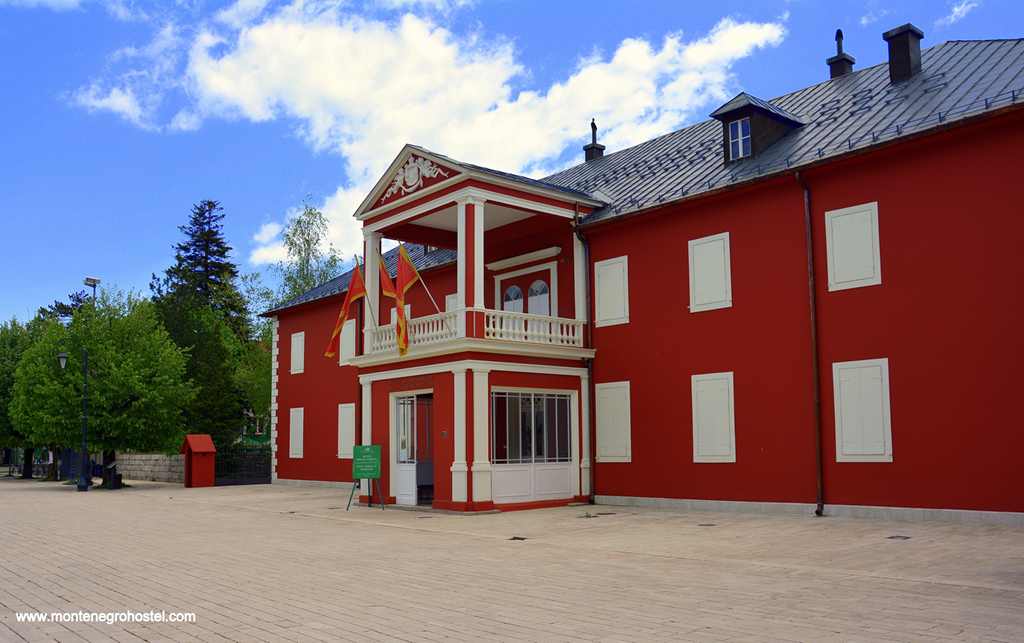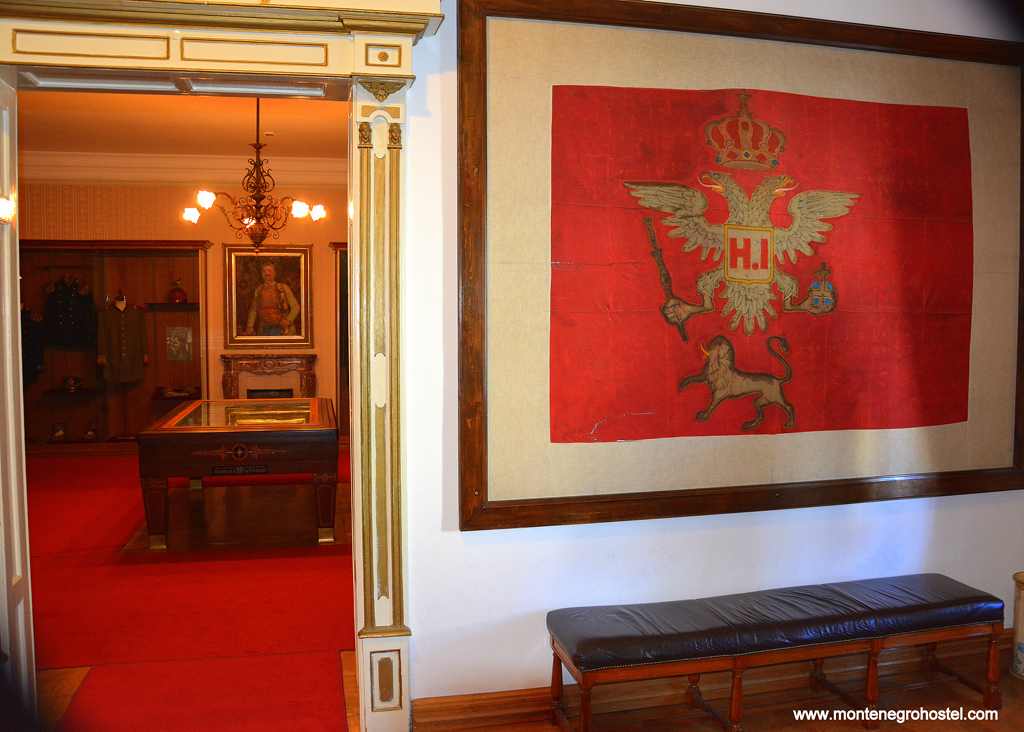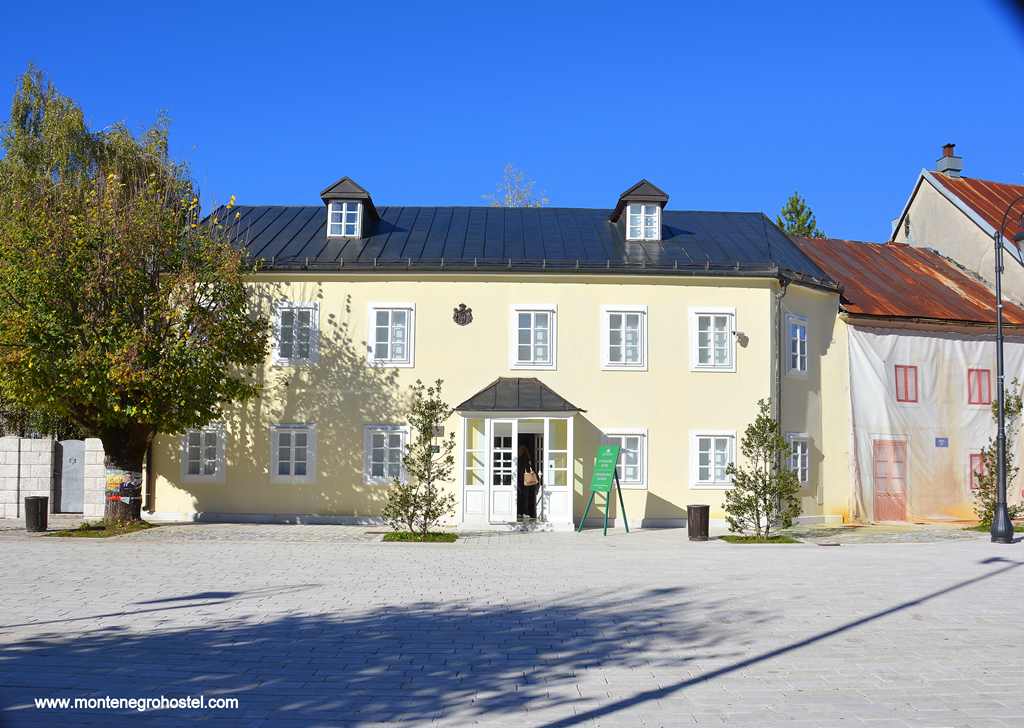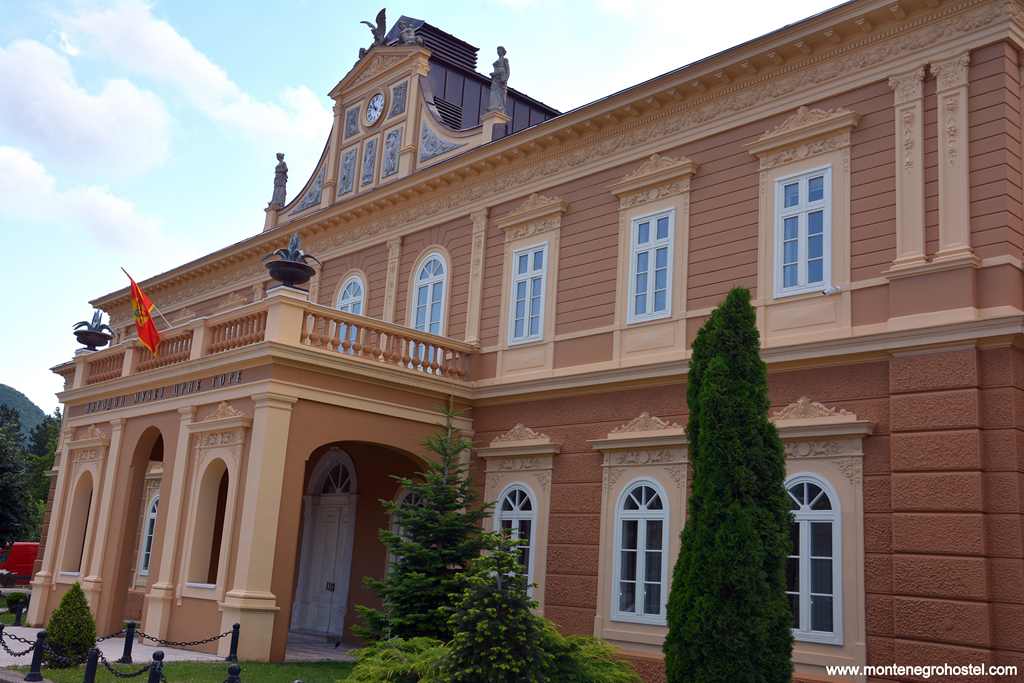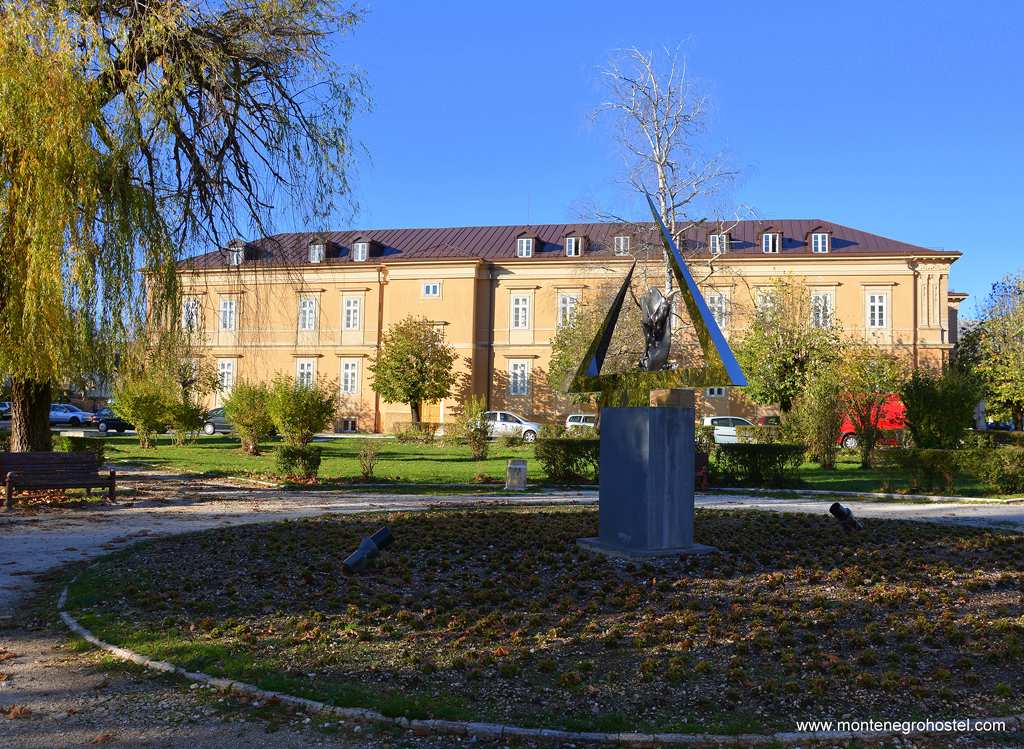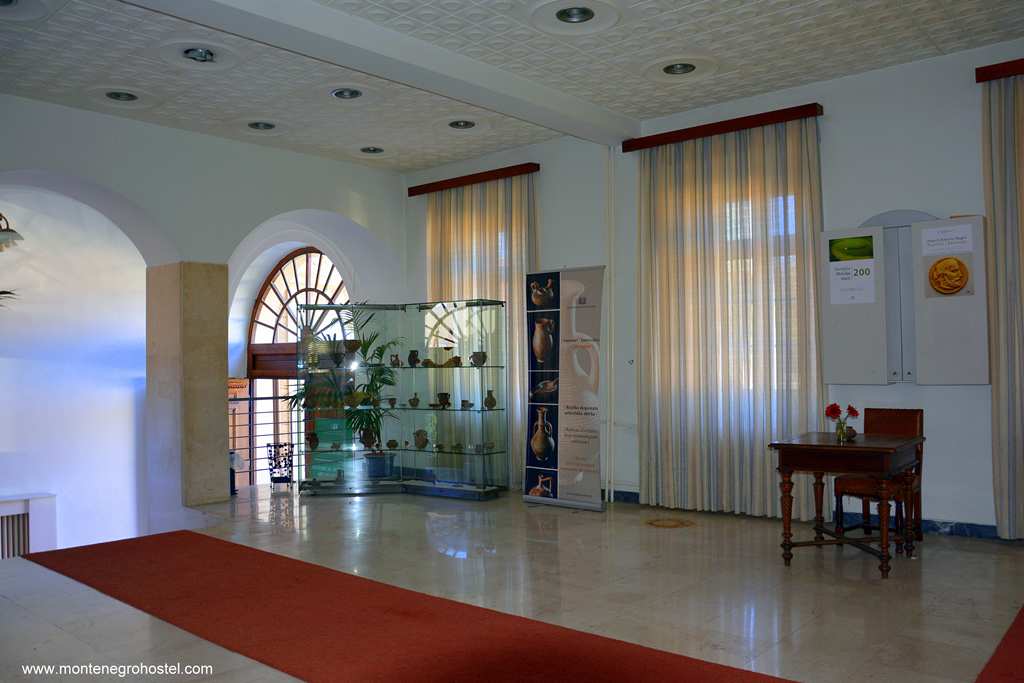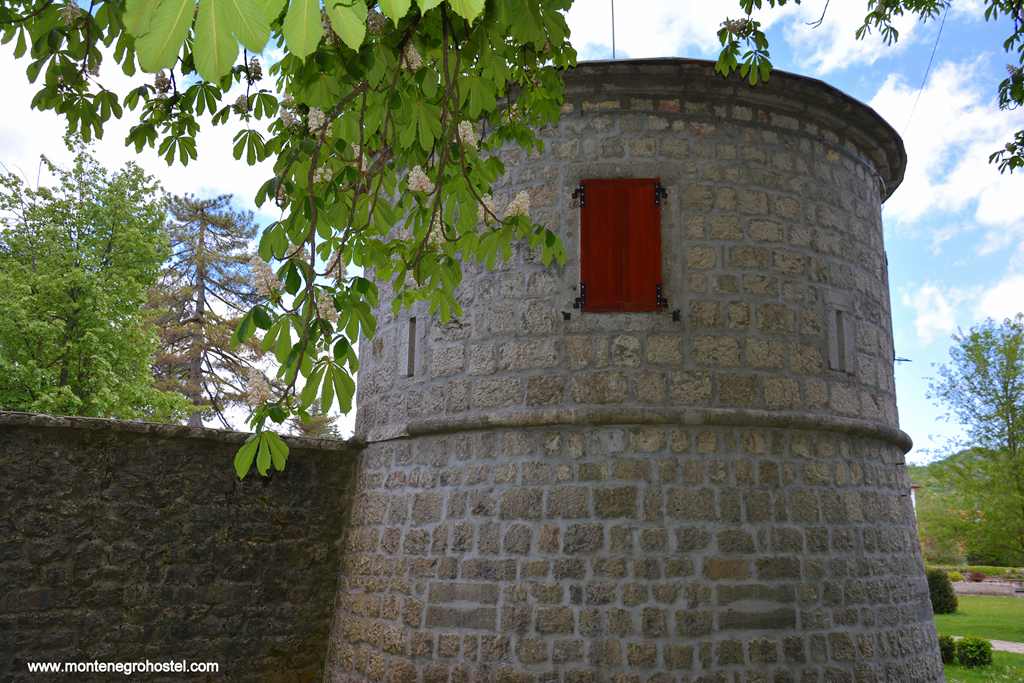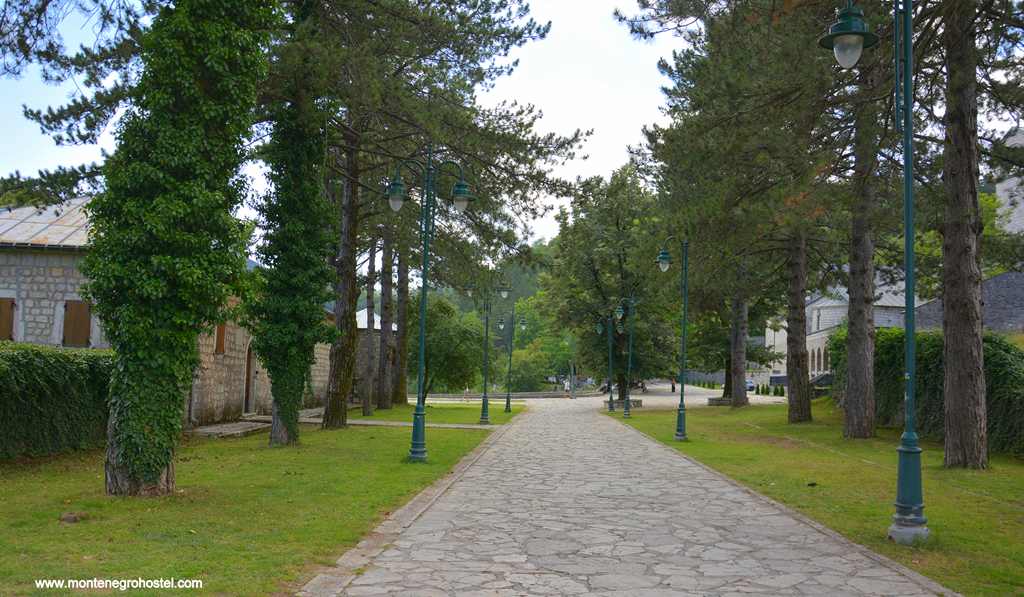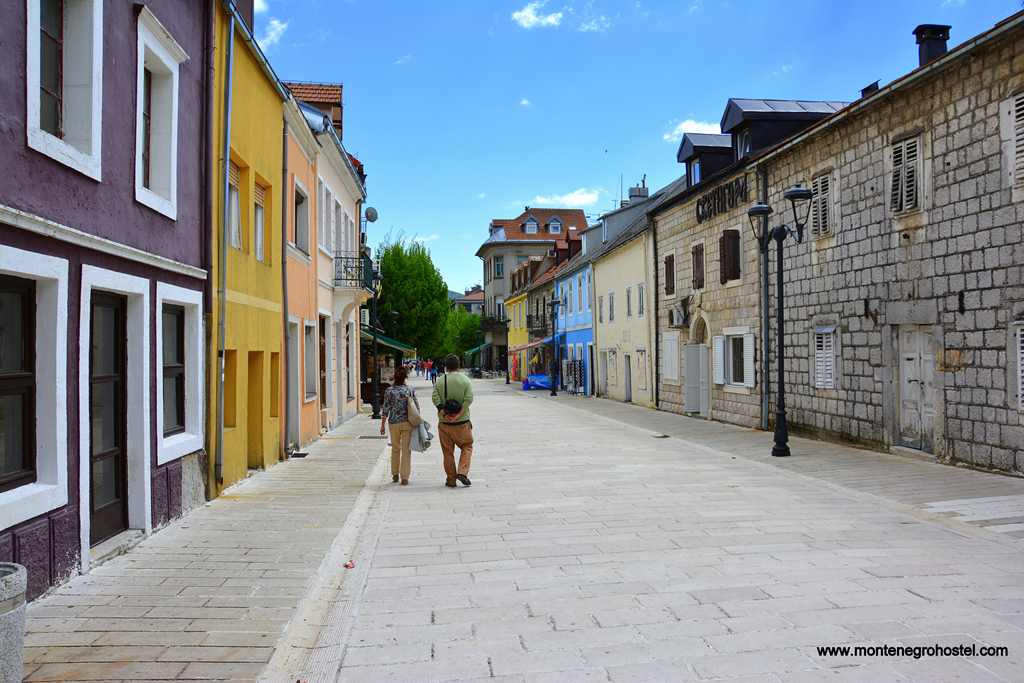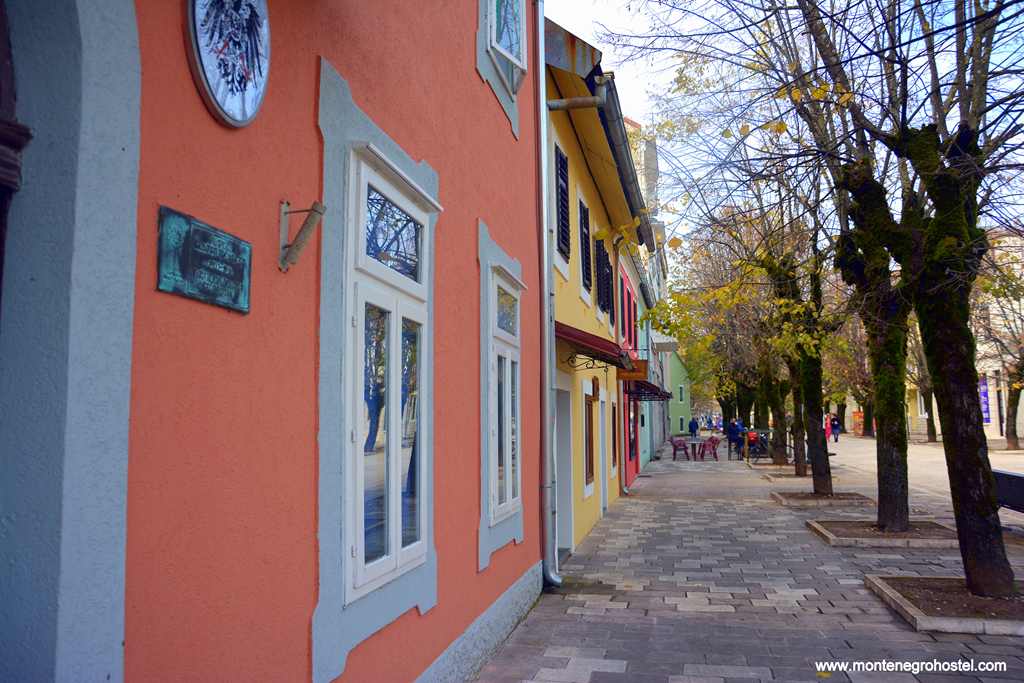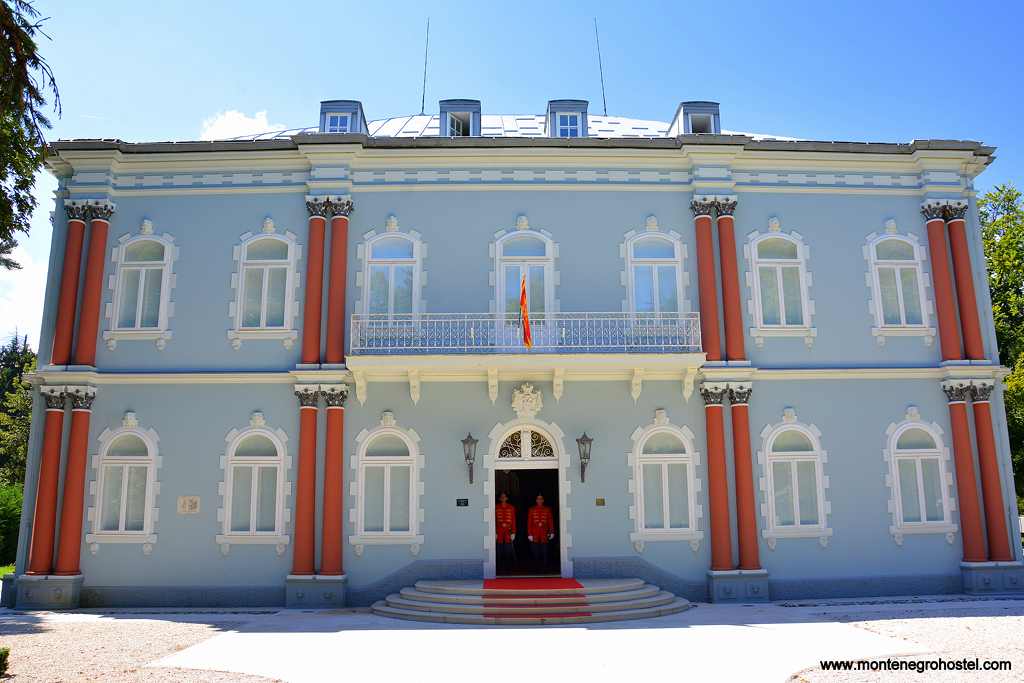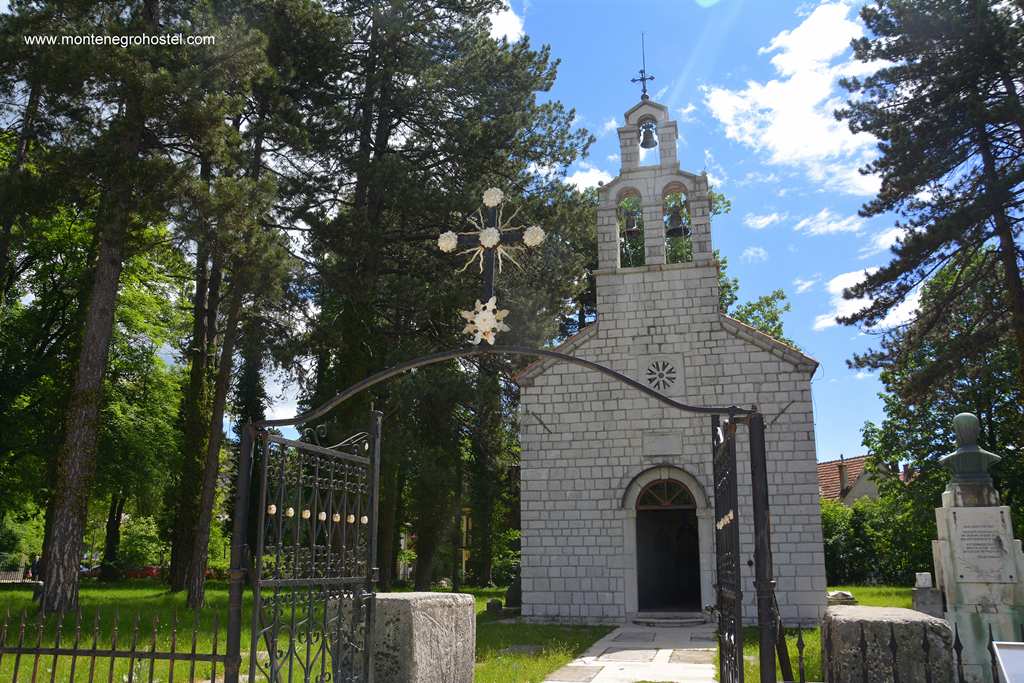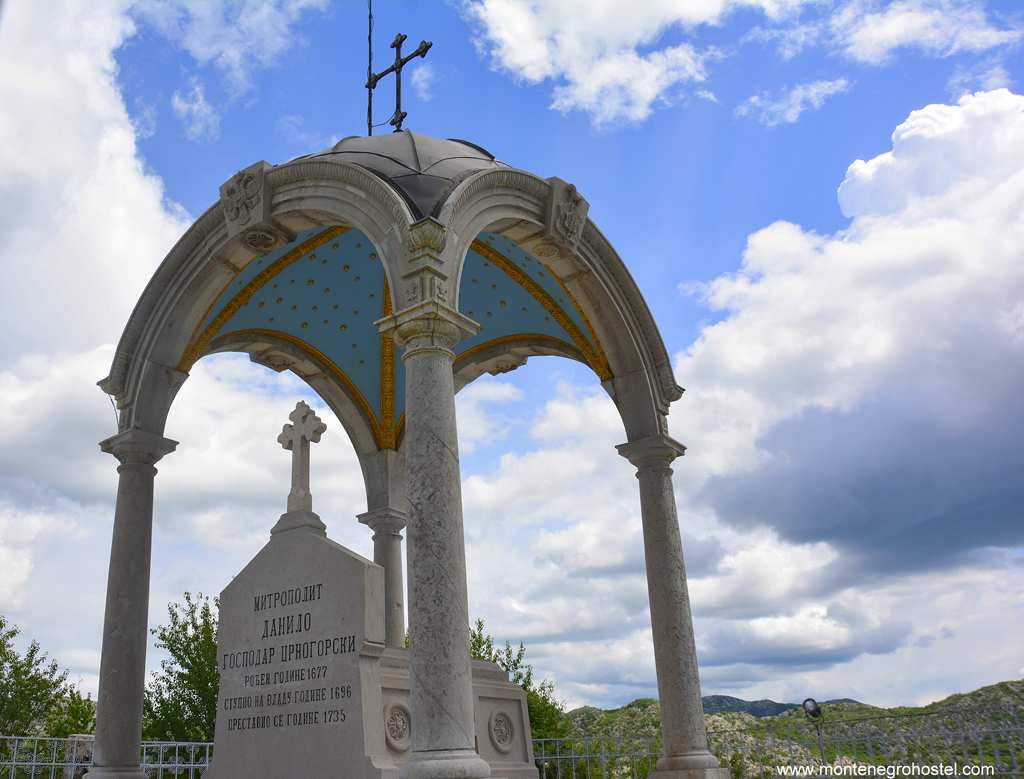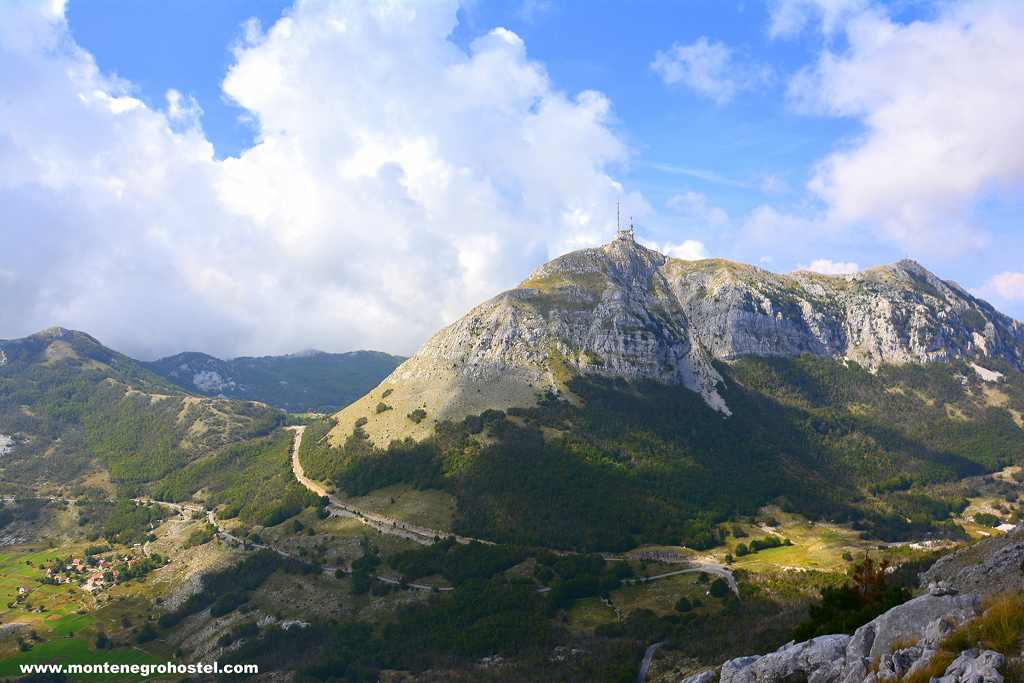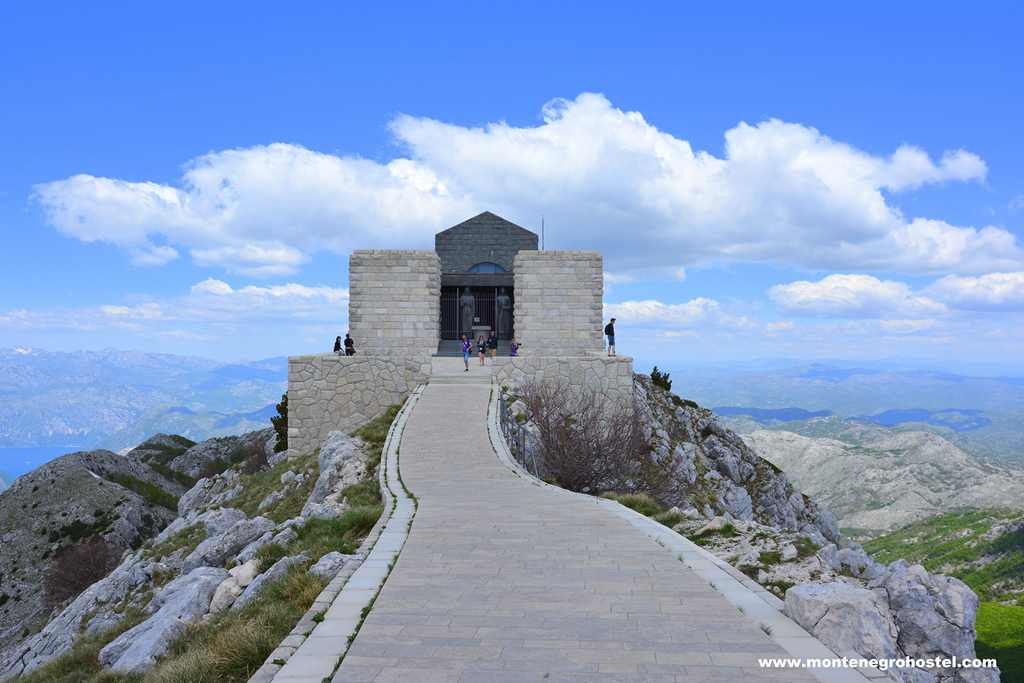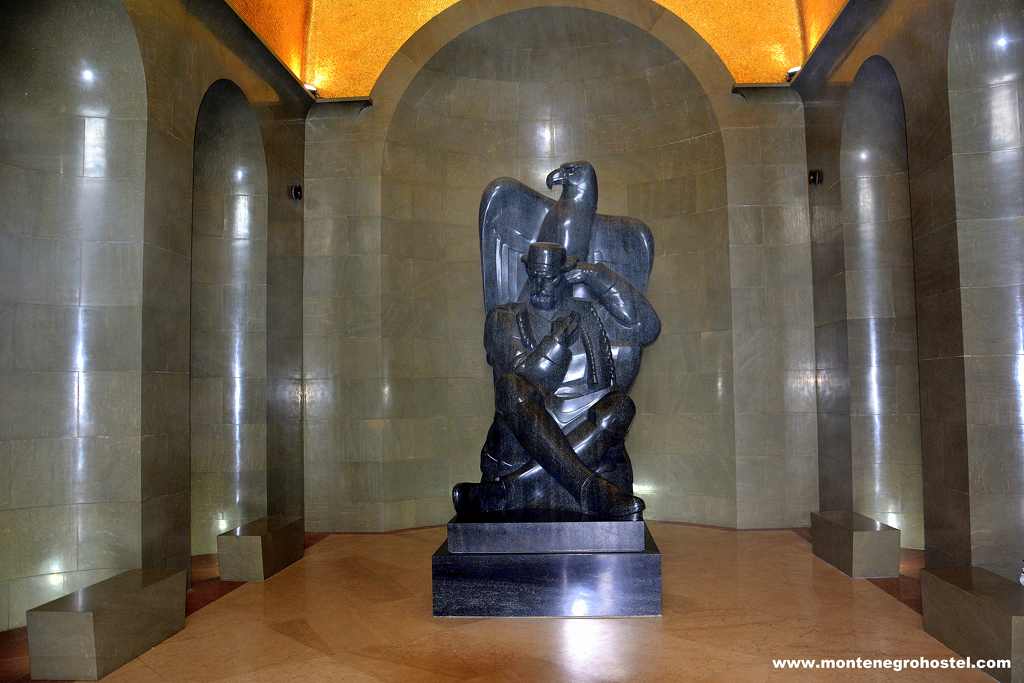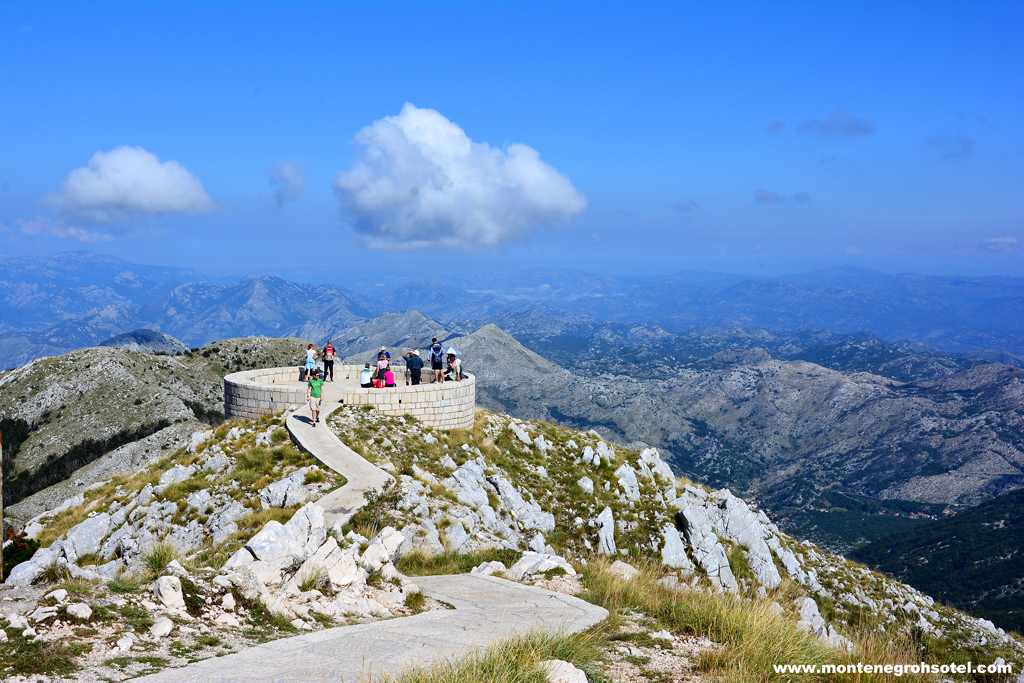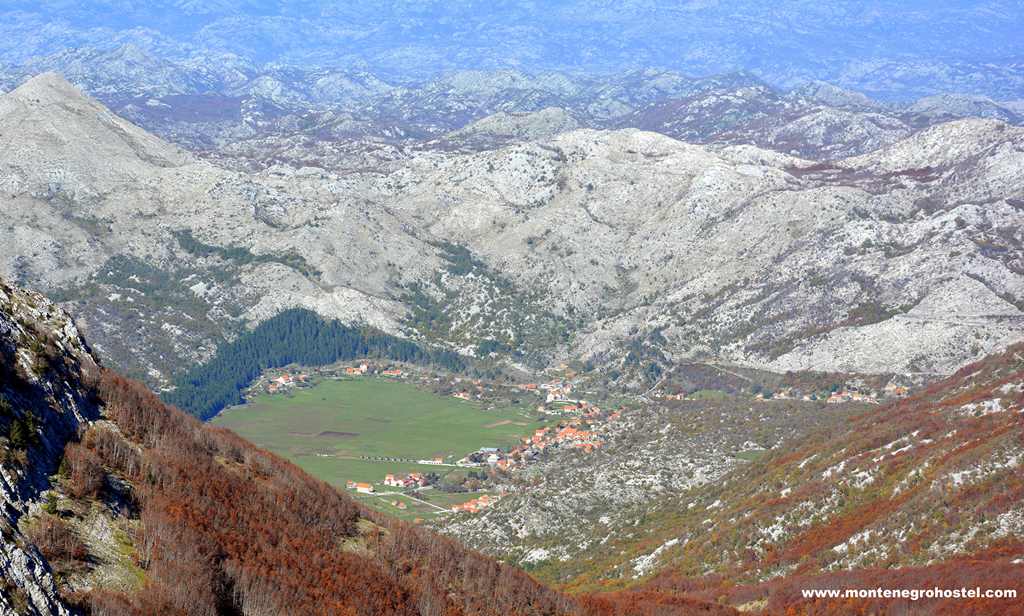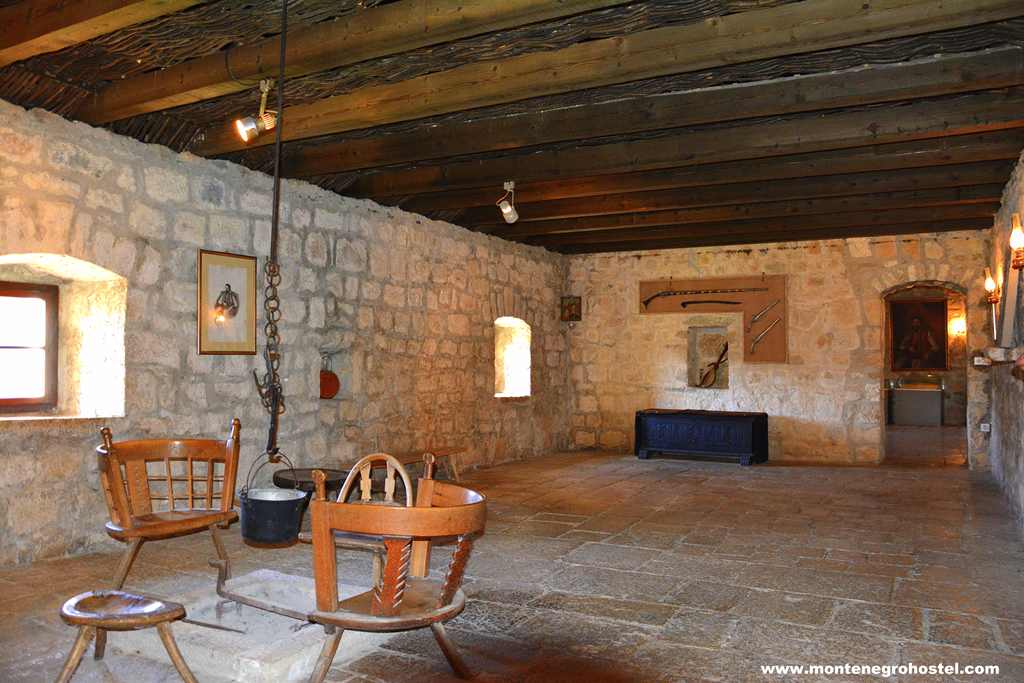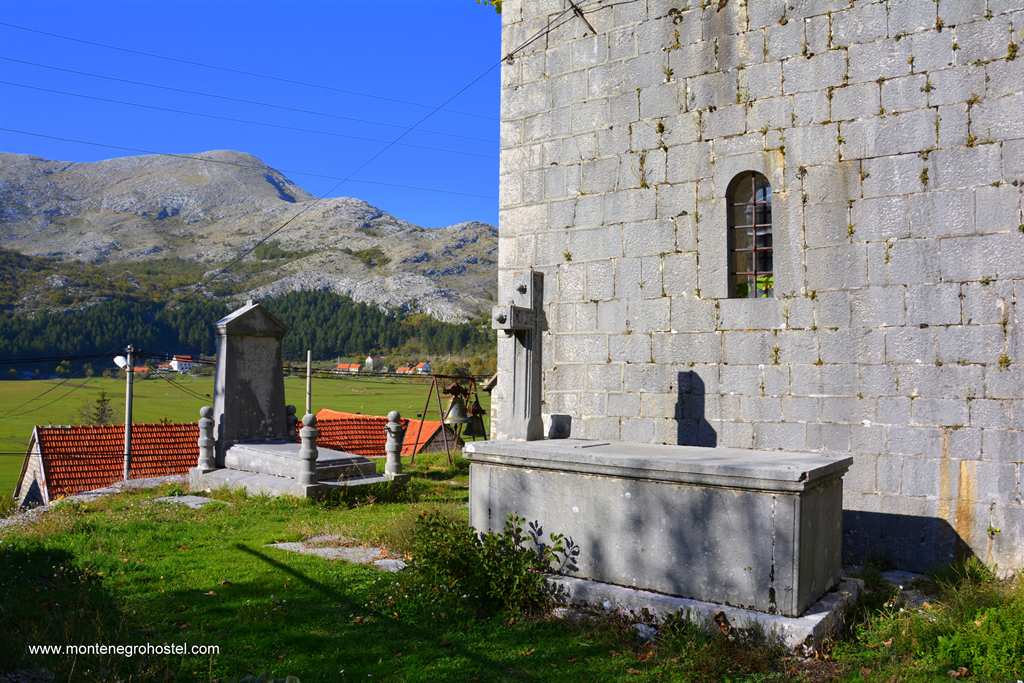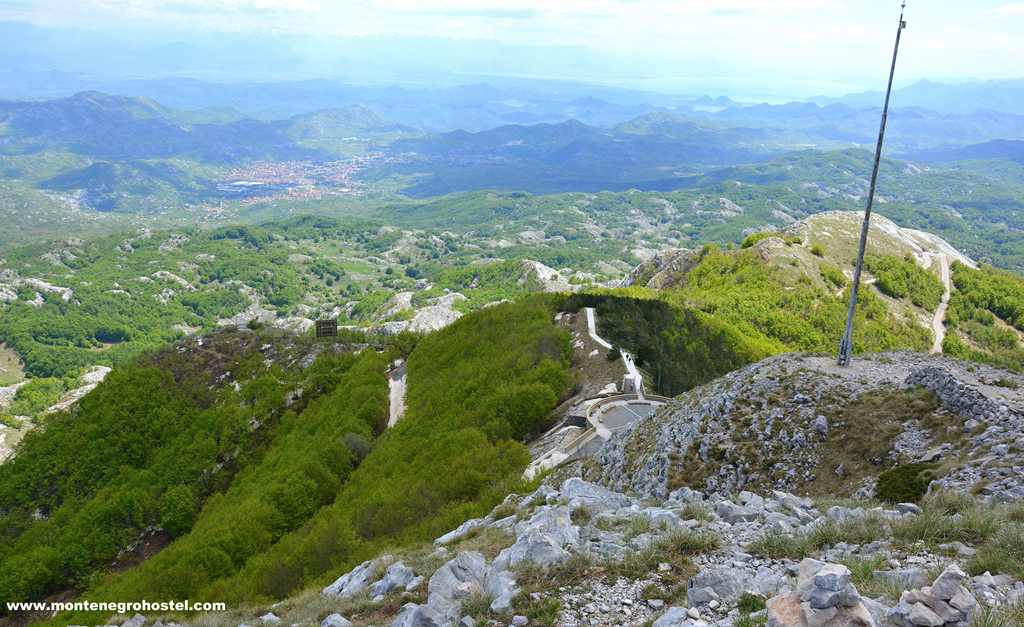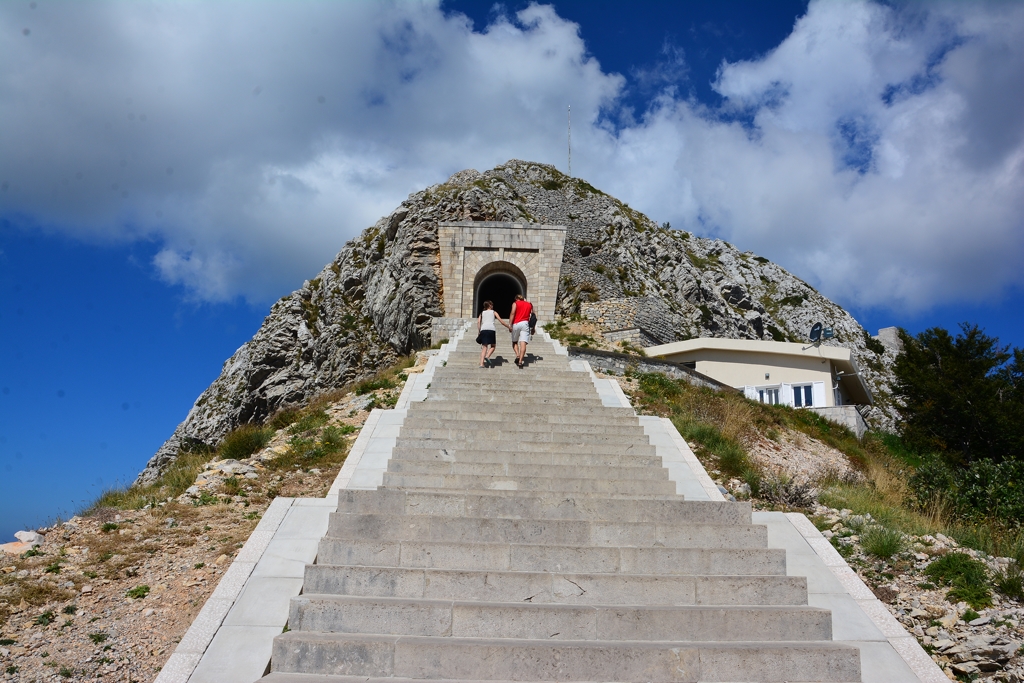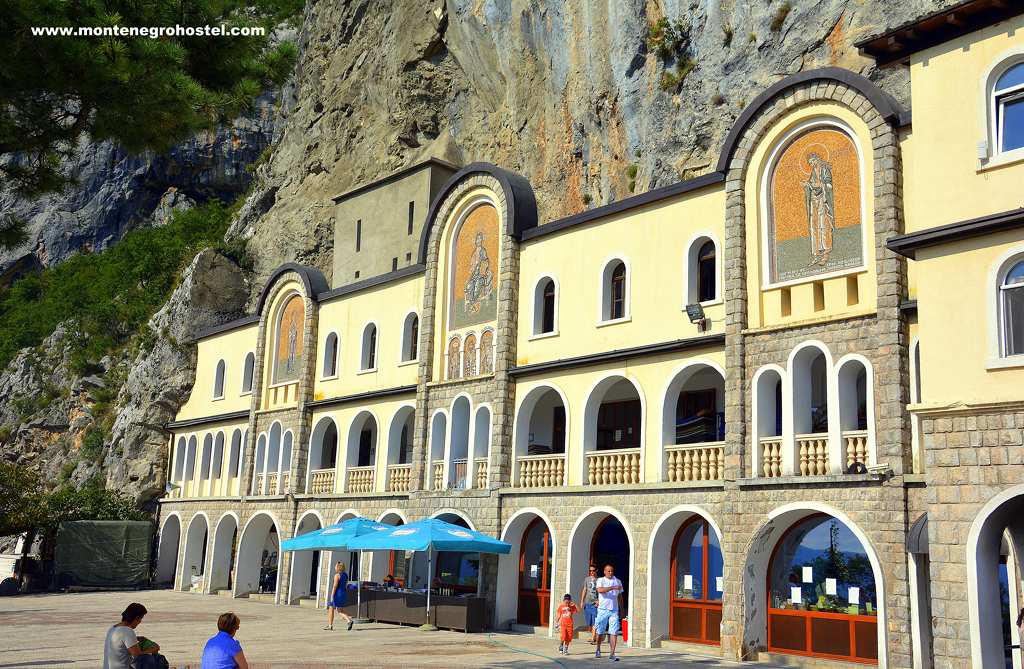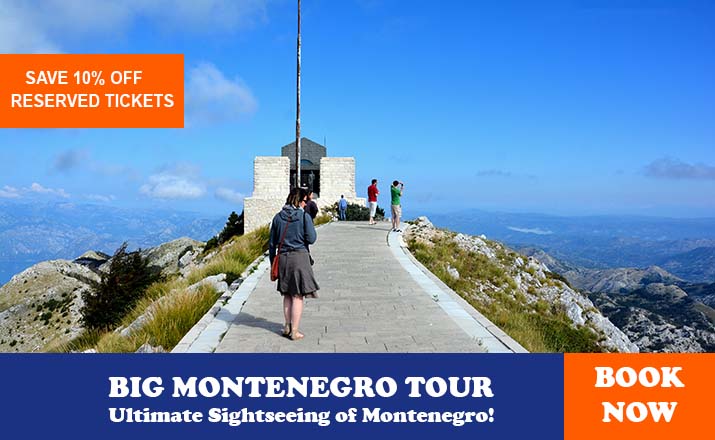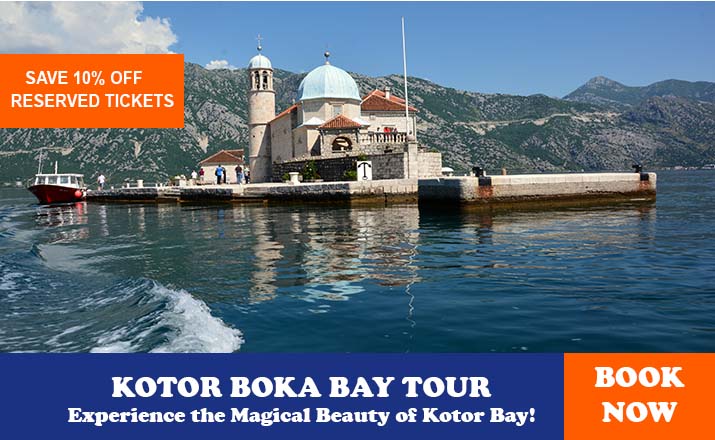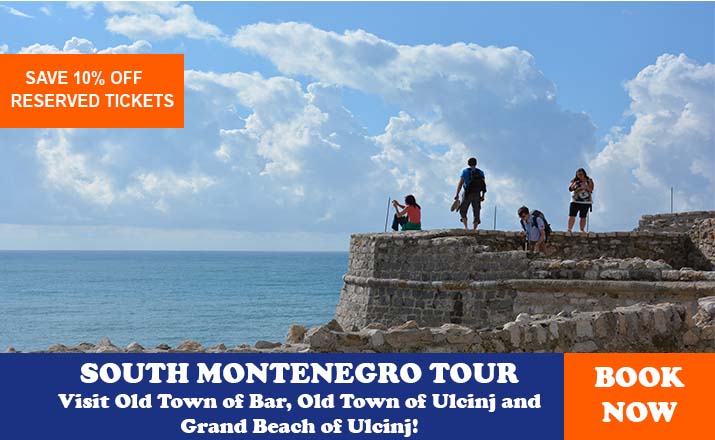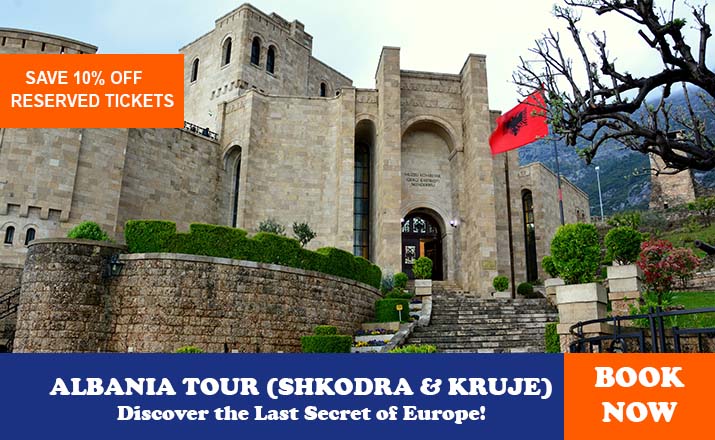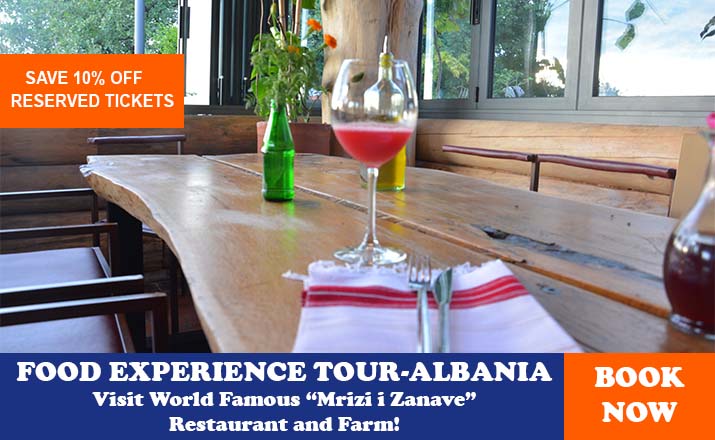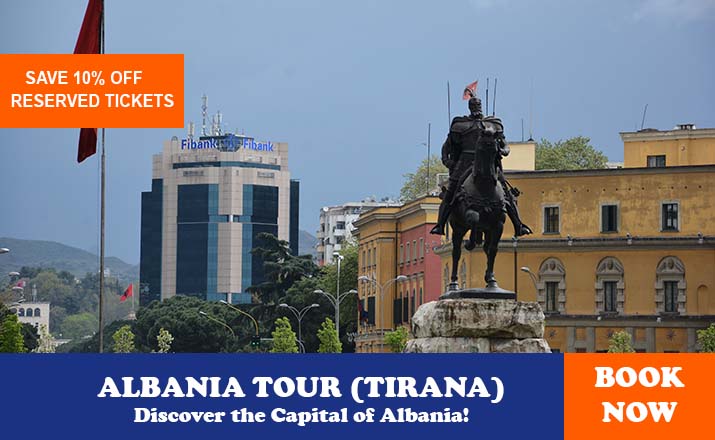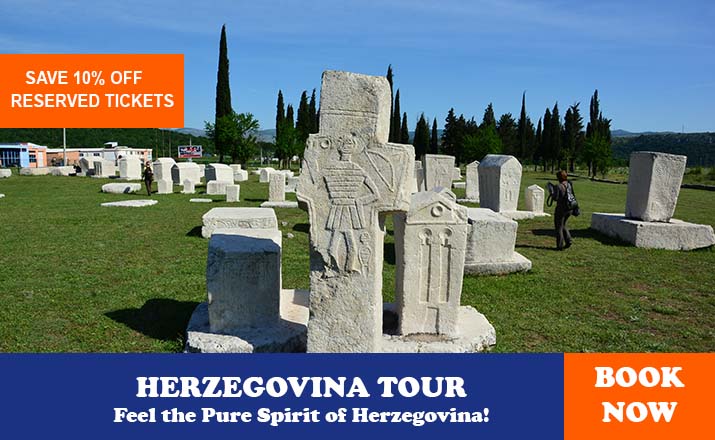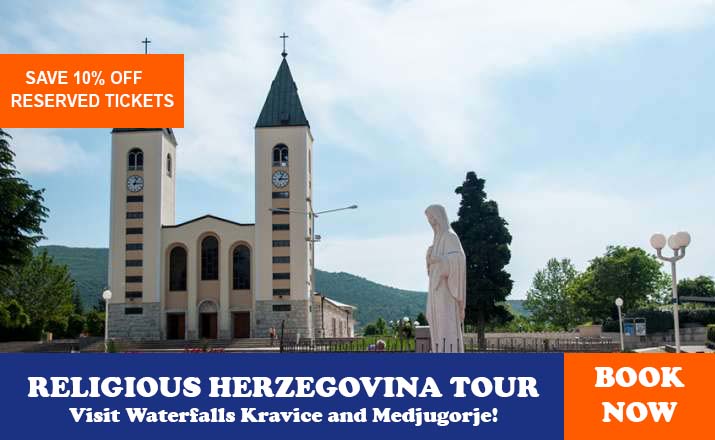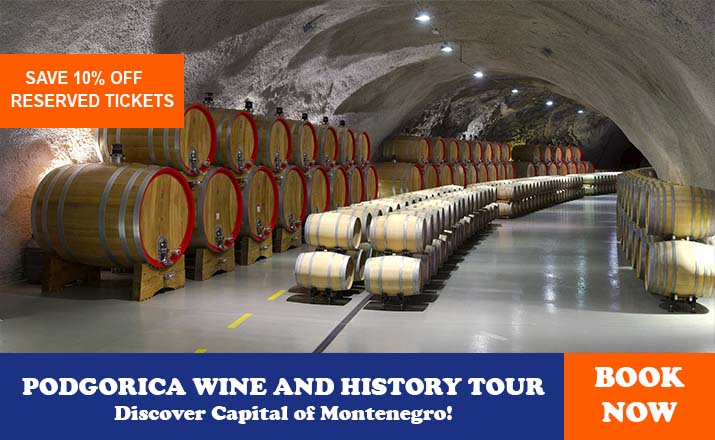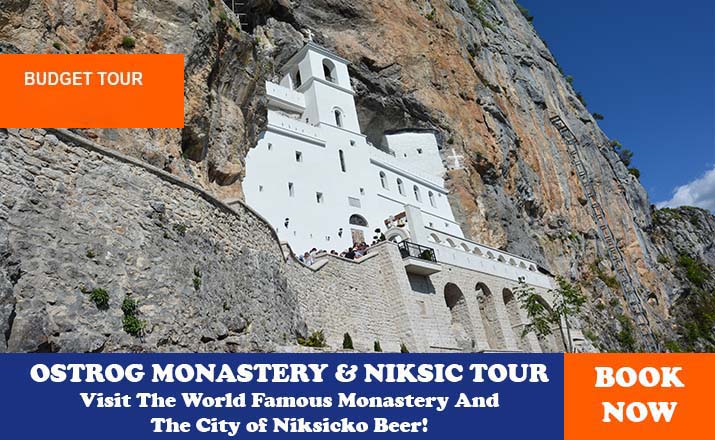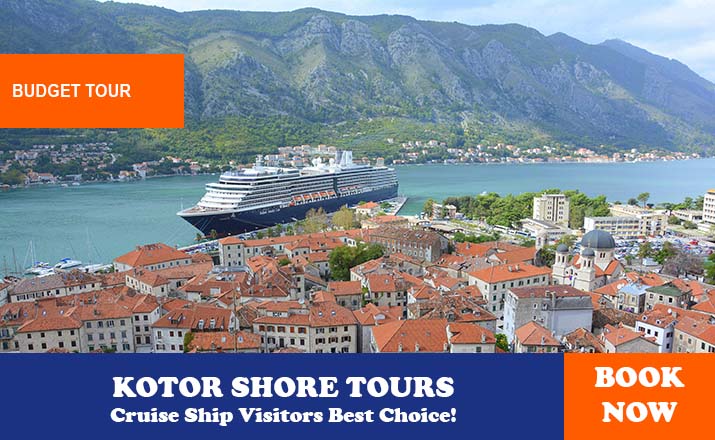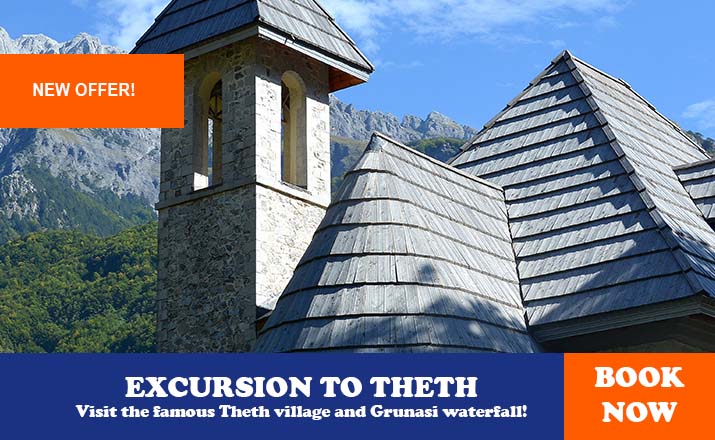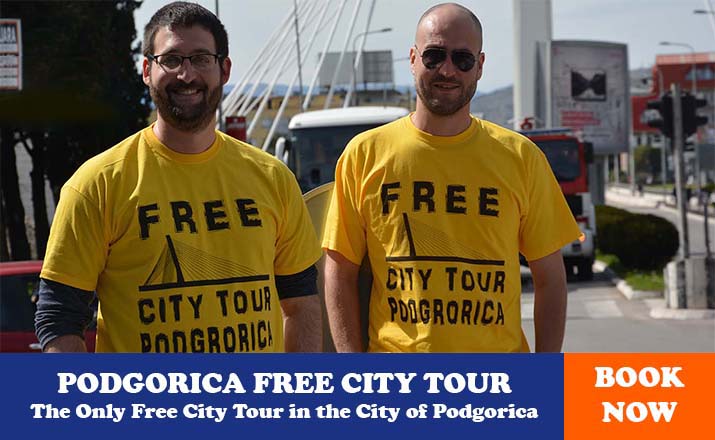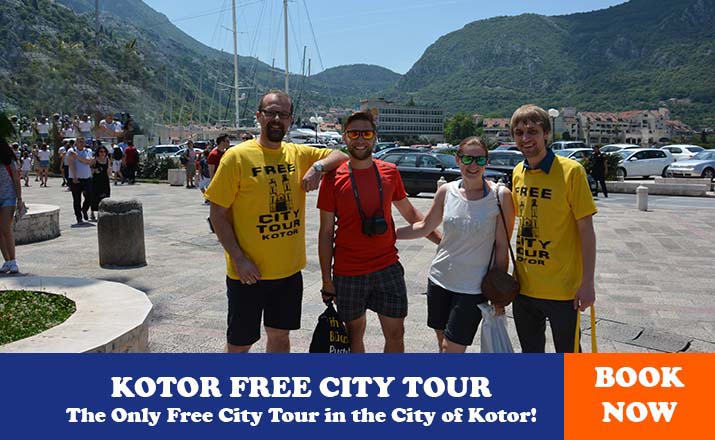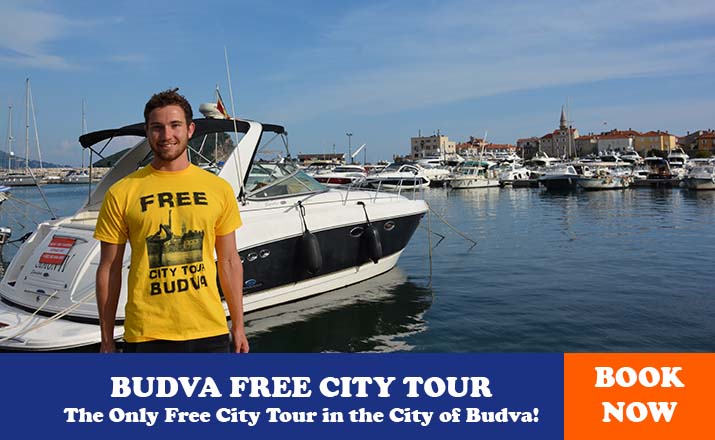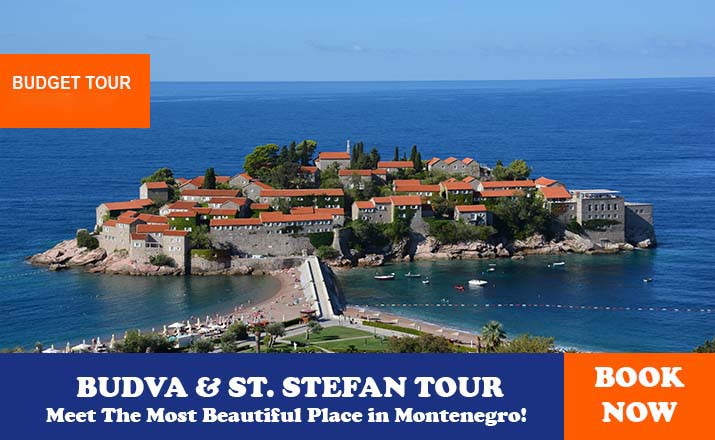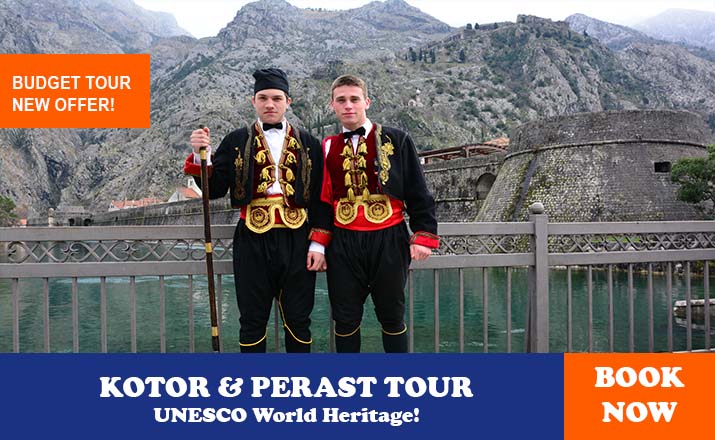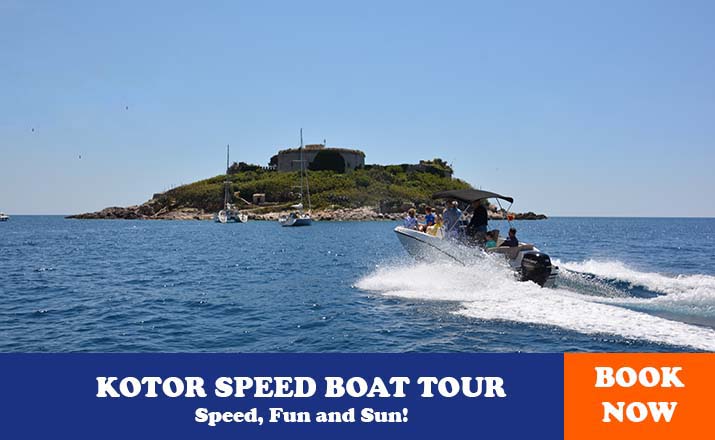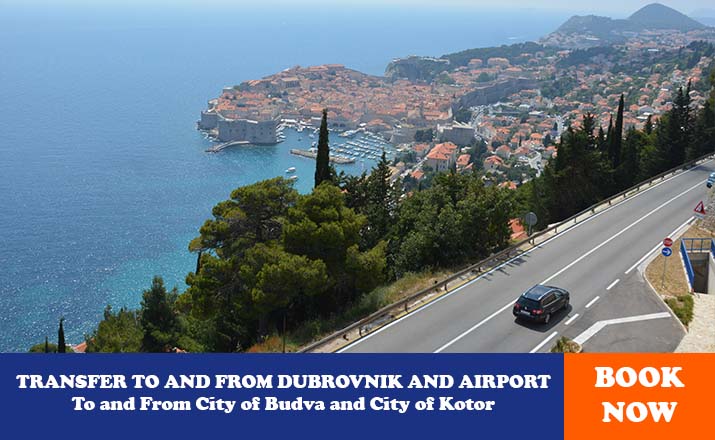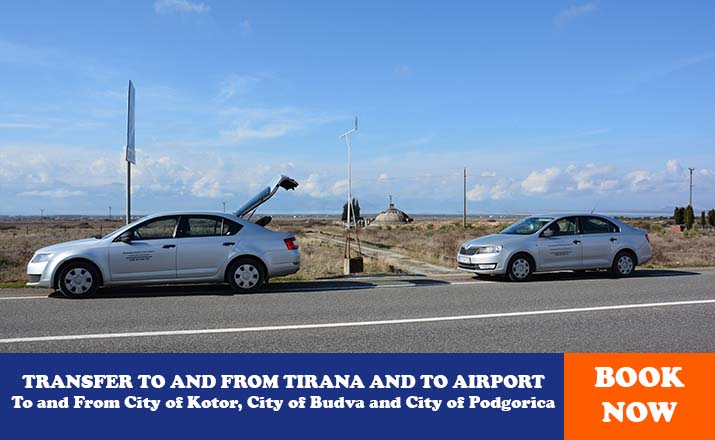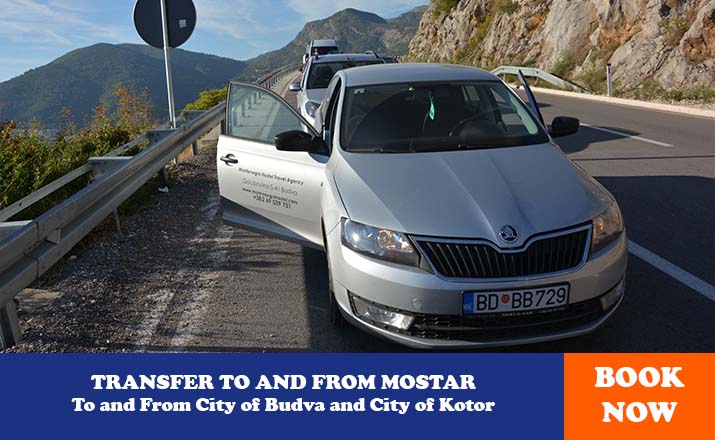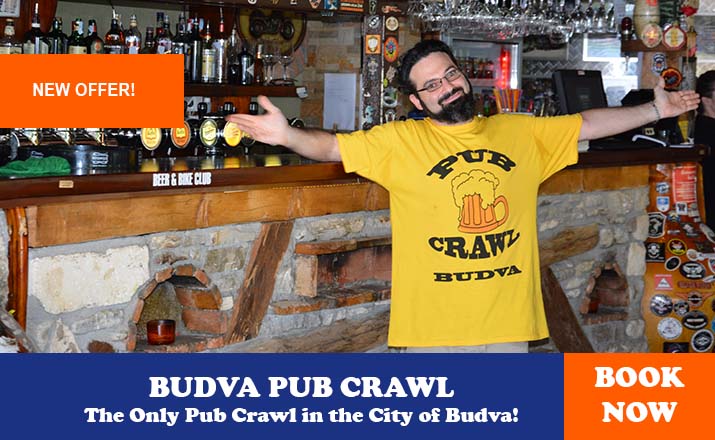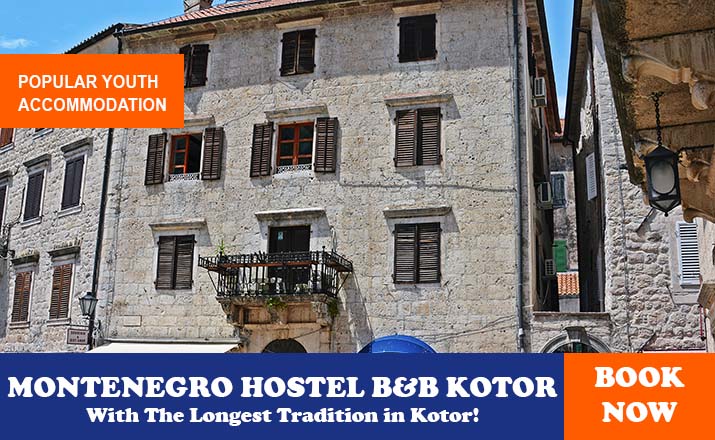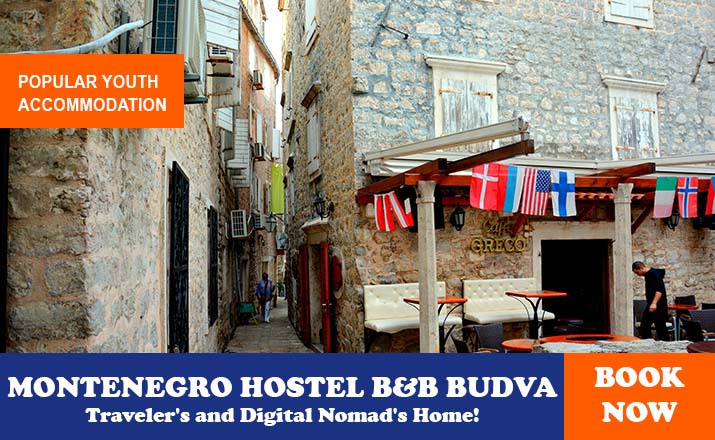ABOUT CENTRAL MONTENEGRO
CENTRAL MONTENEGRO
The central part of the country is a distinctive whole easily recognizable for its mild climate, rough karst terrain, and lack of woods, different from both the lush seaside and the cold north and east. Yet, Central Montenegro is itself a mixture of several smaller regions that differ both in landscape and history. The Old Montenegro (Stara Crna Gora) is a kernel from which the present-day country started its growth at the beginning of the 19th century. It lies directly above Boka Kotorska and the town of Budva, behind the first ridge of high mountains, spreading from the village Čevo in the north to the village of Virpazar in the south. Historically, it was divided into four counties (nahije) and 22 small clans, some not bigger than a single village, but all ripe with heroic personalities and tales of battles from past centuries. The largest part of the territory is a barren muddle of shrub, rocky hills, and smaller woods with many villages clinging to their scarp of arable land.
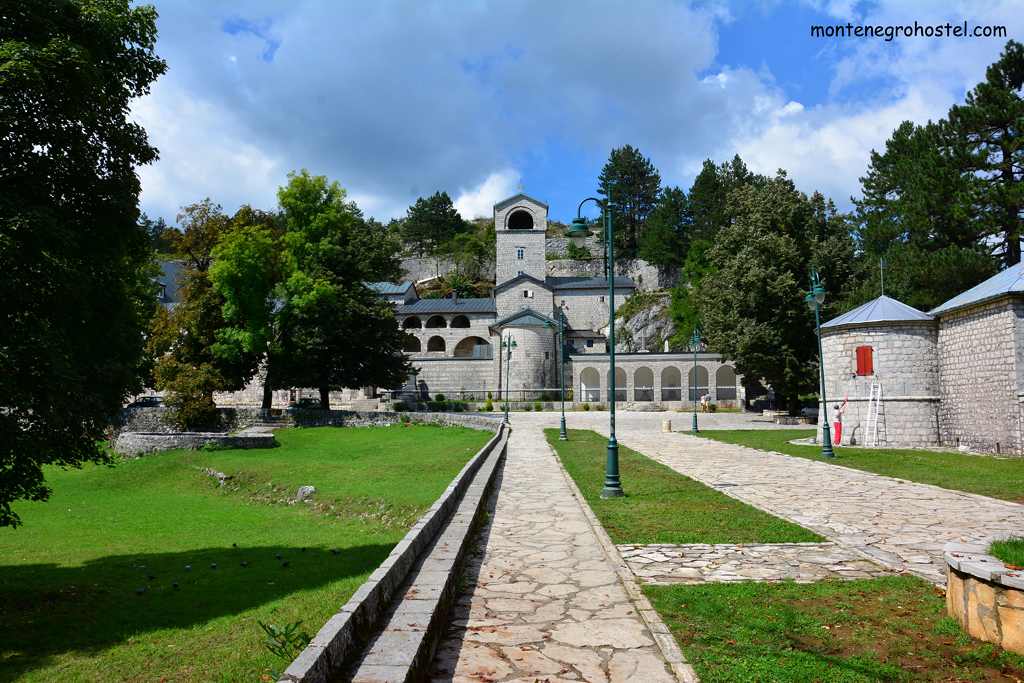
The center of Old Montenegro in Cetinje, previously the capital of the country, is a preserved 19th-century town with many historic buildings bearing witness to its harsh history. Next to it is Mt Lovćen National Park with magnificent, untamed vistas of dark woods and jagged rocks as well as views of the nearby seaside. Below Lovćen lies the historical village of Njeguši, the birthplace of all Montenegrin rulers. The only part of Old Montenegro that differs significantly from this rough picture is its southernmost county, Crmnica. With Virpazar as its center marketplace, the Crmica region produces wines, fruits, and vegetables known for their quality throughout the country.
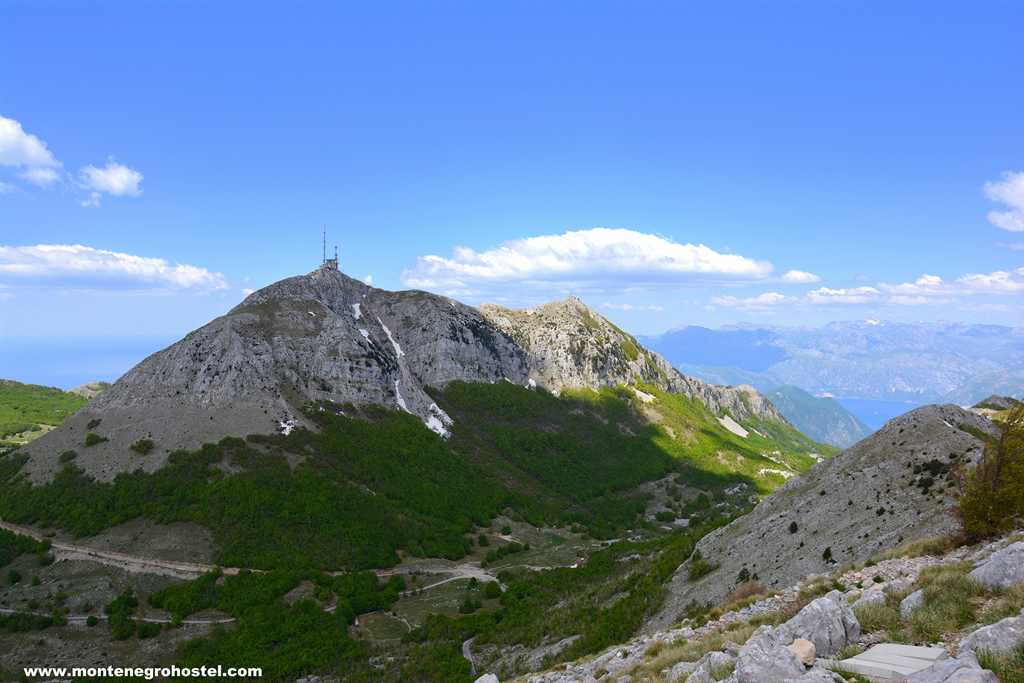
The lower part of Crmnica lies on the shore of Lake Skadarsko, a huge water surface forming a border with Albania. Around the lake are many small fishing villages with preserved rural architecture as well as small isolated communities on their tiny islets. North of Lake Skadarsko is the plain of Zeta with the capital city Podgorica lying in its middle. Approaching the city, one can observe rural Zeta as it once was, with poplars standing by streams and rivers that irrigate Zeta and spill into Morača, the largest of its rivers. The plain of Zeta is also the place where huge vine and fruit plantations are located. Podgorica suffered greatly in WWII and is essentially a modern city, unburdened by history and willing the reshape its looks.
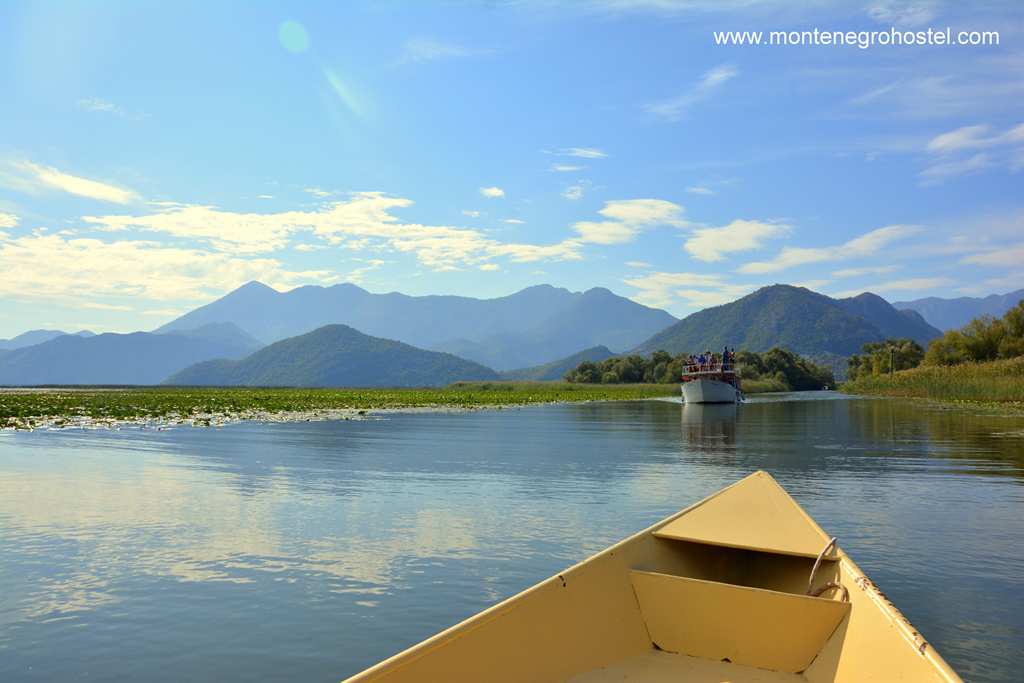
River Zeta springs in the vicinity of Nikšić, but after only a dozen kilometers disappears underground and then continues steadily southeast towards Podgorica. Near the site where it reappears is Ostrog Monastery in the fantastic setting high up in the rock, which from afar seems impossible to reach. Fertile fields and small groves lie around the slow waters of the river Zeta, whose banks offer a place of refreshment in the heat of long summers. Halfway to Podgorica is the administrative and economic center of this valley, the town of Danilovgrad. Its rectangular street plan reveals that before the capture of Podgorica, the town was intended to become the capital of the country.
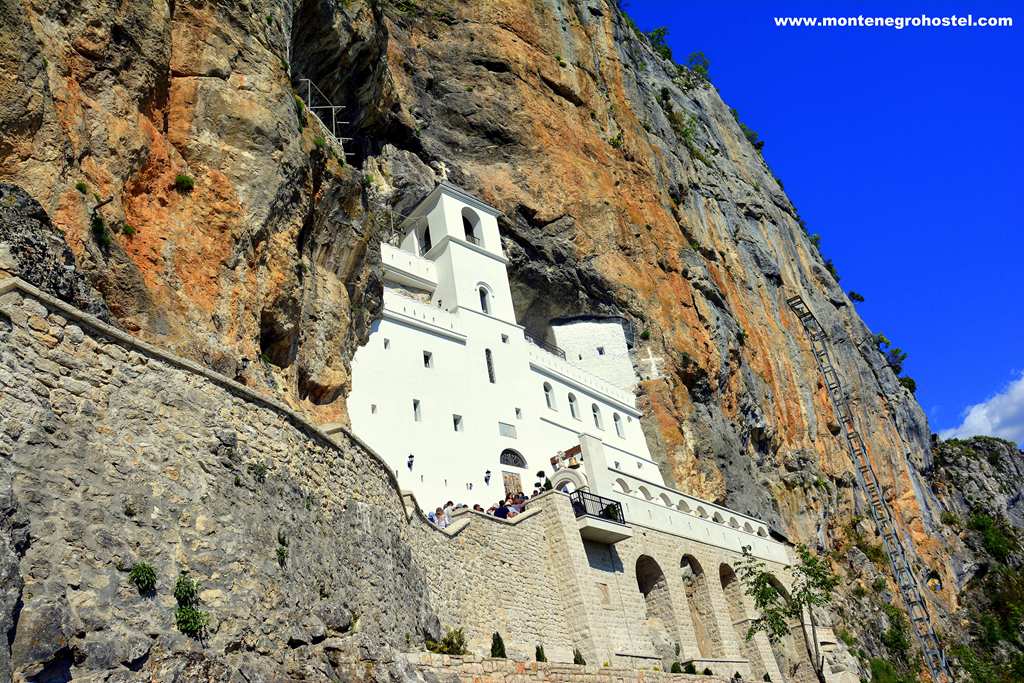
Thanks to the vicinity of the sea, the whole of the region enjoys a sub-Mediterranean climate with long summers and fairly cold winters. In summer, Podgorica and the plain of Zeta live through sizzling heat waves with temperatures rising above 40⁰C, and that wipes out the greenness of the area while the upper regions, including Cetinje, are enjoyably fresh. Winters see more rain than snow, but can get quite chilly.
Montenegro Hostel Team
PODGORICA
PODGORICA
Podgorica is the administrative and commercial capital of Montenegro, a modern and rather uninteresting city often overlooked by tourists. Yet, for anyone traveling through Montenegro, it is almost impossible to miss, as all major roads meet here. With its wide selection of hotels and other necessities, Podgorica also makes an excellent starting point for visiting most of central Montenegro in one-day trips. The town lies in the plain of Zeta, the largest flat piece of land in the country, with an average height of just 44 m above sea level and only an hour's drive from the sea. This lowland is notorious for unusually warm weather caused by the lack of refreshing sea breeze and circulation of air, both prevented by the surrounding mountainous terrain. But Podgorica, therefore, enjoys mild winters, allowing Mediterranean plants and fruits to prosper, giving it a specific look of a maritime town without a sea.
The plain is traversed by rivers Zeta, Cijevna, and Ribnica, which merge with the larger Morača and continue southward as one, spilling into the nearby Skadarsko Lake. The favorable climate and abundance of fertile soil and drinking water made the plain of Zeta an attractive place for human settlement. The first recorded settlement on the site of present-day Podgorica was Birsiminium, a Roman way station living in the shadows of the city of Doclea (its ruins lie 3 km to the north of Podgorica). During the early Middle Ages, the Slav settlement was called Ribnica and Morača. While it served as a stronghold, it allowed for the artisans and traders to inhabit the other shore, under the stumpy hill Gorica, thus forming Podgorica (Bellow Gorica), mentioned for the first time in 1326. The Turks captured the town in 1474, rebuilding and strengthening its fortress. In the following centuries, Podgorica had two rulers. In times of peace, it was the marketplace for the surrounding Serb and Albanian clans, while during the unstable years (which greatly outnumbered the trouble-free), it was resisting attacks by fierce highlanders. The time in Turkish hands finished in 1879 when Podgorica was acquired by Montenegro.
Unlike in many other towns, the local Muslim townsfolk did not move abroad, and Podgorica remained an important commercial center. The town grew slowly and steadily, acquiring a new rectangular street plan for the present-day town center and the first European-style edifices. The progress continued in the Kingdom of Yugoslavia, with the town population reaching some 16,000 (the largest in Montenegro) but still lagging in many aspects behind the regional capital, Cetinje. In WWII, Podgorica suffered from the bombings, first by Italians and later, much more devastatingly, by the Anglo-Americans, reducing the town to rubble. Amidst the skeleton of old Podgorica, the Yugoslavian communists started the construction of a new, modern town, renamed Titograd (after the leader of Yugoslav communists, Josip Broz Tito), the name it retained until 1992.
Soon after the first war wounds were healed, the communist authorities broke with tradition and in 1948 transferred the seat of government from Cetinje to Podgorica. Thus, the town started its economic and population boom, filled by economic enterprises such as the aluminum factory and the rise of educational and cultural institutions such as the university. After the break during the civil war in Yugoslavia in the 1990s, the town is again developing quickly, with modern architectural edifices changing their appearance one more time. Most of Podgorica is a curious mix of old and new. Post-war urban development was centered almost in the city center, while the suburbs were made of small cottages with gardens and vineyards, reminiscent of the old Podgorica, spread to the edges of the Zeta plain. The old center Nova or Mirkova Varoš lies to the east of Morača. The other side of the river (“preko Morače”) was, until recently, home to only a few institutions, but is now experiencing a construction boom that is soon going to equal its importance with the other riverbank.
STARA VAROŠ
This is the oldest preserved quarter of Podgorica, dating back to Ottoman rule. It is a muddle of several narrow streets and ends at the bank of the river Morača. Though almost all of the houses have been readapted, the area still has an undeniable oriental feel for its gardens behind high walls, mosques, and paved streets. The most prominent sight here and one of the town’s landmarks is the Clock Tower (Sahat kula), standing at the edge of the quarter and facing the apartment blocks across the street. The modest stone edifice was built in the latter part of the 18th century by local Muslim Adži-paša Osmanagić as a good deed for his town. Around the Clock Tower spreads a small square lined with a couple of traditional shops and restaurants. Here you can also find the Natural History Museum (Prirodnjački muzej), presenting the flora and fauna of Montenegro. A few steps away to the left of the tower stands the nicest piece of Ottoman architecture in the town, the Čubranović House, dating from 1630. In the central street of Stara varoš (Old Town), one will find two small mosques from the mid-18th century.
Sastavci, or Skaline, as it is known to younger people, is the name for the confluence of the Ribnica and Morača. The sight remains very picturesque with a small Turkish bridge over the Ribnica, usually known as Nemanjin grad (Nemanja's town), as it was here that in 1113 Stefan Nemanja was born, who subsequently founded the Nemanjić dynasty, which ruled Serbia (and thus the territory of Montenegro as well) for two centuries. What can be seen dates today from the time of Turkish rule, when the fort was rebuilt and strengthened.
NOVA VAROŠ
Nova varoš (New Town) was laid out in 886 as a rectangular grid of streets under the rule of Prince Nikola’s son Mirko and was therefore also known as Mirkova Varoš (Mirko's Town). The new street plan made a break with the oriental Stara varoš across the river and quickly became the center of administration and commerce. One of its main streets is Svetog Petra Cetinjskog, running parallel to the river Ribnica.On this street, the National Parliament and the National Bank are located. Facing the former is the equestrian monument of King Nikola, the work of Risto Radmilović from 2005. From Svetog Petra Cetinjskog Street starts Street Slobode.
It passes the recently renovated Trg Republike (Republic Square) with its fountain and continues to the foot of Gorica Hill. Hercegovačka Street (Hercegovačka ulica) is a popular pedestrian zone in the center with cafes and nightlife. At the end of Hercegovačka Street. opens the view of the Millennium Bridge (Milenijumski most)to the right. This boldly envisioned piece of architecture, the work of architect Mladen Uličević from 2005, has already become the new symbol of the city, the mark of its modern growth, and hope for a bright future. A walk beneath its only pylon, a slanting metal arm that seems bent by the twelve cables with counterweights arranged in a semicircle, is particularly nice, opening many appealing anchors for interesting views and photos.
GORICA
The “Small Hill” (Gorica) under which the town originated and which gave it its name is a squat mound with a peak at 133m. Street Slobode leads to the town stadium “Pod Goricom” used by the FC Budućnost, the undisputed ruler of the Montenegrin football throne. To its right starts the main walkway approaching first the Church of St George (Crkva Svetog Djordja), certainly the most interesting sight in the town. This pre-Romanesque church has a square apse and a short blind square cupola with three niches on each side. St George is the southernmost of about a dozen more churches with these specific features.
.
Others can be found only in southern Dalmatia. The interior was fresco-painted around 1670 by an unknown artist of modern skills. The iconostasis, dating from 1881, is the work of the Macedonian Djinoski brothers. The walkway continues through the abundant Mediterranean vegetation, crosses a small bridge, and leads to the Monument to the Partisan Fighter (Spomenik partizanu borcu). This marvelous piece of socialist memorial architecture is reminiscent of an antique mausoleum. At the entrance stand statues of two colossal partisans and communist fighters from WWII.

Between them is represented the medal of National Hero, the highest honor in socialist Yugoslavia, which was also bestowed upon the city of Podgorica for the courage and martyrdom of its inhabitants in WWII. The monument is a central spot of the Statehood Day celebration every 13th of July.
ACROSS RIVER MORAČA
This part of the town was laid out after WWII and until recently held little interest in tourist itineraries. The new construction boom can best be observed here with several modern apartment blocks. This development lures the capital’s elite, closely followed by posh shops and restaurants. The main sights are equally recent but are dedicated to linking this modern quarter to the history of Montenegro.
The first one is in the Church of Resurrection (Hram Vaskrsenja Hristovog), the new Orthodox cathedral in Podgorica. This monumental structure strives to unite all the different styles of ecclesiastical architecture of Montenegro in one edifice. One block next to the church, in front of the Podgorica University head offices, stands a monument of St Petar of Cetinje, unveiled in 2006. With its height of 6.8 meters, this grandiose work of sculptor Nenad Šoškić seems fitting for Petar as a ruler.
KRUŠEVAC
The center is located in the compound of Prince Nikola’s winter residence called Kruševac. The compound consists of the palace, court chapel, winter garden, music pavilion, and lifeguard quarters, all finished in 1891 and located in a fine park decorated with several statues.
MUNICIPAL MUSEUM
The museum collection is divided into four departments. The first one is archaeological with a valuable assortment collected from prehistoric sites in the town’s vicinity and especially from Roman Doclea. The Center was formed in 1995, inheriting the funds from the Gallery of Non-Aligned Countries “Josip Broz Tito". This fact explains the variety of the collections, which include works of art from Africa, Asia, and Latin America well as works by prominent Yugoslav and Montenegrin sculptors.
CIJEVNA CANYON
River Cijevna, in its upper flow, builds a canyon almost 1000 meters deep and then gradually shrinks until east of Podgorica, in the plain of Zeta, the river becomes merely a crack in the ground. With some parts narrowing to just 2-3 meters wide, it reminds me of a pipe (“cijev”), the appearance of which is described in its name.
In this low-lying part of its flow, its stony bed filled with crystal clear blue water is in sharp contrast with the desolate grassland of an almost desert-like appearance. Although seemingly calm, the river is quite fast and boasts several attractive waterfalls. Its banks are the most popular places for a quick refreshment in Podgorica, the most prominent being in front of a bridge that spans Cijevna and heads straight for roughly another kilometer and has a popular name, Niagara.
DUKLJA-DOCLEA
The remains of the town of Duklja (Doclea) are the most important archaeological site of Podgorica, standing on its northern outskirts. The town was founded by Illyrians at the point where the river Zeta meets Morača at the beginning of the 1st century AD, but was captured by the Romans only a few decades later. In their hands, Doclea (as was the Latin name) prospered, reaching the number of some 10,000 inhabitants and had all the features of a pleasant provincial town: temples, urban villas, a triumphal arch, and baths. The city rose in importance after 297 it became the seat of the newly founded province of Praevalitana and soon afterward the bishop’s seat. Its prominence was crushed a century later when, in 401, the Western Goths sacked it.
This raid was followed by another in 486 when it suffered at the hands of Eastern Goths, and finally by a devastating earthquake in 518. After a short revival in the time of Emperor Justinian, the Slavic invasion forced the remaining Roman populace to retreat to a hillside fort at Martinića gradina, which was more suitable for defense, and Doclea fell into ruins. The echo of its importance is found in the fact that one of the newly formed Slavic states was named Duklja. Today, you can enjoy walking amidst the scattered ruins, the most interesting being those of the town’s forum. Here, there are many fragments of pillars, consoles, or tombstones lying around, while on the north side are the walls of the curia (courthouse).
MEDUN
Medun is a village 12 km northeast of the city in the area of the Kuči clan and is interesting for two reasons: the ancient forts and the house of Duke Marko Miljanov, turned into a museum. Weather permitting, the ridge climbing to Kuči offers memorable views of the whole of Podgorica. At the top of the ascent, in front of you, opens a slowly rising plateau with a much more pleasant climate and an almost incessant light breeze. The sign will lead you to Miljanov’s home, a large stone building on a ridge overlooking the village. Miljanov built his house inside the walls of the lower town, which remains from the Middle Ages when Medun was a castle controlling the road from Ribnica (part of Podgorica), and to Plav and Peć (Kosovo). In the courtyard stands the bust of Miljanov, while his house has been turned into a museum displaying weapons, flags, and pictures from Miljanov’s era, costumes, and household items illustrating the life of the Kuči clan as well as Miljanov’s manuscripts and the first edition of his books.
A short climb uphill takes you to the village church, built at the start of the 18th century with the money brought by the clan’s head from Russia. Next to the church lies Miljanov’s grave (the smaller tombstone erected by his wife and the larger, slightly later by his clansmen) is surrounded by half-ruined walls from where you can enjoy the views of the vicinity. This prominent position has been a hill fort from times immemorial. Here stood the acropolis (upper town) of Meteon, the enwalled town of the Illyrian tribe of Labeati, founded not later than the 3rd century BC the Romans captured the brother and family of King Gentius, the leader of the Illyrian tribes, ending their resistance to the Roman Republic. Although rebuilt several times, the ruins of Medun still have parts of the original so-called “cyclopic” walls and steps cut into rock dating from the Illyrian period.
THE BRAVEST AND MOST HUMANE OF ALL WRITERS
Marko Miljanov Popović was born in 1833 in Medun into a distinguished family that held for generations the role of the head of the Kuči clan. His life and career followed the usual lines. He fought against the Turks, joined Prince Danilo’s guard, and as an intelligent and loyal man in 1862, he became a judge in the Bratonožići clan. Soon, he rose to the ranks of the Montenegrin Senate and, in the 1876-79 war, commanded his troops in disagreement with Prince Nikola. That's why he was forced to retire from the affairs of the state and return to the seclusion of his native village. Spending his days in Medun, Miljanov, although already 50 years old, decided to learn how to read and write so that he could immortalize the brave deeds of many Montenegrins and Highlanders he saw during his life. With no formal education or knowledge of literature, Miljanov took to writing the same way as he would narrate, with no pretensions of leaving a polished work of art, but the off-the-cuff history he witnessed.
However, being a man of words and a natural-born storyteller, his works turned out to be a masterpiece of simplicity, stripped of any learned style but rich in fresh expressions and figures of the common people. His main work, the one that he felt obliged to write for posterity, is “Examples of Humanity and Bravery” (Primjeri čojstva i junaštva). Describing many brave acts and uncovering morals in them, he defined bravery as defining yourself, thus remaining honorable and with a clear conscience. In this book, he wrote about others and did not mention himself even once, although he was known as one of the greatest heroes of his time. Miljanov died in 1901, a few months before his first book was published in Belgrade. Subsequent reading of his work revealed the value of his writing, both in terms of style and in deep introspection of the customs and beliefs of the era.
Montenegro Hostel Team
LAKE SKADAR
LAKE SKADARSKO
Lake Skadarsko (Skadrasko jezero, often referred to as Lake Scutari) is the largest lake in the Balkans, some 40 km long and 14 km wide. It lies on the Zeta plain in the south of Montenegro, very close to the sea, which is divided by a strip of land roughly 15 km wide and dominated by Mt Rumija. From afar, the Lake is an imposing sight with high hills and rocky islands rising from its tranquil surface. The lake forms a natural border with Albania: two-thirds of its surface, including the whole of its north and west coast, is in Montenegro, while the other third, which includes the east and the south coast, is in Albania. Shkoder (Skadar in Serbian, Scutari in Italian), which is in Albania, is the only substantial city on its shores and gives the lake its name. The lake receives its water from the river Morača and underwater springs, but also has a constant outflow through the river Bojana to the Adriatic Sea. These conditions make its size very variable, from 530 square km during the snow-melting period in springtime, to just 370 square km in late summer and early autumn. In the dry season, many of its islands join with the mainland, vast areas are turned into shallow marshes, and parts of it become separate lakes.
The whole lake is a crypto-depression, a natural phenomenon in which the lake’s surface stands above sea level while its depths are below it. The lake is generally only 5-8m deep but has some 30 underwater springs (called locally oka “eyes”) which reach depths of 60 meters. The lake’s coast in its Montenegrin part is ragged with many small coves, a peninsula, and around 50 isles, locally called Gorica (“small hill”). On its shores, stony inlets interchange with small bays covered in thick reed, while its surface is covered in water lilies or such natural rarities as kasaronja, the floating water nut, which does contain an edible part, a rare delicacy you can try in some restaurants, as well as small flowers, wild pomegranate trees, laurels, etc. The waters of Skadarsko Lake are rich in fish, both the freshwater kind, of which most commonly are carp and bleak, and the sea fish, such as eels and striped mullets that swim upstream along the river Bojana. The abundance of nesting conditions attracts as many as 264 indigenous and migrating bird species. Amongst them, the most numerous are cormorants, the grey herons are becoming, while the most interesting are the large Dalmatian Pelicans, which nest here. Numerous flocks of ducks and geese spend their winters on the lake.
Together with the rest of the Zeta plain and Podgorica, Skadarsko Lake has mercilessly warm summers when the lake’s water warms to 28⁰C. In contrast, during winter, its shallower waters freeze. Due to all these remarkable features, Lake Skadarsko is protected as a National Park. Lake Skadarsko is equally interesting for its historical heritage from various epochs. Around its spread, small towns such as Rijeka Crnojevića or Virpazar and many small fishing villages such as Vranjina, Karuč, or Dodoši have retained their traditional looks with small stone houses tucked in together. In them, one can enjoy the seclusion and the slow pace of a fisherman’s life. Karuč and Dodoši are the best reached from Podgorica to Rijeka Crnojevića. The route through the Krajina region on the Lake’s west coast leads through several scenic villages and past the medieval monasteries standing on their Gorice.
The main route through this region is Podgorica-Virpazar, which can be traversed by car or train. Both the highway and the railroad pass across the lake through a dike that separates the lake into two parts, the smaller part being to the north of the dike. The dike first reaches the island of Vranjina, in fact, the largest of all Montenegrin islands, including those on the seaside. Close to the road lies a large finishing village of the same name with a preserved look of the old days, nestled around a small bay and now almost completely closed off by the dike. The seat of the National Park authorities is located here, with its small visitor center, where you can learn more about the park. Next to Vranjina is the small isle of Lesendro, dominated by a fort of the same name.
As the control over the island also meant the control of the trade to and from Montenegro, during the early 19th century, the fort witnessed long-standing disputes between the Turks and the Montenegrins, on all occasions were resolved through fighting. As it is impossible to park near it is best to leave your car near the restaurant on the western tip of Vranjina and walk along the highway to the fort. The sides of the dike are lined with fishermen enjoying the abundance of the lake’s fish. The best way to enjoy Skadarsko Lake is by boat, which can be seen cruising on it. Most of them start from Virpazar, some from Plavnica, a complex on the north shore, while less often boats sail out from the local villages.
VIRPAZAR
Virpazar is a tiny town on the road from Podgorica towards the coast. It lies in the place where the rivers Crmnica and Orahovštica meet and immediately flow into Skadarsko Lake. During springtime, the high levels of the waters turn Virpazar into an island joined to the mainland by its three old stone bridges. The town is the center of Crmnica, a fertile region with a climate favorable for growing vines, olives, and all kinds of fruits and vegetables. Virpazar is also the starting point for most boat excursions on Skadarsko Lake. The place of Vir was first mentioned in 1242, and it is quite possible that it was a small trading hub for the local village even at the time. In the 15th century, its strategic location was capitalized on by the Turks, who built the Besac castle, which still stands above the town. After the Turks were banished from the castle at the beginning of the 18th century, the town became the most important trading point in Montenegro, visited by traders from Podgorica and Shkoder. Its role during this time left a permanent mark on Vir, adding Pazar (“marketplace”) to this name.
Virpazar had a lively port and in 1908 was connected to Bar by a narrow-gauge railway, the first in the country. The place is also famous for the insurrection on the 13th of July 1941, when, upon hearing the news that the quislings and Italian occupiers had proclaimed the “independence” of Montenegro. The men from local villages attacked the Italian garrison and liberated the town, starting an uprising against the Axis powers in Montenegro. Virpazar is well connected to Podgorica with a highway and a railroad. If coming from the direction of Podgorica, one should be very careful not to miss the sharp left turn leading to the town immediately after crossing the bridge. The houses of Virpazar are arranged in a circle with their fronts towards the wide town square and their rears to the water. In the middle of the tree-shaded square is a nice old drinking well. Around it, there are several restaurants and a tourist information point.
On most days, you will find people selling local produce such as the famous Crmnica wines and grape brandy (loza), but the best shopping is on Friday, the local market day. Across the old bridge leading southwards, atop a high rock stands a memorable monument of the 13th of July Uprising. A short walk further along this road will lead you to a path leading uphill to Besac Castle. This well-preserved fortification was built by the Turks in 1478. Between the two world wars, it was used as a police station, and during the Italian occupation as their stronghold. Besac has lower outer walls sheltering a large courtyard and a citadel with a round tower on each of its four sides. It is possible to climb to its top from where one can enjoy views of Virpazar and the surrounding marshy area. Here, one can find a traditional restaurant and the visitor center.
KRAJINA
Krajina is the name of the region on the west coast of Lake Skadarsko, stretching from Virpazar in the north to the Albanian border in the south. Bordered on one side by the Lake and on the other by Mt.Rumija, it forms a natural whole and was treated as an administrative unit already in the Middle Ages, when it was an important region in the state of Duklja. Today, on the 22 km-long road from Virpazar to Ostros village, you will pass through numerous hamlets with preserved rural architecture. It is also visited by many nature lovers for its interesting scenery, plants, and bird species. Note that the abovementioned road is narrow and very curvy with many blind corners, so one should pay special attention while driving on it. The village immediately to the south of Virpazar is Godimlje. The first turn to the right will take you to the village cemetery with its old church. From here, one can observe the oldest and best-preserved part of the village, a cluster of stone houses hanging on the hill facing towards you. The houses are built close to each other with thick walls and arched entrances, all of which are influenced by Mediterranean architecture. Godimlje is famous for its red wine, so be sure to sample it or buy it if you come across some.
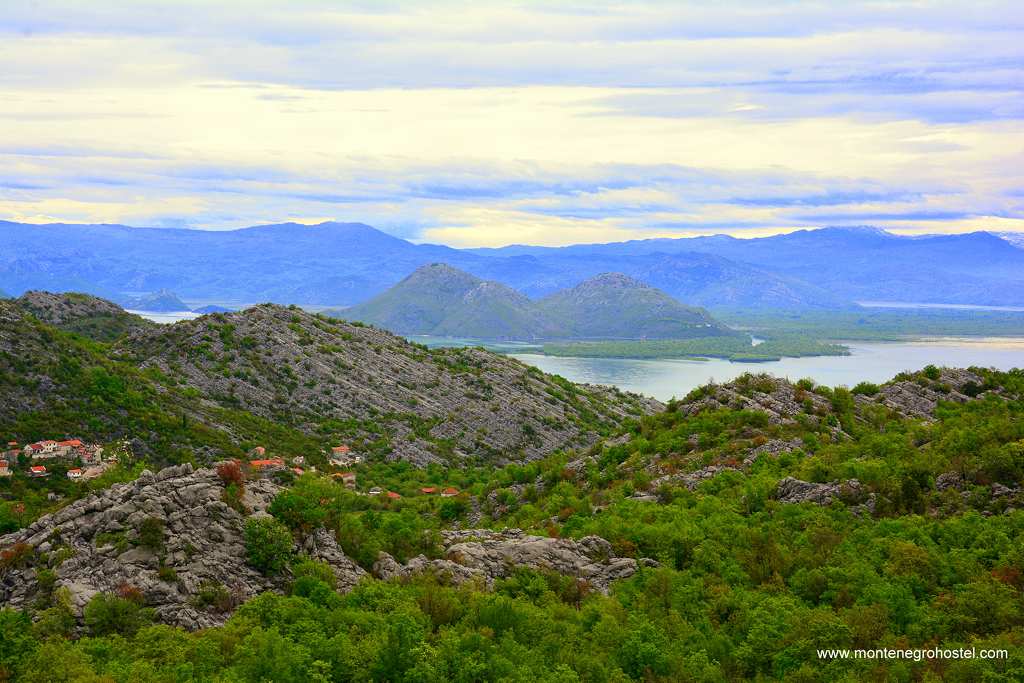
Opposite the village is a tiny islet of Gromžur with a fort that covers almost the whole of it. Built by the Turks and taken by Montenegrins in 1878, it was consequently used as a prison for serious violators. As the first institution of its kind in Montenegro, the prison had its book of regulations, which proscribed that all the detainees, as well as their guards, should be non-swimmers, and one of its most peculiar rules was that if someone escaped, the guard responsible for it should serve the rest of his sentence. The only residents of Gomžur today are numerous cormorants and pelicans who nest in its walls.
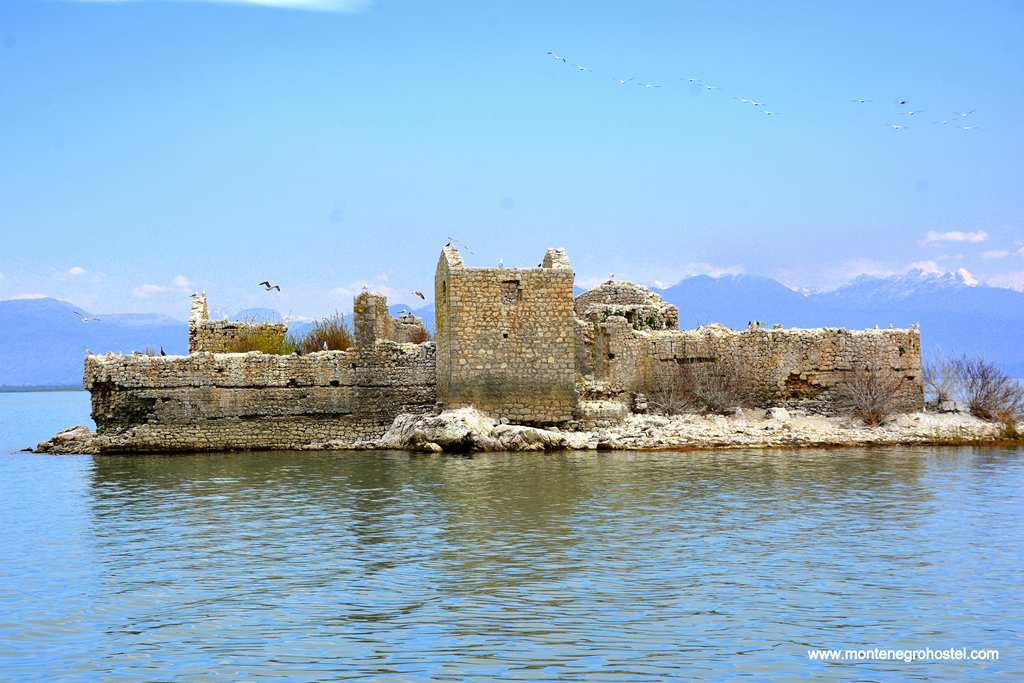
The next village you will reach is Seneca. While the center of this village enjoys an agricultural setting seemingly far from the lake, its nearby hamlet of Raduš is an interesting example of a small fishing community. It nests above “oko” (eye) of the same name, which is a depth of 60 m and is the deepest spot in the Lake, and a protected spawning place of bleak. After Seoca, the road continues high above the shore with a nice view of the coast and its many small islands, called Gorica (“small hill”). This is also where the Christian villages end, and the Muslim ones start, with Albanians as the predominant population. The village of Murići is divided into two Gornji (Upper), above the road, and Donji (Lower), closer to the Lake. The latter has a long pebble beach, which is probably the best place for swimming in Lake Skadarsko. On the beach, you will also find a restaurant and a campsite.
Facing Murići are two islands with Orthodox monasteries. To visit them, you should take a local boat ride. The monastery on the isle of Beška, directly in front of Murići, consists of two churches. The larger one (still in ruins) is the endowment of Djuradj Balšić from the end of the 14th century and has a central cupola and the belfry “on distaff”.The smaller one was built by his widow, Jelena, daughter of the Serbian Prince Lazar, a well-educated noblewoman who left behind several poems and built many monasteries in Zeta. In the narthex of the small church, above the door, stands carved the original inscription about its construction, which took place in 1438, while inside it is the grave of the church patroness. The monastery is inhabited by friendly and welcoming nuns. If offered, try their pomegranate juice (sok od nara), the refreshing specialty of Murići and the adjoining region.
A bit further to the north is the smaller isle of Starčeva Gorica. It dates from 1378 and was founded by the monk Markarije, a famous spiritual leader, hermit, and practitioner of hesychasm, a technique of meditation popular in the 14th century throughout the Orthodox world. In line with this tradition, the monastery is today inhabited by a solitary monk, a true loner reluctant to communicate with tourists. The monastery is famous for the grave of printer Božidar Vuković, who was buried here with his wife per his last wish. To the south of these two is the isle of Moračnik, which also gives a home to a monastery. The monastery was built by Balša III, son of Djuradj and Jelena, before the first mention in 1417. Today, on this small isle stands an equally tiny domed church of the three-leaf type, next to it a bulky tower four floors tall, and a small monastic dwelling. Continuing southwards along the road will take you through the wild and desolate scenery of rocks and shrubbery.
After several kilometers, the road starts to take a more inland course, and the inhospitable terrain is replaced by increasingly more fertile grounds and greener surroundings where people still practice agriculture and cling to their old ways. Especially nice are the old trees of oak and chestnut, an example of which is one by the road in the center of Livari. Before and after the large and dispersed village of Kostanjica, you will pass through two kinds of chestnut woods that gave the village its name (kastanj) in the Old Church Slavonic is a chestnut; the standard word is kesten. Here, the fascinatingly large trees, all several hundred years old, overhang the road and dim the sunlight even during the sunniest of days. These natural rarities are remains of much larger forests that existed here and give you some idea of what are looked like in the time of Duklja and its Prince Vladimir. Between these two lies the center of the village, a fertile dale in which many of the inhabitants grow tobacco.
The last interesting place along the road is Ostros, a large ethnic Albanian village with a restaurant (with rooms to rent), supermarket, and bakery where you can stock up on your supplies. The village is at its nicest on Wednesdays when peasants from surrounding villages come and offer their products on the local market. Half a kilometer after the center of the village, look for a stone tower to the left of the road. These are the ruins of Prečista Krajinska monastery. Founded in the mid-10th century, it gained its glory as the burial site of St.Jovan Vladimir. For a brief period in the 15th century, it was a seat of the Orthodox Zeta bishopric before it was transferred to Vranjina and then to Cetinje.
The monastery was laid to ruins in one of the punitive expeditions by the pasha of Shkoder in the late 17th century. Today, we see the walls of the original church, which are a few feet high, and a narthex with a high belfry, an addition from the time when the church became the seat of the bishopric. The road continues further to village Ckla (the last one on this side of the Montenegrin part of the Skadar Lake) and to Stegvoš pass, on the Rumija Mountain, where one can enjoy the spectacular view of Albania.
SACRED LOVE OF VLADIMIR AND KOSARA
Duke Jovan Vladimir succeeded his father Petrislav on the throne of Doclea while still of a very young age. He lived a life as a pious Christian ruler, building churches and taking care of his people. Due to being an ally of Byzantium, he was attacked by the mighty Tsar Samuil of Bulgaria. However, not wishing to shed blood, Vladimir retreated with his people to the hill of Oblik near Svač. His people suffered from venomous snakes, and Vladimir asked God for help; from then on, the legend tells, no snake on Oblik was ever poisonous again. As the siege became drawn out, Vladimir decided to sacrifice himself for his people and surrendered to Samuil, who took him as a captive to his capital on Lake Prespa in Macedonia. The Tsar had a daughter, Theodora Kosara, equal in virtues to the young duke. While washing every day the feet of her father’s prisoners, she fell in love with Vladimir and managed to persuade her father to let her marry him. Thus, Vladimir was not only allowed to return to Doclea as a ruler but also received from his father-in-law the province of Travunija as well.
After Samuil died in 1014, his nephew Jovan Vladislav was eager to get rid of his lands. In 1016, the new Tsar sends a priestly envoy to Vladimir. During his visit, the treacherous Vladislav organized his men, dressing them up as bandits, and he ordered them to ambush Vladimir and kill him. The killers found Vladimir praying in a church and beheaded him as soon as he came out. In his hands, he was still holding a cross with which he was lured into the trap. That same night, the dead body radiated with light, and Kosara had no problems persuading her relative to give her the body.
Duke Vladimir was buried in his capital, in the church of Prečesta Krajinska, where Kosara spent the rest of her life as a nun and was eventually buried at his feet. Tsar Jovan Vladislav met his demise the following year. Vladimir’s body was taken in the 13th century to Elbasan (Albania), where it remains to this day, revered as a relic. The cross from his hands is kept by the Mrkojevići clan, who are settled in the vicinity of Bar. On every Pentecost, the procession of Catholic, Orthodox, and Muslim believers carries the cross to the top of Mt Rumija, always arriving before dusk.
ŽABLJAK CRNOJEVIĆA
Žabljak (with an addition “of the Crnojevićs, not to be mixed with the one near Mt Durmitor) is a well-preserved medieval castle with a small village underneath it at the edge of the Skadarsko Lake. Though it is almost a certainty that at this same place stood the fortified center of an early medieval Slav shire of Podlužje, the castle of Žabljak as we see it today is the work of Crnojevićs from the mid-15th century, when they turned it into their principal residence. However, neither its mighty walls nor the exquisite position could save it from the relentless drive of the Ottomans, and it was taken in 1478 by Sultan Mohammed the Conqueror, forcing Ivan Crnojević to capitulate. The Turks kept a large garrison here, which first operated against the Venetians and later was kept by the nearby Montenegrin clans. The Montenegrins captured the castle from the Turks for the first time in a surprise attack in 1852, an incident that led to a war with the Ottoman Empire. After the Turks finally lost the castle in the 1878 war, Žabljak’s defensive role disappeared, and it gradually turned into a ruin.
The only way to reach Žabljak Crnojevića is from Golubovci (10 km away from Podgorica), and after a short drive, you will pass across a narrow bridge, and then follow a longer ride and another bridge (altogether 9 km from Golubovci). In front of them emerges a view of a solemn hill covered with small houses and crowned with a castle. Beware that in springtime, the high level of the Skadarsko Lake’s water may enclose it, turning the hill into an island. In front of the parking area lies a Turkish bridge that used to connect it on these occasions.
Apart from a couple of shanty bars operating during the season, the site is largely very quiet. A steep climb passes the village church and the ruins of a mosque and leads to the castle walls, which are up to 14m tall and 2m thick. Next to the castle’s only gate stands the round tower still hanging onto its machicolations (openings for shooting downwards from the top of the wall). Inside the clutter of its ruins stands the monument to the Montenegrins who died capturing it. From here, there are excellent views across the plain with Malo Blato Lake to the north and Lesendro and Vranjina to the south.
RIJEKA CRNOJEVIĆA
Rijeka Crnojevića is the name of a very small town on the waterfront of the river of the same name. The sleepy townlet constitutes a single street and the recently renovated embankment, both extending along the river. The town’s origins lie on the hill on the other bank, where in 1478 Ivan Crnojević transferred his seat to the castle of Obod. Today, its place is taken by a small monastery and several houses. The first houses in Rijeka Crnojevića were built at the beginning of the 19th century, as the river, which is navigable from its mouth in Skadarsko Lake, was the easiest way to bring goods to Cetinje and the rest of Montenegro. The locality became a marketplace for the adjacent villages and developed quickly. Although the town was of the same size as it is today, it was Montenegro’s second most important town until 1878 and the liberation of the lowlands. It had a regular boat connection with other places on Lake Skadarsko, a royal summerhouse, two hotels, and many merchant stores, but all of this disappeared after the Second World War when it ceased to be the seat of the local administrations and the boat traffic became less important.

All that remains from its heyday are several picturesque old houses, but its main attractions are surely the two stone bridges. The older one is a particularly picturesque sight with its asymmetrical looks and two wide arches. It was built by Prince Danilo in 1852 in place of a wooden one, which was the work of his predecessor, Petar II. The house next to it was used as Danilo’s dwelling when he stayed here. The new bridge dates from 1900 and looks much sober. The road passing across it leads to Virpazar, a 24 km winding track through thick shrubs and several small villages. A few meters away from the old bridge stands the house of St Peter of Cetinje, possibly one of the first houses in the town.
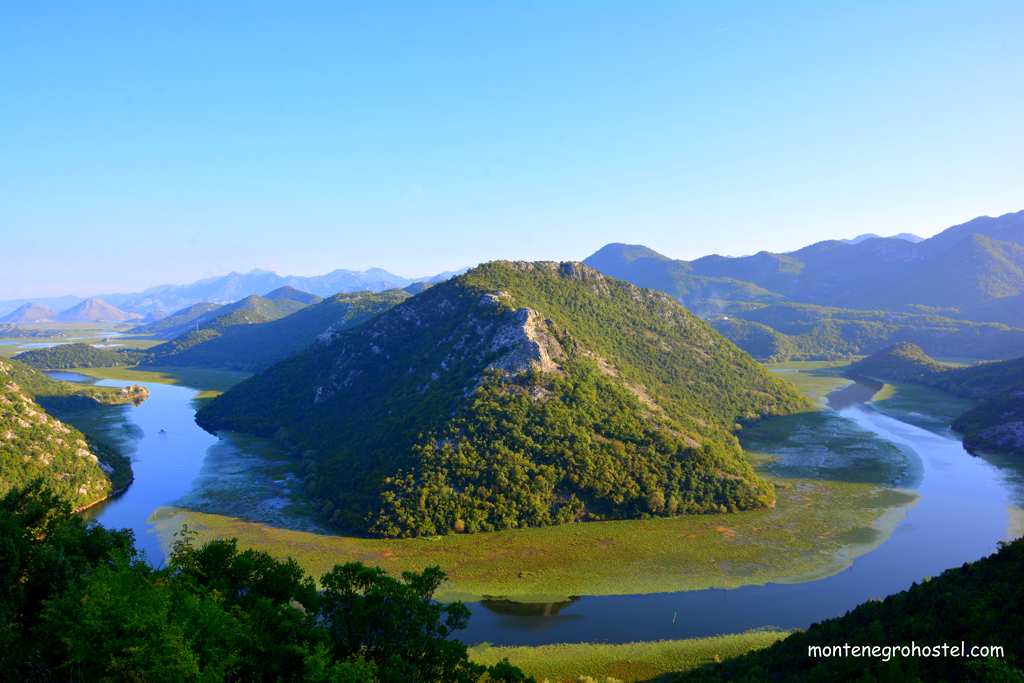
The renovation has removed almost all the markings of its antiquity except the unusual design that survives, but you will easily recognize it for the cross above the entrance to the yard. The house is used as a dwelling for the local monks. It was here that, in 1973, a sawmill was founded as the first industrial enterprise in Montenegro. The river Rijeka Crnojevića is one of the rare waterways in the world that is navigable for only a kilometer of its flow. Many of the boats tied to the shores offer rides to Virpazar and around Lake Skadarsko.
Montenegro Hostel Team
CETINJE
CETINJE
Cetinje, the old historic capital of Montenegro, is a pleasant small town with harmonious architecture and an undoubted sense of pride in its heritage, which is best observed in the museums that are amongst the richest in the country. During the tourist season or not, the town enjoys its relaxed atmosphere. Located close to the coast, Cetinje attracts many tourists on one-day visits from the nearby Budva or Kotor, but to be fully explored certainly deserves more time. Cetinje lies in the middle of an elongated karst field ringed with barren mountains. Before the mid-15th c It was a mere katun (a seasonal shepherd’s dwelling) in the middle of nowhere, but the advancement of the Turks forced Ivan Crnojević to move his seat deeper into the mountains, and in 1482, he decided to build his court here. Two years later, he brought an orthodox bishop as well and established a monastery next to the court.
The monks operated the printing press, famous for the production of the oldest Serb and indeed the oldest South Slavic incunabula. However, the new capital never lived to become a town as the Turks conquered the site in 1496, and the last of the Crnojević had to flee to Italy. Their court was destroyed, but the monastery was left alone. In the region of highland mountain villages settled by shepherds, the monastery served not only as a spiritual refuge but much more as the only authority they respected: whether they rebelled against the Turkish taxations or quarreled over the fields and pastures, they looked to the bishop for solutions. The monastery’s influence slowly increased until it became their unofficial center, and thus Cetinje became the capital before it even became a town.
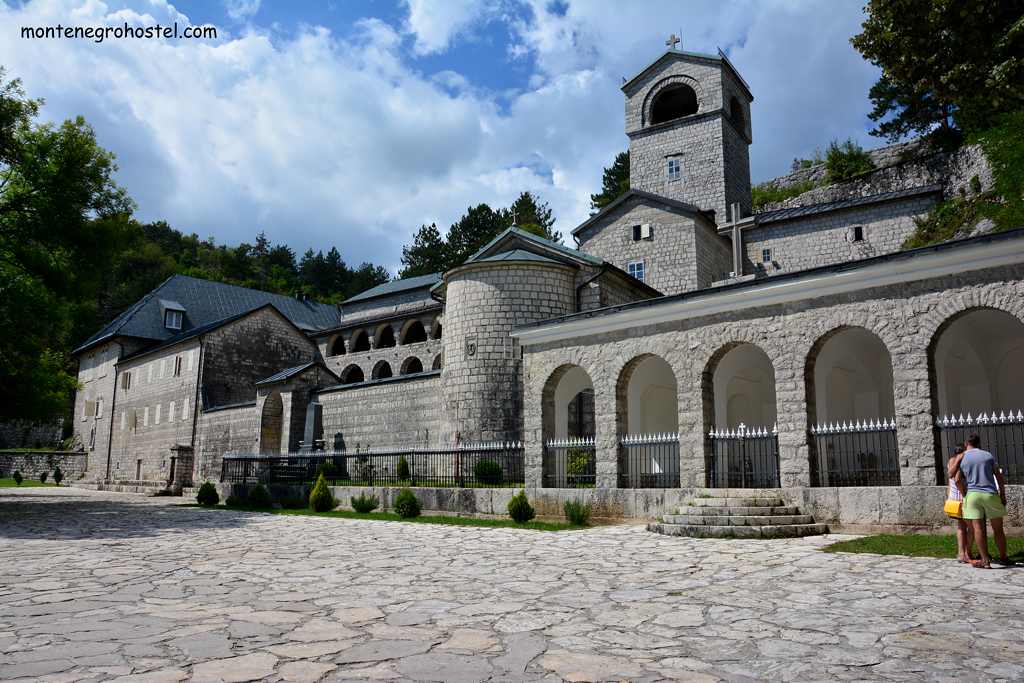
In those harsh days, the history of the Cetinje Monastery, the hub of all resistance to the Turks, became one with the bloody history of Montenegro, which consisted of endless rebellions and wars. The Turks knew this well, and the monastery was burnt down and destroyed several times while the field of Cetinje was to place where the few Turkish armies that were successful in making it this far tried to impose peace on the hostile clans. The first step in the transformation of Cetinje into a town was made in 1838 when Njegoš built his fortified palace in front of the monastery. The men needed at the palace, the guards and their first senators, soon built their houses next to it.
The further development of state authority and administration brought to Cetinje its first clerks, doctors, shopkeepers, and workers for the state printing house. These were followed by many clan leaders who held important state functions and who started spending more time in the capital than in their native villages. The town grew even faster when, in 1878, Montenegro became an internationally recognized country. Around the court of Prince Nikola formed a circle of well-known personalities, such as the Serb writers Laza Kostić and Simo Matavulj and Russian geographer Pavel Rovinski, who instigated the cultural and intellectual life of the capital by running the literary magazine and founding the reading room and the first theatre. By the end of the 19th century, Cetinje grew to around 400 houses and 2,500 inhabitants. It acquired the form of a very small but orderly town with the court and government buildings, foreign legations, parks, and even such an excess as the skate-rink.On the other hand, it was still the capital of a poor warrior nation, where their male inhabitants, from innkeepers to MPs, carried weapons all the time.
Cetinje managed to escape the destruction of WWI but witnessed a bloody day of fighting on Orthodox Christmas in 1918 when the town was unsuccessfully attacked by adherents of the deposed King Nikola. In Yugoslavia, the town remained the seat of the regional administration, but the local governor could hardly match the pomposity of the exiled King. In the Second World War, the town was occupied by the Italians, who tried in vain to promote it into the capital of their puppet state of Montenegro.
The town was liberated by communist partisans in 1944, but already in 1948, the capital of the new republic was transferred to Titograd (Podgorica). Cetinje politically and culturally gradually fell into a slumber and was kept alive by its several very successful factories. During the last few decades, as more institutions, as well as two faculties, were transferred here, bringing with them educated and young people to the town. The inhabitants of Cetinje proudly cherish memories of the town’s importance and, in the last decade, played an important role in the revival of Montenegrin nationalism and the road to independence.
CETINJE MONASTERY
The oldest surviving edifice in Cetinje is its monastery, around which the town grew. The present-day monastery was built in 1710 by Metropolitan Danilo following the destruction of the complex by the Turks in 1692. For the sight of his new monastery, Danilo chose the place previously occupied by the court of Ivan Crnojević, which was easier to defend with its back and sides sheltered by rocks and with a high wall needed on just one side. It was a wise decision as the monastery had to be defended several times during the 18th century. The last occasion it was looted and burnt down was in 1785, which was the last time the Turkish forces attacked Cetinje. As the metropolitan was also the ruler of Montenegro, the monastery was the center of the spiritual and political life of the country. In 1838, Njegoš moved to his newly erected Biljarda court, where he continued to perform his state duties. In 1851, the roles of bishop and prince were separated, and the monastery remained a seat of the spiritual orthodox authority over the whole of Montenegro, remaining so to this very day.

The monastery complex is an unusual cluster of edifices that were all built with local stone. Its central feature is a church dedicated to the Blessed Virgin Mary with a high bell tower at its farther end and an apse jutting towards the approaching visitor. In the middle of the apse, one can the plaque with a two-headed eagle, and coat- of- arms of the Crnojevićs, which originates from their old court. To the right of the church is the covered graveyard of the Petrović-Njegošs. By the main entrance to the complex are a drinking well and the grave of Janko Vukotić, the commander-in-chief of the Montenegrin army in World War I. In the stone-clad courtyard, there are several more tombs, the most notable ones being of metropolitan Sava (1735-82) and of metropolitan Mitrofan Ban, whose main achievement was the unification of bishoprics. Under his jurisdiction with other orthodox-Serb eparchies, in the newly formed Kingdom of Yugoslavia, hence formed the united Patriarchate of Peć from Kosovo.
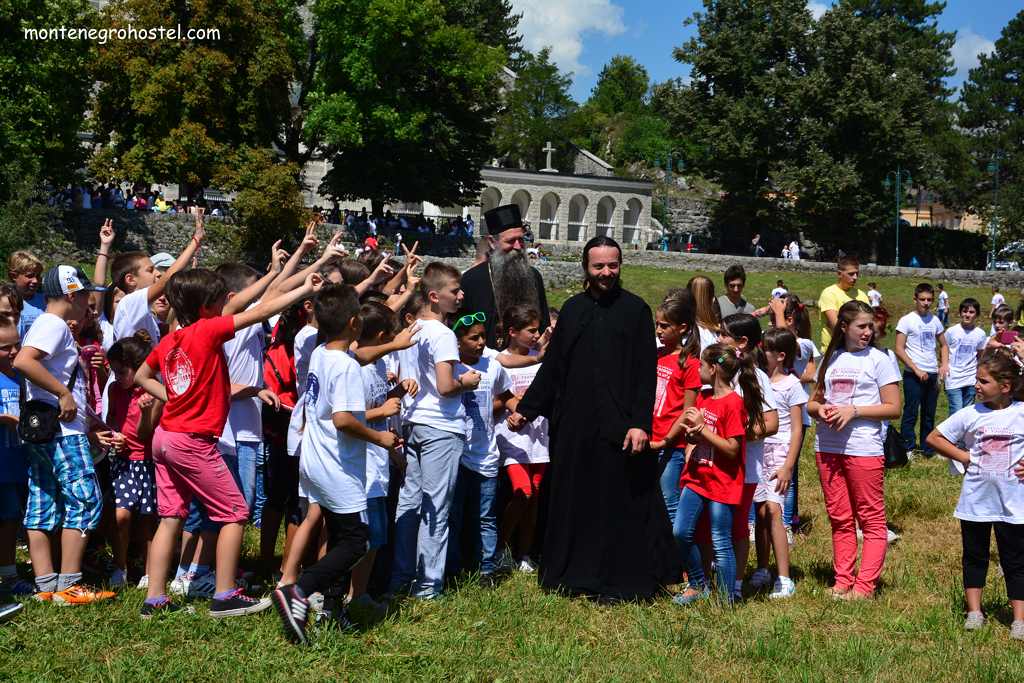
The entrance to the monastery church is gained through a small narthex, and the door above stands a carved inscription about the founding of the monastery in 1484, brought here from the destroyed old monastery. The interior of the church is unpainted but has a high iconostasis, a work of an anonymous Greek painter from the mid-19th century. On the right of it is a casket with relics of St Petar of Cetinje, the most venerated saint of Montenegro, because of which this monastery is also sometimes referred to as the “Monastery of St Petar of Cetinje”. Inside the church are also the graves of Prince Danilo of Grand Duke Mirko, the father of King Nikola. The central part of the monastery comprises a monk’s cell, which lies behind the arched porches with short columns whose capitals display two-headed eagles and come from the old monastery.
On the other side of the courtyard is the entrance to the treasury. As it contains innumerable treasures, it can be visited only on a guided tour available until 2 p.m. every day. The treasury is the richest in Montenegro and one of the richest in all of the Serbian Orthodox monasteries. It contains many ornamented vestments and richly embroidered bishops’ robes ( one especially splendid associated with St.Sava), scepters, the church flag from the time of Balšićs, and two old miters, one supposedly belonging to King Stefan Dečanski (14th century), the other metropolitan Visarion Borilović from the 16th century. Among the liturgical objects, the most interesting is the intricately carved wooden cross framed with gold (1637). Of special interest are books kept here, such as the hand-illuminated Divoš’s Gospel and Cvjetni Triod (both 17th century), then the valuable incunabula (first printed books): Krakow Breviary, the first Slavic printed book from 1491, and Psalter from the Crnojević printing-house (1494) with its excellent woodcut illustrations in the spirit of Renaissance, as well as the 16th-century books printed in Venice by Božidar Vuković and his son Vićentije and Jerolim Zagurović in Kotor.
Of special interest is the founding charter of Cetinje Monastery, guarded throughout the centuries by the monks, the seal, and the stuff of Ivan Crnojević. There is also a special chapel keeping the splinter of the True Cross and the right hand of St. John the Baptist, two relics of utmost value. Right in front of the monastery stands the threshing floor (gumno) reconstructed in our times to the likeness of the original one constructed by Metropolitan Savo in the mid-18th century. Its diameter is the same as the Tsar Bell in Moscow’s Kremlin, which Sava visited. The threshing floor of the monastery, as well as the other villages in the region, was used not only to finish fieldwork but also as a convenient place for gatherings of people where important community matters were debated. This one was especially important as the making of all state decisions and the elections of the metropolises happened here. A good part of Njegoš’s “ Mountain Wreath” is set here as well.

Taking the road to the right of the monastery will lead you to a small plateau where, until 1938, stood Tablja. This was a large tower that was built in 1835 by Njegoš for defensive purposes, but it was soon discovered that it was not suitable, and its construction was abandoned. Instead, it became a place where the cut-off Turkish heads were displayed until this habit was abandoned in the latter part of the 19th century. Later on, it was used as a palace from which important guests were greeted and important news was announced with cannon fire. After 1873, when the foundry of Laza Urošević from Zemun (Belgrade) donated a large bell with a weight of 1631 kg, Tablja served as the bell tower of the monastery. The tower was pulled down to construct the new episcopal (the model of which can be seen in the treasury of the monastery) in its place, but this never happened due to WWII. Its bell was carried to a small belfry standing above this site. The large cavity seen on the west side of the plateau is one of the entrances to Cetinjska Cave, a little-explored natural phenomenon 1680 m long and with a small stream at its bottom. Because it is not adapted for visits, the cave is out of reach for tourists.

BILJARDA (NJEGOŠ'S MUSEUM)
This stately stone edifice of unusual design was built in 1838 by Njegoš as a first step in separating his duties as a metropolitan and his duties as a ruler. The money for the construction, as well as the architect-emissary Yakov Oseretskovsky, came from Russia, from which Njegoš had just returned. With its walls and round tower at each of its four corners, it looked more like a castle than a residence, a sign of the time when a potential Turkish attack was still a grim reality. Initially called just the “New House,” the edifice got its present-day name after a billiard table brought by Njegoš from Kotor to shorten his long days. With its 25 rooms, it was the largest edifice in the country. For the Montenegrins of the period whose houses only had one or two rooms, it was enormous, and instead of saying ”many,” the term “as many as Biljarda rooms” became widely used. Contrary to popular belief, Njegoš used just two rooms, one as a bathroom and the other as a living room; all others were intended for various state institutions, rooms for his guards, and guestrooms for any important foreign visitor coming to Cetinje. One of the rooms was also used to store the trophies from wars with the Turks, the core of the current historical museum.
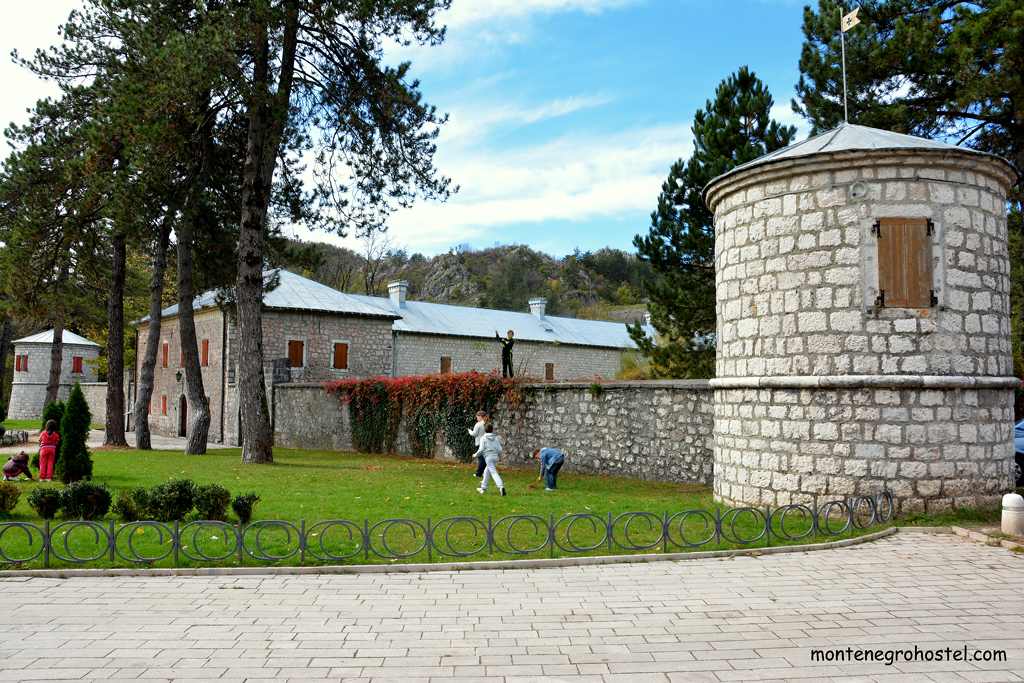
Biljarda was also used by Prince Danilo, during whose reign it experienced its hardest and most glorious hours, and then by Prince Nikola until 1867. After the princes moved out, Biljarda housed almost all institutions of the young state at various times, from printing houses and seminaries to high schools and ministries that used it until they got their buildings. Under new needs, the corner towers were torn down, and Biljarda’s look was drastically changed. This was reserved in 1951 when Biljarda got its original look back for the celebration of a sentinel of Njegoš’s death. A few years later, a museum opened here displaying the items connected with the life and work of Njegoš. Today, there are two permanent exhibitions to be seen here, included in a single ticket.
On the ground level is one of the developments of the Montenegrin army, with many interesting uniforms, insignia, and old photos to be seen. On the upper floor, the items of the Njegoš Museum are displayed. Only of few exhibits were used by Njegoš himself, but there are several objects from the period. Of Njegoš’s personal belongings, the most interesting is an armchair whose legs had to be extended to fit his giant statue. Also to be seen here are many weapons, captured Turkish flags, portraits of Njegoš and pictures of famous Montenegrins of the period, the original manuscript of the “Mountain Wreath” and many editions of the work, his and personal library of his uncle Petar I Njegoš’s letters and notes, and at the end his testament. Many works of art inspired by his personality and his literary works are also displayed here.
A separate feature of the Museum is the larger relief map of Montenegro, which takes up the lion’s share of Biljarda’s courtyard. It was made in 1916/17 during the Austrian-Hungarian occupation by their army geographers and had a strategic use. Done on a 1:10,000 scale, it is accurate in every detail and offers a perfect chance to examine all of Montenegro from a bird's-eye view with roads and towns as they were almost a century ago.
ĆIPUR
In 1890, Prince Nikola built a new church on the ruins of the old Cetinje Monastery, founded in 1484. Dedicated to the old church, the new one served as a court chapel. You can explore the remaining foundations of the original monastery, but the most interesting aspect of its existence is the four columns in front of the church entrance, each with a double-headed eagle depicted on its capital. The original church in the monastery was a stately edifice built by craftsmen from Dubrovnik and was the first and the last. among Serb-Orthodox churches to have details of the Renaissance style incorporated into its design. The court church of 1890 is a single nave edifice with a six-sided cupola and the typical front belfry “on distaff”.Inside, one can see the high iconostasis, which was, as well as many icons on its unpainted walls, created by masters from St Petersburg. In the church can be seen the grave memorials of Ivan Crnojević as well as of King Nikola and his Queen Milena, whose earthly remains were brought here in 1989 from the Russian Church in San Remo (Italy), where they died in exile.
MUSEUM OF KING NIKOLA
The museum is located in the edifice of the New Court, to which Prince Nikola and his family moved when they left Biljarda in 1867. This non-pretentious one-floor building looked even plainer before it got its present-day look with a balcony and gable in 1910. Though done in European style, the dark-red painted building with grey roof and white details has a certain rough, mountain simplicity that makes it unmistakably Montenegrin. The building was used as a court until Nikola departed from Montenegro in 1916. Since 1926, it has served as a museum. The court preserves all the original interiors and decorations from the time when the royal family lived here. On the ground floor is the study of King Nikola with his clothes, uniforms, and weapons. Next to the state flags and arms, a set of Montenegrin currency perper (in use only from 1906 to 1916) and postage stamps (from 1874) are displayed.
The medal collection includes both the decorations of Montenegro including the “Medal of Obilić” (named after the legendary hero of the Kosovo Battle, where the portrait of Obilić was modeled on Njegoš’s appearance) and the ceremonial one representing all the members of the house of Petrović-Njegoš from Vladika Danilo to King Nikola, as well as a range of foreign medals amongst them the most peculiar being which one the Turkish Sultan awarded King Nikola during a brief period of peace between these two nations. The smaller rooms to the right contain a court library with many valuable and rare volumes, including the books from the Crnojević printing house, old charters, originals of the international agreements, and codes of law of Montenegro.
The rooms on the first floor retain fully the style they had while they were used as the large dining room, several salons, the reception rooms, and the bed chambers. The most interesting items here are many portraits of Nikola’s family and their relatives from other European royal courts. There are many of these, as Nikola married five of his daughters to various kings and dukes, thus gaining the nickname of “the father-in-law of Europe”. Among the historic paintings, the best known is “The Evacuation of Montenegrin Court” by Czech Jaroslav Čermak, which depicts the soldiers evacuating through the waist-high snow due to the arriving threat of the Turks, and Valho Bukovac’s “Montenegrins Around a gusle-player”.
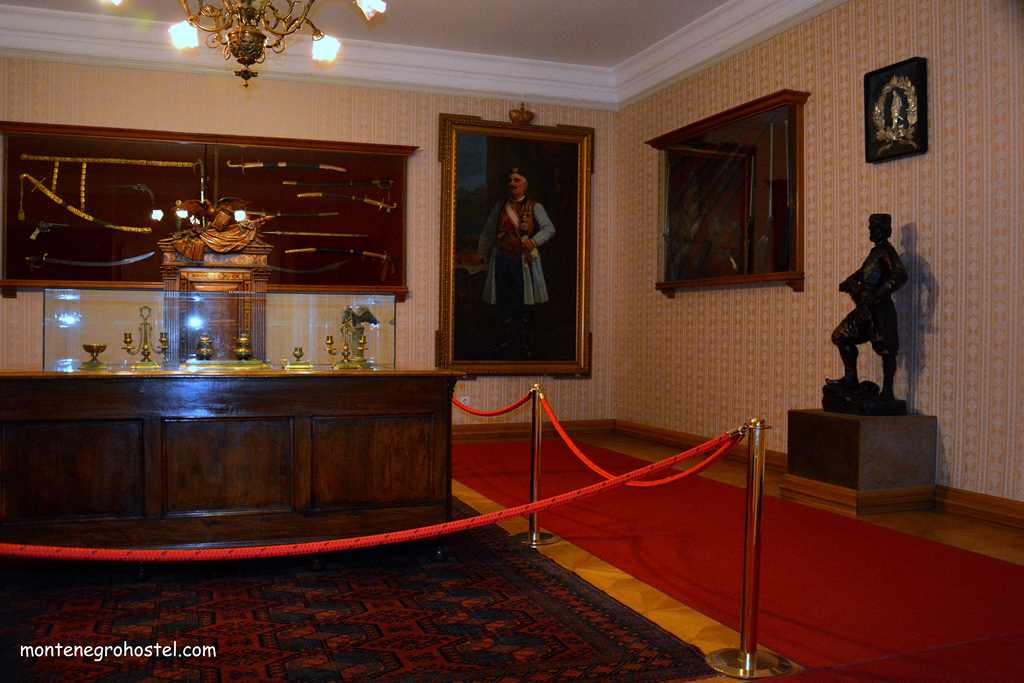
The main feature of the square at the front of the Court is a small park with a monument to Ivan Crnojević, the founder of Cetinje, a work of Ante Gržetić from 1982, when the town celebrated five centuries of its existence. To the left of the museum stands the building of the Bulgarian Legation, today housing the “Gradska kafana” restaurant. The house was built in 1910 by architect Fernando Balacco, who was finishing the reconstruction works on the court building at the time. However, Bulgarian diplomats stayed here only for three years, as in 1913, diplomatic ties between the two countries were severed when Montenegro joined Serbia against Bulgaria in the Second Balkan War. Next to it stands the house on whose ground floor the Atelier “Dado” is located, named after painter Miodrag “Dado” Djurić, who worked here for some time. Today, one can see permanent exhibitions by various artists, mainly from Montenegro.

ETHNOGRAPHIC MUSEUM
The house in which the museum is located, 1883, was a wedding gift from Prince Nikola to his daughter Zorka, who married Petar Karadjordjević, the pretender to the throne of Serbia. The couple lived here for some years, and it was here that their son Aleksandar, the future King of Yugoslavia, was born. Zorka died before her husband became the next King of Serbia in 1903, and hence the house was listed as Peter’s property, which he donated to his state at the beginning of 1914 to establish the legation for Serbia and Montenegro. As the large collections of the Ethnographic Museum can not fit into the few rooms in this modest building, here stand displayed only the long-lasting temporary exhibitions. The current one is named „From Thread to Fabric“ and presents the traditional textile handiwork, tools, and techniques, as well as parts of the national costumes from various parts of Montenegro.
HOUSE OF THE GOVERNMENT
When the construction work on this building started in 1909, the rumor was that Montenegro was on the brink of something huge. In 1910, Prince Nikola announced that on the 50th anniversary of his rule, he decided to assume the title of King and bestow the constitution to the country and organize its first elections. The young parliament and its government were housed in this brand-new edifice, a tasty mix of neo-renaissance and neo-baroque. However, the building was still spacious enough to host the post and telegraph office as well as the state printing house Today this is the seat of the National Museum of Montenegro which incorporates all the museums in Cetinje and is a home to the Historical Museum of Montenegro which incorporates all the museums in Cetinje and its home to the Historical Museum and the Gallery of Modern Art.
The ground floor is occupied by the Historical Museum. The first room deals with prehistory, antiques, and the medieval state of Doclea, displays the Greek vases from Budva, archaeological findings from the Roman town of Doclea, and reproductions of medieval documents and frescoes. The second room is dedicated to the Balšić and Crnojević dynasties that ruled parts of Montenegro in the 14th and 15th centuries. Their period is illustrated by the coins they minted, the jewelry, copies of pages from the first printed books, etc. The third room illustrates the period of Turkish domination and the fight for liberation with many old manuscripts and books, and items belonging to the first bishops. The fourth room displays the items from the time of Petar I and his successor Petar II (Njegoš), with the most interesting exhibits being the old Turkish and Montenegrin flags, including the Montenegrin war flag from the battle of Vučji Do (1876), pierced by innumerable bullets. Here are also exposed the various arms from the period, as well as the death mask of Kara Mahmud pasha Bushatli, taken from his cut-off head after his defeat by Krusi in 1796. A similar display of varied sabers, dervish axes, North African knives, and flags captured in the battles against the Turks is the main feature of an exhibition room dedicated to the 19th century.
The sixth room focuses on the period of the Kingdom (1910-1918) with various state insignia, coins, and banknotes to be seen. The next room deals with the interwar period, mainly with the Christmas Uprising against the dethronement of King Nikola and with the work of the Communist party, with photos, documents, and, of course, guns used in fighting. The last room illustrates the events during WWII when the territory of Montenegro saw bloody fighting between various factions fighting for or against the occupying forces. The first floor houses the Gallery of Modern Art, which, despite its name, also has a collection of icons and some academic works of art. Its first room features the works of fine art from the territory of the former Yugoslavia from the 1890s to 1970s, with works of such famous painters as Vlaho Bukovac and Sava Šumanović, or sculptors such as Toma Rosandić. The collection of Milica and Svetozar Vukmanović is more modern and abstract and has works of art by Yugoslav artists such as Mića Popović and Milan Konjević, as well as a few smaller works of Renoir, Picasso, Chagall, and Dali.
Next is the Montenegrin collection, which gives you an overview of the fine arts in Montenegro from its beginnings with Anastas Bocarić (late 19th century) and Pero Poček (first quarter of the 20th century), via modernists to the especially rich post-modern group of paintings by Dado Djurić and Vojo Stanić. One room is dedicated to the works of Milo Milunović (1897-1967), who during his lifespan passed through the phases of impressionism, neoclassicism, and most notably expressionism, inspired by the colors and light of the Mediterranean (“Fruits of the Sea”, 1954). The exhibitions of works by Petar Lubarda (1907-1974), certainly the most important figure in Montenegrin art, include several of his famous landscapes inspired by rugged Montenegrin karst, including the anthological, almost abstract “Nights in Montenegro” (1951) and the large canvas with a theme from national history, “The Kosovo Battle”. The next room presents the work of Branko Filipović “Filo” (1924-1998), a fully abstracted artist whose main medium was color. The last room hosts the works of Dado Djurić (born 1934), a surrealist who paints apocalyptic visions and creates sculptures twisted in many mutations.

The next room is dedicated to the icons and religious paintings, whose prime exhibits are the icons of the Dimitrijević-Rafailović school from the Montenegrin coast, “The Execution of St Genevieve” a late medieval work by an unknown master from north Europe, and two representatives of the Holy Family, one by Giovanni Battista Pittoni and the other by Tripo Kokolja, the greatest Baroque painter from the territory of Boka Kotorska. A special room, colored in mystic dark blue light, is left especially for the icon of Our Lady of Philermos, one of the holiest in the whole of Christianity.
MIRACULOUS TRAVELS FROM THE HOLY LAND TO CETINJE
When St. Luke the Evangelist came to take the body of St. John the Baptist, the people would not let him take it because they believed in its miraculous workings, and he had to settle for John's right hand. St. Luke's hand was sent to Antioch, from where it was later transferred to Constantinople and kept as the holiest of the relics in the church of Hagia Sophia. St. Luke is also attributed to having painted the icon of the Madonna. The icon was brought during some unknown age to the Byzantine isle of Rhodes, where it was highly venerated in the church of the hill of Philermos. In 1309, the island was conquered by the Knights Hospitaller, and the icon’s veneration was successfully adopted by the Order, which proclaimed it as its patroness. Some years after the taking of Constantinople, the Turkish Sultan gave the hand of St John to the Knights as a diplomatic gesture, while somewhat later, the French king Louis XII presented the Knights with the splinter of the True Cross. It was believed that the miraculous Icon protected the island and the Hospitallers and helped them fight off several Turkish attacks until the siege by Mahomet the Conqueror in 1522, when the Knights had to leave the island. The Order rambled around Europe in search of a patron for seven years, carrying with it its most precious sanctities. Emperor Charles V gave them the island of Malta, after which they were named the Kings of Malta. Around the relics of St John’s hand grew the island’s cathedral, and in the cathedral, a chapel, dedicated to the Madonna of Philermos, which obtained great wealth through donations by the Knights and pilgrims.
In 1798, Napoleon conquered the island and took these treasures to finance his expedition to Egypt, but let the last Grand Master take with him the Icon (though stripped of its golden frame), the Hand, and the Splinter. The Knights lost their home once again but were warmly welcomed by the Russian Tsar Paul I, who sheltered them. In gratitude, the Knights presented their most valuable treasure, gems, the ones that we see today. Paul’s successors had different options regarding the Order, and it moved from St Petersburg to Rome, but the holy objects remained with the Romanovs until 1919, when the Russian priests managed to take them out of the reach of the Bolsheviks and gave them to the Empress-Mother, who escaped to Denmark. On her deathbed, Maria Fyodorovna conferred the relics in 1928 to a priest who took them to Berlin and eventually to Belgrade, where the exiled seat of the Russian Orthodox Church was. The Russian patriarch gave them to his benefactor, King Aleksandar of Yugoslavia, who stored them in his place.
When the Nazis attacked Yugoslavia in 1941, the relics were taken by the underage King Petar II and his government to Nikšić, from where the King flew to London. But he left the relics in the nearby Ostrog monastery, where they were hidden well. Searching for the treasures left behind by the royal dynasty, the communist secret service of Yugoslavia found the three objects in 1952 and took them into its keeping, during which the largest of the gems from the icon was stolen. In 1978, the icon was donated to the Museum in Cetinje as an object of artistic value, while the hand of St. John and the splinter of the Holy Cross were given to the metropolitan of Montenegro.
NJEGOŠEVA STREET
The central street of Cetinje stretches from the Presidential Palace in the north across the Kralja Nikola Square to the hotel “Grand” in the greenery of Cetinje's parks. This was and still is Cetinje’s high street, with many shops and important institutions lined along it. But many restaurants and cafes give it its essence, and in the evenings transform it into a lively promenade where one comes to stroll and meet their friends. Starting from the left direction from the point where Njegoševa Street meets Kralja Nikole Square, there is a line of houses from the first half of the 20th century, most of them modest one-floor houses with shops on the ground floor and living quarters on the upper, with a few exceptions of more recent origin. The first corner to the right takes you to Balšića Pazar, a nice square that used to serve as a marketplace, with a nice old fountain with lions’ heads spitting water in its middle. The present-day green market (pijaca) of Cetinje lies behind the row of houses on Baja Pivljanina Street. which forms one side of Balšića Pazar.
Returning to Njegoševa Street, one reaches the Djukanović House, the first edifice on the right following a small patch of green. The house, a real miniature palace with interesting neo-baroque sculptures, was built in 1910 by Marko Djukanović, the state engineer of Montenegro. At the following intersection stands the building of the French Legation. It was built in 1908-10 following the plans of architect Paul Goudet in a modern style where vertical and horizontal lines are of equal importance and with a minimalist decoration mainly in ceramics. The building today houses a part of the National Library. Across the street in the Vukotić House (1914), whose plain facade, round windows on the top floor, and reinforced concrete construction mark the first surfacing of modern architecture in Cetinje. The second building to the right of the Vukotić house is the Presidential Palace, by whose entrance stand the ceremonial guards in their showy red uniforms. This monumental palace was built in 1934 following the plans of Bogdan Nestorović from Belgrade as the seat of the branch of the State Hypothec Bank. Especially nice are two figures standing by its entrance, representing a man and woman from Montenegro in their national costumes.
Across the street is the edifice formerly belonging to the Bank of Montenegro, still displaying its name in several languages on its facade, even though it was built in 1910, four years after the introduction of the new Montenegrin currency, the pepper. This is where Njegoševa Street ends, and the broad Boulevard of Montenegrin Heroes (Bulevar crnogorskih junaka) starts. The boulevard will lead you to the bulky buildings designed for the clerks of the regional Zetska banovina administration. On the other side of the road leading towards Mt Lovćen stands the Italian Legation from 1910 with a large garden that once included tennis courts, a favored pastime of foreign diplomats living in Cetinje in those days. Today, the legation serves as the seat of the National Library.
BLUE PALACE
On the lower end of Njegoševa Street, the most memorable edifice is The Blue Palace, named after the color of its exterior. It was constructed in 1895 for the use of the heir to the throne, Prince Danilo. Today, it serves as an exhibition space for the National Museum. To the right of the Palace is the modest building of the British Legation, adapted from local houses. To the front of the Palace is the Town Park, laid out towards the end of the 19th century for the pleasure of the growing middle class of Cetinje, while its back lies the Court Park, once enclosed by a wall. At its further end are two busts erected during the marking of the death of Njegoš in 1951, the one representing his teacher Simo Milutinović Sarajlija, and the other Ljuba Nenadović, a writer who accompanied Njegoš on many of his journeys and later recorded his recollection.
ZETSKI DOM "THE HOUSE OF ZETA"
“The House of Zeta” is a popular name given to the first theatre building in Montenegro, celebrating the glory of the medieval state of Zeta, the precursor of Montenegro. The work on providing a temporary stage to the amateur theatre group, which included almost the whole of the intellectual elite of the town, started in 1884. After the rough works were finished, the building was opened with the drama “The Balkan Empress” (Balkanska Carica) by Prince Nikola, but the works on the interior were protracted to 1896 due to a lack of funding. Except for the theatre stage, it was also the seat of the state library and museum, and it was here that most of the sessions of the Montenegrin parliament took place. In the courtyard of Zetski dom stands the bust of Jovan Pavlović, a Serb from the province of Vojvodina who, like many others, came to Cetinje to help the small princedom and was one of the founders of the town’s reading room, first high school, and a theatre, becoming a minister of education in the process.
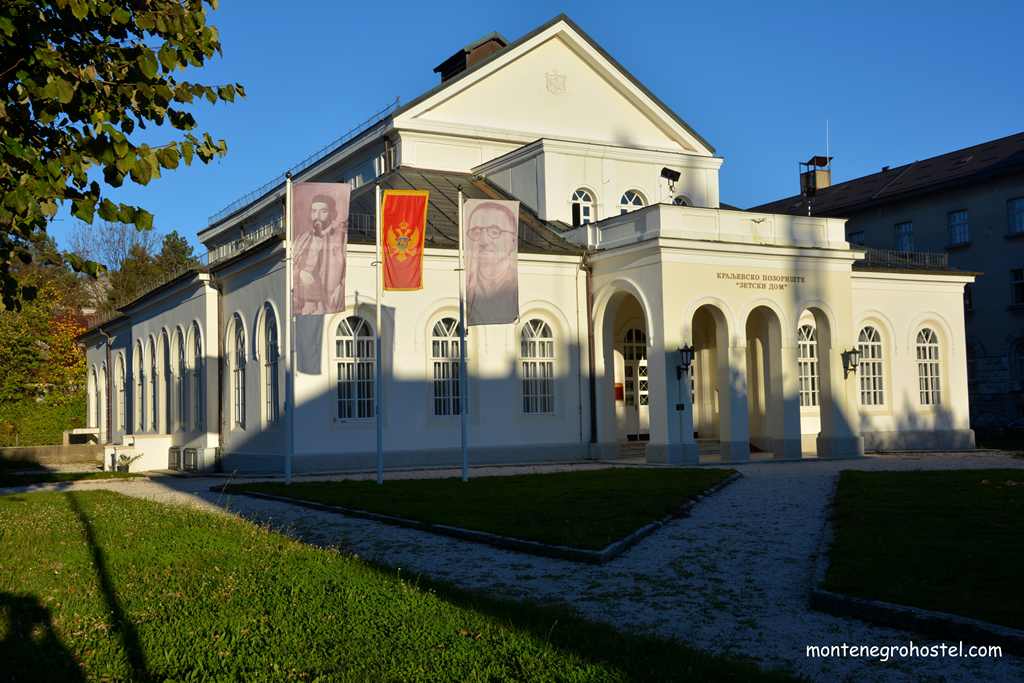
To the right of the theatre stands the bulky Banovina building (Nikolay Krasnov, 1930-32) that got its name after the administrative seat of Zetska Banovina, one of the nine regions into which Yugoslavia was divided in 1929. Today, this building serves as the seat of the local assembly meets on signification occasions, promoting the town as the historical capital of the country. The first street to the right of the Banovina will take you to the building of the Russian Legation, the most beautiful among the buildings of the foreign missions in Montenegro. This work of architect Corradini, completed in 1903, is enclosed by decorative railings with two sentry boxes, has rich ornamentation on its main facade, and a pavilion and fountain in its garden. Today, the building is used by the Faculty of Fine Arts.
VLAŠKA CRKVA
Vlaška church is the oldest building in Cetinje Field, but for a long time was not considered a part of Cetinje, which grew from the direction of the monastery. It was erected as a wooden edifice in the mid-15th century, before the establishment of the court and monastery of Ivan Crnojević, by the cattle breeders (vlasi) who formed a special category of population in medieval Serbia and Zeta. Torn down and rebuilt several times, it obtained its present look in 1864. Though seemingly quite unusual, its fence is made from 1544 barrels of Turkish guns captured in the 1876-79 wars. The church uses the stand in the middle of the graveyard with many "stećak" tombstones, but these were later used as building material; only two survive to this day, standing by the gate of the churchyard.
Other gravestones are newer in origin, some very decorative. Inside, it is an iconostasis painted in 1878 by the Dinkonski brothers from Macedonia. On the square at the front of the church, a monument known as “The Fairy of Lovćen” (Lovćenska vila) stands tall. It was erected in 1939 in memory of 350 men from Montenegro, Boka Kotorska, and Herzegovina who left America and headed to help Montenegro in its efforts in WWI, but whose ship was torpedoed in January 1916 close to the Albanian coast, and they all drowned. The sculpture of the “fairy” and the reliefs of its sides illustrating the event are the work of the sculptor Risto Stijović. Proceeding northwards by way of Baja Pivljanina Street. After the next four blocks, you will reach the Austrian-Hungarian Legation. This was the first among the buildings of the foreign missions to be constructed. The building of its started in 1896 and was finished two years later. The catholic chapel in the style of small churches of the Adriatic coast, adjoining the legation, was consecrated in 1899. Today is the building is used for the Institute for the Protection of Monuments of Montenegro.
ORLOV KRŠ
“Eagle’s Crag” is the name for a steep, rocky hill that surmounts the town from the southeast. The walk to its peak is popular with the people of Cetinje due to its proximity to the town’s center and the orderly track leading to it, where one can see the mausoleum of Vladika Danilo and enjoy memorable views. The small mausoleum was envisioned by Princess Jelena, wife of King Emmanuelle of Italy, and then designed in detail by the French architect Frouchet. It has the form of a grave covered by a baldachin with a coat-of-arms on each of its sides, the first is of the state, the second of the ruling dynasty, then the old arms of Montenegro, and the coat-of-arms of the Cetinje metropolitan diocese. In addition to the view of almost all of Cetinje lying beneath you, on the other side open great prospects of the Lovćen Mountain.
It has the form of a grave covered by a baldachin with a coat-of-arms on each of its sides, the first is of the state, the second of the ruling dynasty, then the old arms of Montenegro, and the coat-of-arms of the Cetinje metropolitan diocese. In addition to the view of almost all of Cetinje lying beneath you, on the other side open great prospects of the Lovćen Mountain.
Montenegro Hostel Team
LOVĆEN
LOVĆEN
Mount Lovćen is the utmost symbol of its defiance of its enemies and its permanence. If one bears in mind that its wooded slopes served as the last retreat for Montenegrins in times of war, while its high stone peaks were the first glimpse of the country a visitor would see coming from the sea, the mountain’s symbolic value is clearly understood. Furthermore, Lovćen is in all probability the “Black Mountain” that gave Montenegro its name. The highest peak is Štirovnik (1,749 m), topped by a TV transmitter, but it is its second-highest, Jezerski vrh (1,657 m), that holds more importance as the last resting place of the country’s national hero-Njegoš. The area around the principal peaks constitutes the Lovćen National Park. The whole of its karst scenery is dotted with fissures and pits, giving it a distinct look. Due to the height difference on its steeply ascending sides, there are several zones of different plant habitation here.
One more reason for the variety of plant life in Lovćen is the influence of both the Mediterranean and the sub-continental climate. Around 60% of it is covered in forest with birch dominating, while on the north face of the mountain grows the Bosnian pine (Pinus Heldreichii). In contrast to plant life, there are very few animal species here, mainly due to the mountain’s lack of streams and lakes. The most usual way to reach the national park is by a long, winding road from Cetinje. The hub of tourist activity is Ivanova Korita (14 km from Cetinje), a wavy upland known for its exceptionally clean air and water; the place is mentioned in one of the most popular folk songs of Montenegro. A small hostel for schoolchildren, a mountain hut, restaurants, and the visitors’ center are located here. Here is a group of busts representing all the rulers of Montenegro from the Petrović-Njegoš dynasty. Nearby is also a large threshing floor and the humble chapel erected by King Nikola.

By far the most important monument of the national park is the Njegoš Mausoleum atop the Jezerski vrh (21 km from Cetinje, open from May to mid-November from 9 to 18h). Already during his life, Njegoš decided upon the idea of being buried here, at the top of the magnificent mountain, where he often came to contemplate the work and his life. He built here a small round church in 1844 and pleaded with the Montenegrins to disregard tradition and take his body here after his death. His wish came true in 1855 due to the high snows in the winter of his death (1851), and the war with the Turks the following spring. The church remained undisturbed except by rare pilgrims visiting Njegoš's grave for decades, until WWI, when it was damaged in the fighting. The Austro-Hungarian forces decided to destroy this symbol of Montenegro and build a giant statue in remembrance of their victory. But they failed to carry out their plan. In 1925, King Aleksandar of Yugoslavia rebuilt the church with some minor additions.
However, in the late 1950s, a new initiative appeared to tear down the “Aleksandar’s Chapel” and build a mausoleum worthy of Negoš’s importance. The controversial plan met with fierce opposition and started heated discussions that lasted for years. Finally, the church was pulled down, and the present-day mausoleum was opened in 1974. Nowadays, the farthest point reachable by car is a very small parking space beneath the top, where the 461 stairs begin, leading through a tunnel to the top of the mausoleum. Croatian sculptor Ivan Meštrović found his inspiration in the style of antique shrines. Its first part is an atrium of black marble with a symbolic well in the middle.
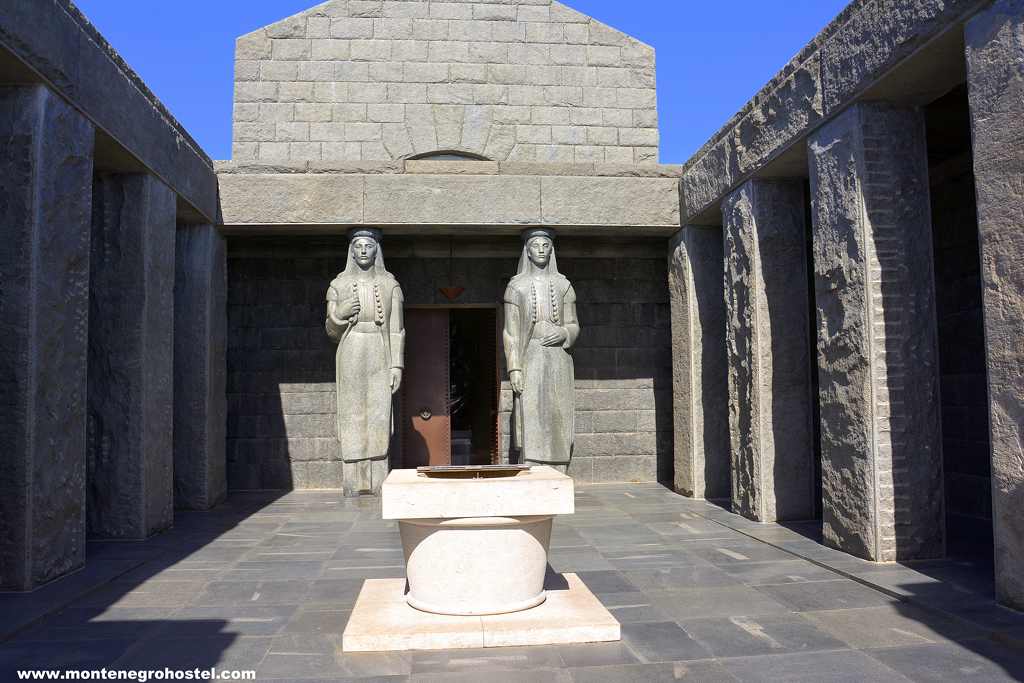
Facing the entrance of the atrium stand two giant caryatides dressed in the national costume of Montenegro. Behind them, one enters the mausoleum's highlight, the gold-covered room with the grandiose monument to Njegoš (weighing 28 tons), who stands represented in a pose of reflection, with one eagle sheltering his back. Directly beneath the monument is the small crypt with Njegoš’s grave, approached from behind. On the other side of the mausoleum is a path snaking along a precipice leading to a round viewpoint.
On a clear day, one can see hundreds of kilometers inland from here in Montenegro. All around you is the rocky landscape, waves upon waves of hills and crags, with a brief glimpse of Boka Kotorska. After a short ride down from Jezerski vrh, take the first road to the right leading around Mount peak Štirovnik. Following the next few curves, you will reach the side of the mountain facing Boka Kotorska with excellent viewpoints from where all representative photos of magnificent Boka Bay have been made. The road ends at the western edge of the Njeguši village.
NJEGUŠI
The historical village lies nestled in a small karst field directly underneath the northern foot of Mt. Lovćen. Approaching the village from the Bukovica pass from the direction of Cetinje, you can see almost the whole of the Njeguško field (polje), a green patch of fertile ground in a hollow of grey rocks and dark woods, whose lowest point stands at 850 m above the sea. Looking from the same location, one can distinguish some of the ten little hamlets of the Njeguši clan, still counted as separate villages by statisticians but otherwise connected by the main road as a whole. Njeguši is only a stone's throw away from the seaside, which can be seen from the edge of the field, but this proximity is deceiving, as a descent to Kotor takes three hours on foot. As this route was also the shortest way from the seaside to Cetinje, Njeguši was a spot that could not be avoided by any traveler coming to Montenegro.
This extraordinary position on the brink of two worlds was also important in previous centuries, as from here the Montenegrins could easily communicate with the Venetian authority, and this is why both the ruling family of Petrović-Njegoš and their most serious rivals, governors Radonjići, originated from Njeguši. After Montenegro lost its independence, and as better roads to and from Cetinje were built, the importance of Njeguši dwindled, even though its name still causes awe among all history buffs. However, the village is best known today for its excellent food products, for example, njeguški pršut, a dried ham that owes a specific flavor to the mix of the high mountain air and warm air coming from the seaside, and also the wood which is burned underneath it. Other specialties here include njeguški sir, a cheese dried for a long period, and kaštradina, dried mutton. Several families produce pršut in Njeguši, characterized by smoky rooms in which dozens of hams hang from the rooftop. Capitalizing on its history, scenic road to Kotor, and the fame among the gourmets, there are several fine restaurants in the village.
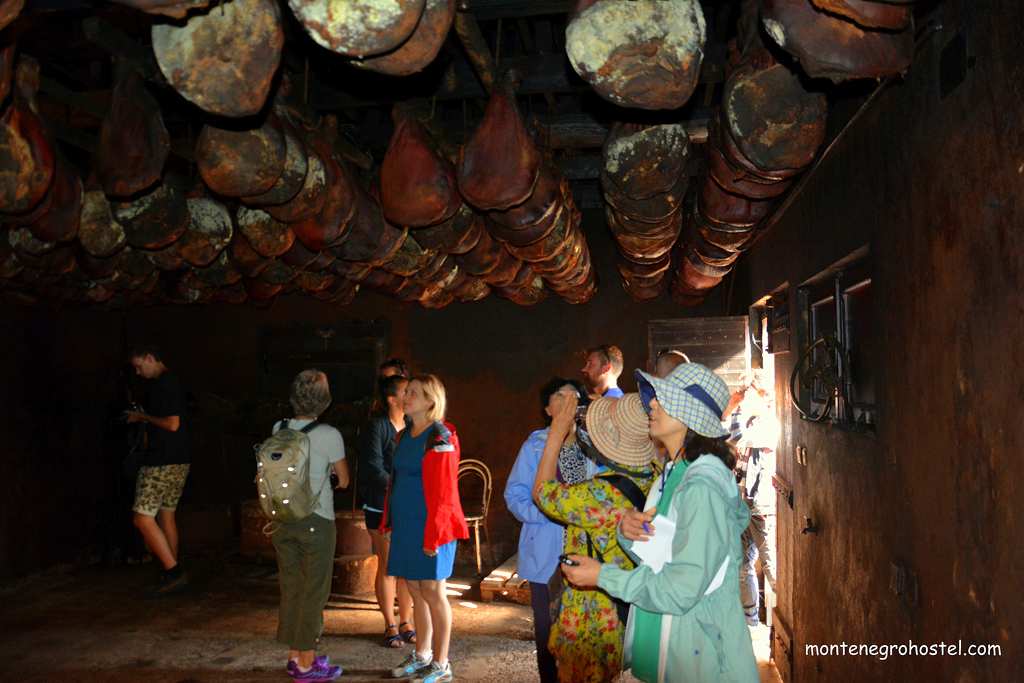
The principal sight in Njeguši is the birth house of Petar II Perović Njegoš, the famous ruler and illustrious poet. It lies directly by the road in the middle of the village. The whole complex was closed by a decorative iron railing during the reign of King Nikola, who also built his austere palace, intending to make the sight into a royal compound. The old birth house of Njegoš is a simple stone building housing of modest museum. The house was built around 1780 by Njegoš’s uncle and his predecessor, Petar I, as a dwelling for his extended family (zadruga), with one family living in each with a separate entrance, but all connected. Inside the house, you will see the simple wooden furnishings from the period, then pictures to well know personalities from the period, and some editions of Njegoš’s works. Beneath the living quarters in a basement, where farm animals and farming tools were kept.
Directly across the road is St. George’s, one of several old churches in Njeguši. This one dates from 1856 and is typical for the region, a modest stone edifice with the belfry “on distaff”. In front of the church stands the attractive bell donated by King Aleksandar of Yugoslavia, a grandson of King Nikola.
A WARRIOR–POET AMONGST HIS BARBARIANS
Njegoš was born in 1813 in the house of Tomo Petrović, a member of the family that for several generations provided Montenegro with its bishops. Baptized as Radivoje, short name Rade (by which name he remained known to Montenegrins throughout his life), he spent his youth much like the other children from his native village of Njeguši, taking care of sheep and learning to use a gun and saber. Due to his natural brightness and strong constitution, his uncle, Vladika Petar, noticed early on that he could be his likely successor. Rade was sent to prepare to be a monk and got some basic education in the Orthodox monasteries of Montenegro and Boka Kotorska. His main teacher, however, was Simo Milutinović of Sarajevo, a Serb romanticist poet who acquainted Rade with great European writers, inspiring him with love verse and writing. But above all, Milutinović made him appreciate folk poetry, and it was under its influence that he started writing his first poems.
In 1830, metropolitan Petar was consecrated as the new bishop-prince of Montenegro. Thus, his youth was abruptly ended, and he was faced with many problems affecting his small country. On one side were the Turks, who never recognized the independence of Montenegro, and on the other, internally, became a warrior and a judge. Of imposing stature with his two meters height and possessing wise counsel for the problems of his poor and uneducated people, he played his role well, but within him remained a free spirit, a philosopher, and a poet who stoically obeyed the fate given to him.
He was a ruler in a land where there were only a few men who could read and write. This painful knowledge, combined with his talent and the cruel destiny of his people, gave impetus for the creation of brilliant works such as the philosophical “The False Emperor Šćepan the Little” and poems on the Montenegrin wars, “Slobodijada”.But his true masterpiece remains the world-renowned “The Mountain Wreath”, a drama that becomes popular with educated people for its subtlety and also with the common folk for its use of the style of folk poetry.
Witnessing the wealth and education of other nations during his trips to St Petersburg and Vienna, Njegoš tried to ameliorate the painful barbarity of his people by founding schools and bringing a printing press to Cetinje. Tried by his obligations, he fell ill with tuberculosis and died in 1851, leaving behind him works that seem as fresh as when they were first written and the status of a hero amongst all Montenegrins.
Montenegro Hostel Team
OSTROG MONASTERY
OSTROG MONASTERY
By far the greatest pilgrimage site in Montenegro is this Orthodox monastery, visited by many pilgrims and by groups of religious tourists as well as travelers. These all come to bow in front of the miraculous relics of St Vasilije of Ostrog (Sveti Vasilije Ostroški), a 17th-century Orthodox bishop of Herzegovina and founder of the monastery who performed many miraculous deeds during his life. As well as for its religious importance, the upper monastery is known equally for its unique setting. One can see it from afar, rammed in the vertical cliff high above the valley of the river Zeta that emerges beneath it. It was founded in 1656 by bishop Vasilije Jovanović as he fled from his seat, which was destroyed by the Turks. Here, he spends the rest of his days living in ascetic poverty and performing miracles for Orthodox, Catholics, and Muslims alike.

The monastery’s position close to the place where the sides of nearby mountains draw nearest brought with it a turbulent history. Here where Montenegro blocked the passage between Nikšić and Podgorica on many occasions when they waged war against the Turks. In these battles, Ostrog, itself a fort of a kind, was destroyed several times, but the holy relics were always hidden in safer places. The local road branches off from the Podgorica-Nikšić highway for the village of Bogetići. From the village to the monastery, the road is 8 km long but seems much longer because of its dangerous curves that wind above the abysses.
The road first reaches the Lower Monastery, in front of which is a large parking lot surrounded by souvenir shops and a few restaurants. The church of the lower monastery dates from 1824 and is a modest stone edifice with a high belfry. The frescoes in it are quite recent in origin but interesting for the dramatic scenes they depict from the little of St Vasilije and his many healings. The Upper Monastery can be reached by a short drive up the serpentines (this section of the road is in perfect condition), or by a half an hour's climb through the woods, the path that many of the believers cover barefoot. In front of the monastery is a plateau from whose edge one enjoys spectacular views over the Zeta Valley.
Here, there is also a hostel for visitors, where one can spend the night for free. The white monastery complex, which seems stuck onto the rock, is approached through a small gate. Directly in front, on the lowest level, is a tiny cavern church where miraculous relics are displayed. Its walls are decorated with frescoes dating from 1665, which are barely visible from the thick soot of the ever-lit candles.
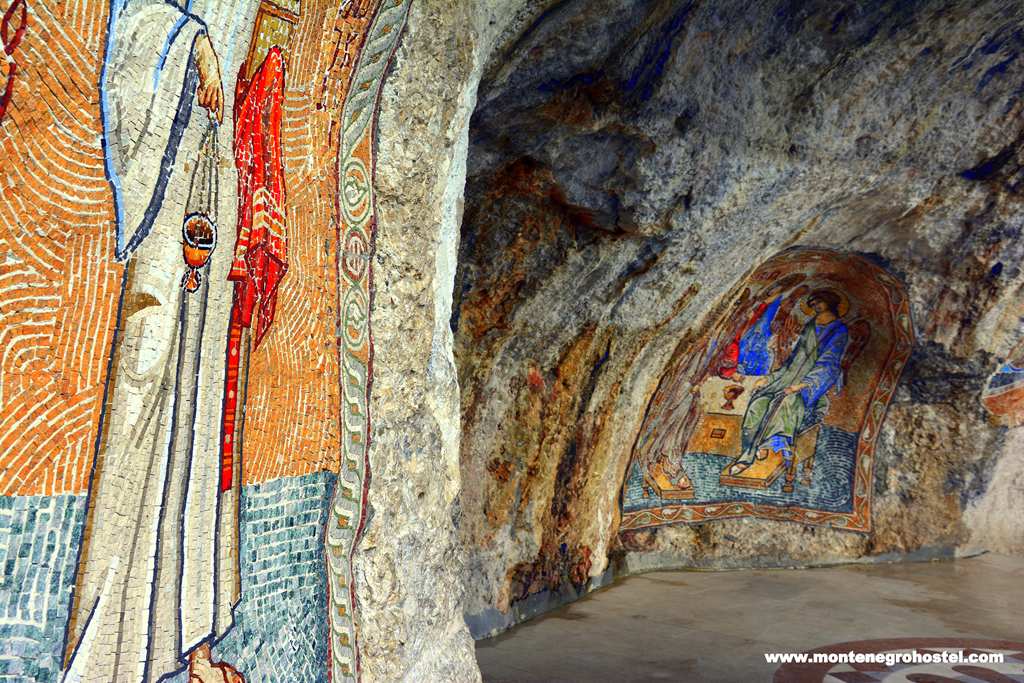
Stairs lead to the highest level with a terrace on the side and another small cave church on the other side. This one contains frescoes from 1667 done by the painter Radul, which are regarded as his best work.
Montenegro Hostel Team

